Forums
- Forums
- Axis And Allies Forum
- General Discussion
- Aviation News
Aviation News
Post a reply
- Go to Previous topic
- Go to Next topic
- Go to Welcome
- Go to Introduce Yourself
- Go to General Discussion
- Go to Screenshots, Images and Videos
- Go to Off topic
- Go to Works in Progress
- Go to Skinning Tips / Tutorials
- Go to Skin Requests
- Go to IJAAF Library
- Go to Luftwaffe Library
- Go to RAF Library
- Go to USAAF / USN Library
- Go to Misc Library
- Go to The Ops Room
- Go to Made in Germany
- Go to Campaigns and Missions
- Go to Works in Progress
- Go to Juri's Air-Raid Shelter
- Go to Campaigns and Missions
- Go to Works in Progress
- Go to Skinpacks
- Go to External Projects Discussion
- Go to Books & Resources
-
9 years agoFri Dec 04 2015, 06:38pm
 Main AdminRAF Typhoon & Tornado aircraft from RAF Lossiemouth & RAF Marham have deployed to RAF Akrotiri to join coalition operations.
Main AdminRAF Typhoon & Tornado aircraft from RAF Lossiemouth & RAF Marham have deployed to RAF Akrotiri to join coalition operations.
Supported by A400M Atlas from RAF Brize Norton.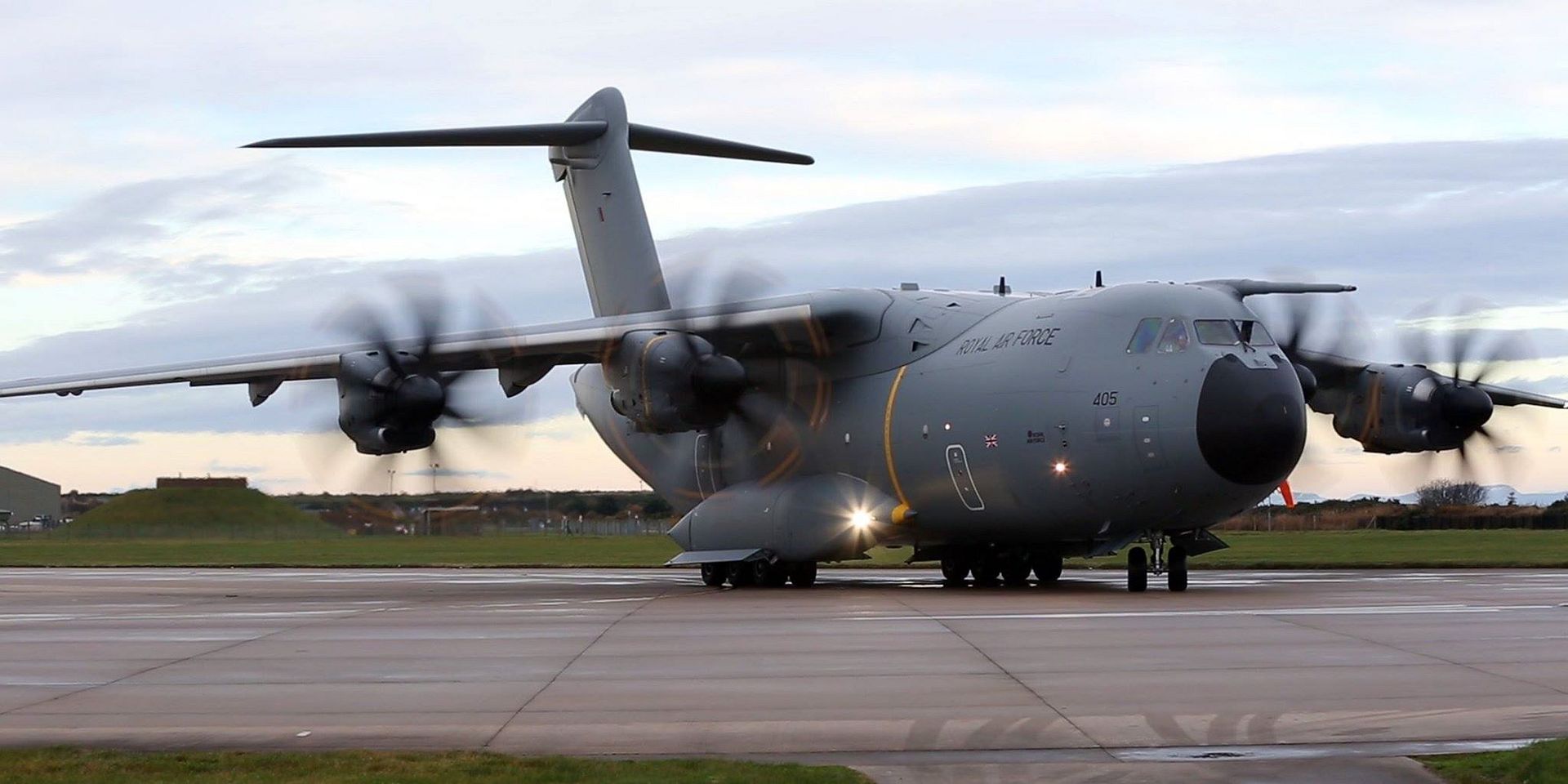

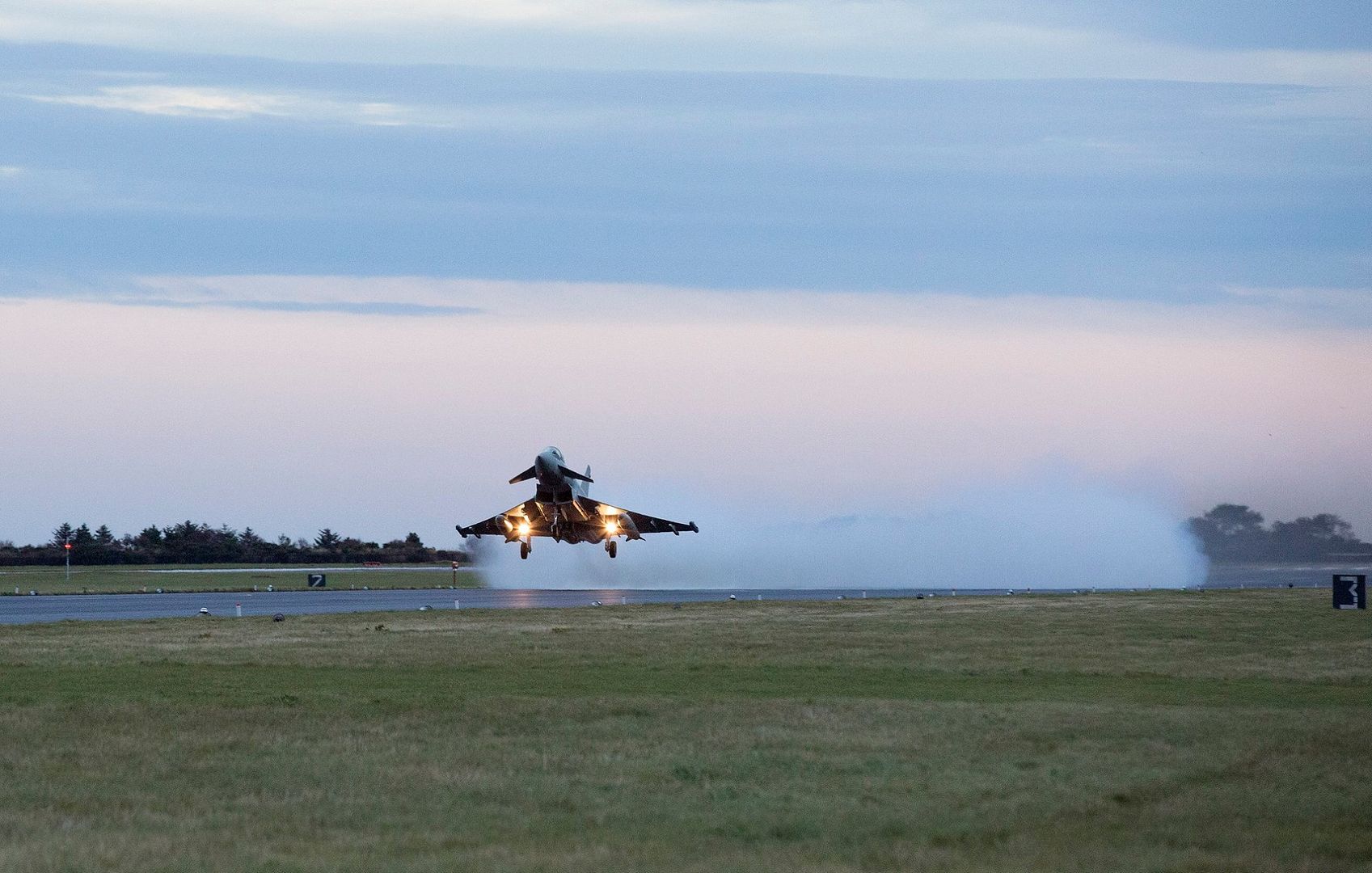
LANGLEY AFB, Va. --- U.S. service members will partner with members of the United Kingdom's Royal Air Force (RAF) and the French Air Force (FrAF) for the inaugural Trilateral anti-access/area denial exercise scheduled for Dec. 2-18, 2015, at Langley Air Force Base, Virginia.
The exercise, hosted by the 1st Fighter Wing (FW), will focus on operations in a highly-contested operational environment through a variety of simulated adversary scenarios. According to U.S. Air Force Col. Pete Fesler, the commander of the 1st FW, the intent of the exercise is to gain an understanding of the logistics, support requirements, capabilities, tactics, techniques and procedures associated with the integrated operation of coalition front-line fighters.
"The RAF and FrAF are our vital strategic partners and allies in the current fight against extremism, and will be in any foreseeable future conflict," said Fesler. "The trilateral exercise gives us an opportunity to train together in realistic counter-air and strike scenarios. This training is critical to ensure that we have day-one interoperability for future contingency operations."
According to Fesler, international exercises like the Trilateral Exercise have helped the 1st FW learn to work with coalition partners in the past, such as during the Western Zephyr exercise in 2015, where the 1st FW worked with the RAF to enhance joint capabilities.
More than 500 people will be involved in the exercise, consisting of approximately 225 personnel from the U.S. Air Force, 175 from the RAF and 150 from the FrAF.
According to Fesler, partnering with coalition forces for training is critical to ensuring the 1st FW and its allies are ready to execute their mission when called upon.
The exercise will not only feature the U.S.'s Raptor, but also the RAF's Typhoon and the FrAF's Rafale as primary aircraft. The Trilateral Exercise will be the first time these coalition aircraft have flown together. Adversary aircraft will be replicated by the U.S.'s F-15E Strike Eagles and T-38 Talons. The U.S.'s Airborne Warning and Control System, as well as U.S. and FrAF tankers will also provide support during the exercise.
While there will be more aircraft flying out of Langley, the level of noise in the surrounding area should be no different than normal.
The Blue Angels F/A-18 number seven aircraft stands still after landing at Marine Corps Air Station Cherry Point, N.C., Dec. 3, 2015. The 2016 MCAS Cherry Point air show, which will feature the U.S. Navy Blue Angels flight demonstration team, is scheduled for April 29 and 30, and May 1, which includes a Friday night show and day-long shows on Saturday and Sunday. (U.S. Marine Corps photo by Pfc. Nicholas P. Baird/Released)
A U.S. Air Force F-16 Fighting Falcon fighter aircraft, assigned to the 18th Aggressor Squadron at Eielson Air Force Base, Alaska, leaves a hangar into minus 9-degree temperatures Dec. 1, 2015, for a sortie in the Joint Pacific Alaska Training Range Complex (JPARC). The Aggressors fly rain or shine, barring extreme inclement weather, to provide unparalleled training to U.S. and partner nations in the JPARC, the world?s largest instrumented air, ground and electronic combat training range. (U.S. Air Force photo by Staff Sgt. Shawn Nickel/Released)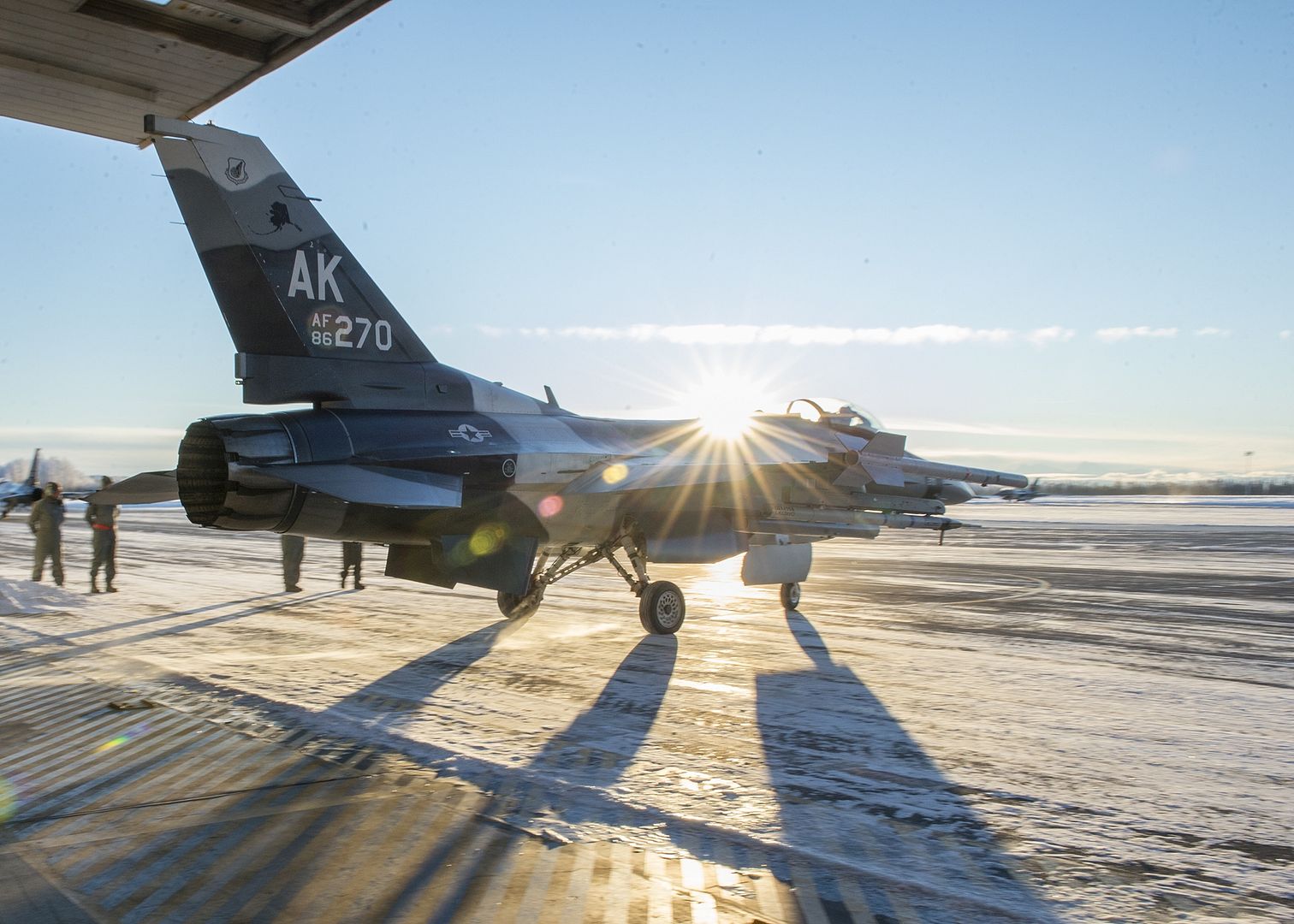
-
9 years agoMon Dec 07 2015, 08:09pm
 Main AdminStaff and fast jet students from RAF Valley?s 208(R) Squadron have recently returned from taking part in Exercise Napoleon Sphinx at French Air Force Base Solenzara.
Main AdminStaff and fast jet students from RAF Valley?s 208(R) Squadron have recently returned from taking part in Exercise Napoleon Sphinx at French Air Force Base Solenzara.
The squadron deployed five Hawk TMk1 aircraft to the base ? on the Mediterranean island of Corsica - to experience operating from a foreign location and to further the training of the students on their tactical weapons course.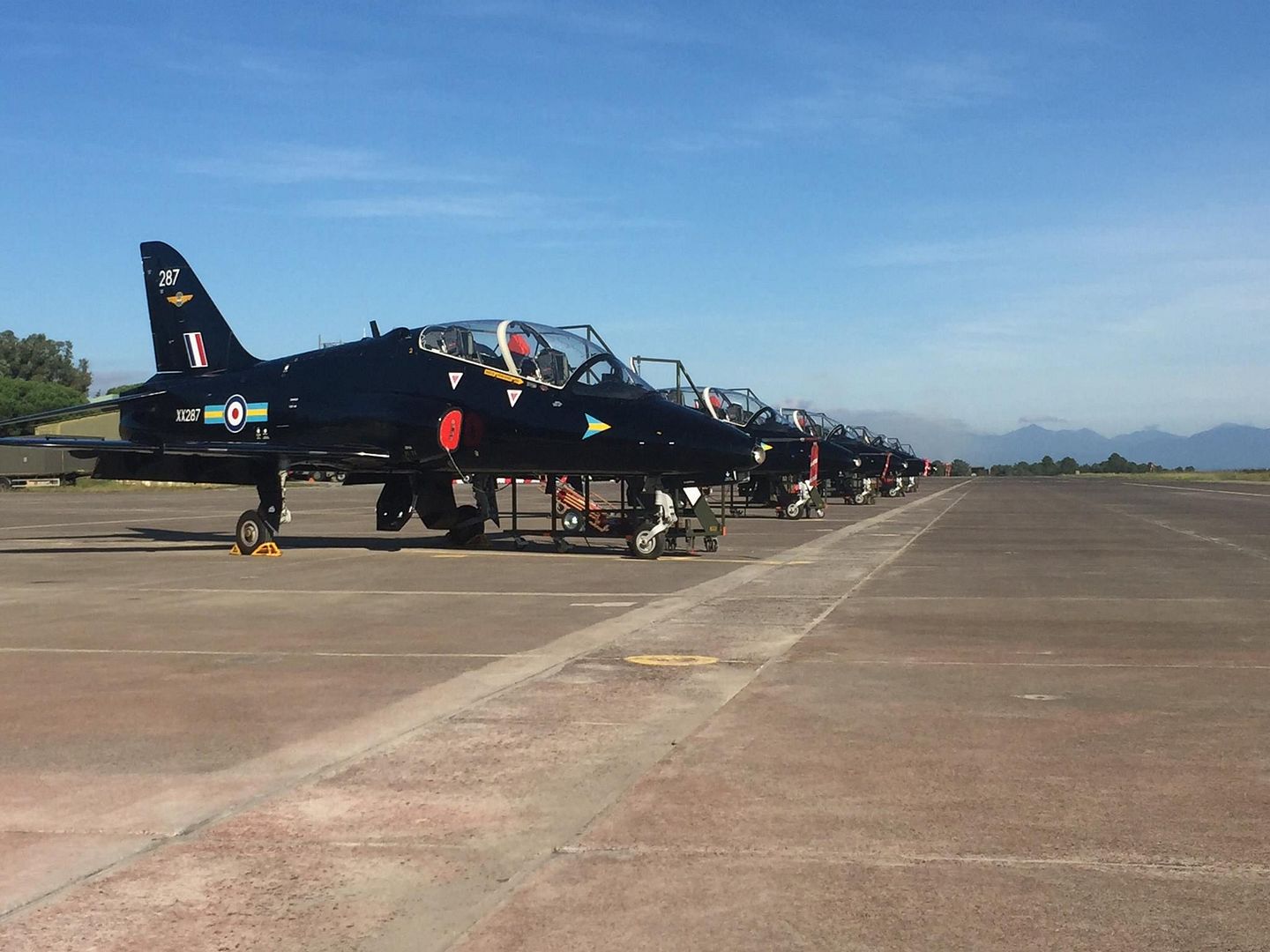
208(R) Squadron is one of the RAF?s advanced fast jet training squadrons and operates the BAE Systems Hawk TMk1 in both the advanced flying training and tactical weapons training role. The squadron is tasked with the training of RAF, Royal Navy and some international defence training students. This training involves navigation, instrument flying, formation flying, low level attack, and air combat ? the latter being the focus of the detachment.
The detachment to Corsica provided the opportunity for squadron personnel to operate from a foreign location, using foreign air traffic control and flying in different airspace to Anglesey and North Wales. For the students, this skill will be essential when they move on to the fast jets front line due to the expeditionary nature of both RAF and Royal Navy operations. The favourable weather conditions in the Med also provided the perfect opportunity for training to be achieved and the squadron was able to fly over 80 sorties in just 6 flying days.
Wing Commander Chris Kidd, Officer Commanding 208(R) Sqn said: ?I am extremely pleased. The detachment has been a huge success due to the hard work and organisation of all involved. I am particularly impressed with the students who managed to complete the entire basic fighter manoeuvre phase in only 6 days!?
Flying was not the only focus of the detachment and squadron members were keen to experience the force development opportunities on offer in Corsica. One of the highlights of this was a ?staff ride? to Calvi. This provided the opportunity to view the famous Napoleonic citadel which was at the heart of the siege of Calvi during the Napoleonic Wars.
Operating from a foreign airfield not only provides a great experience for the students, but it also continues to foster close links with the United Kingdom?s allies. Wing Commander Kidd again: ?The support provided by the French Air Force was first class throughout the whole detachment. Also, as we were deployed over Remembrance Day, it was a great honour and a privilege to be invited to lay a wreath alongside our French allies at the local remembrance parade, further reinforcing the close links we have between our two nations. The flying rate which the squadron achieved was due to a real team effort across the board, from the instructors, the student pilots, the support staff and the engineers, both in Solenzara and those working hard back at RAF Valley. 208(R) Sqn relies heavily on industry partners to achieve its task and the support provided by BAE Systems and Babcock Defence Services was critical to the success of the detachment?.
Editor: Sqn Ldr Williams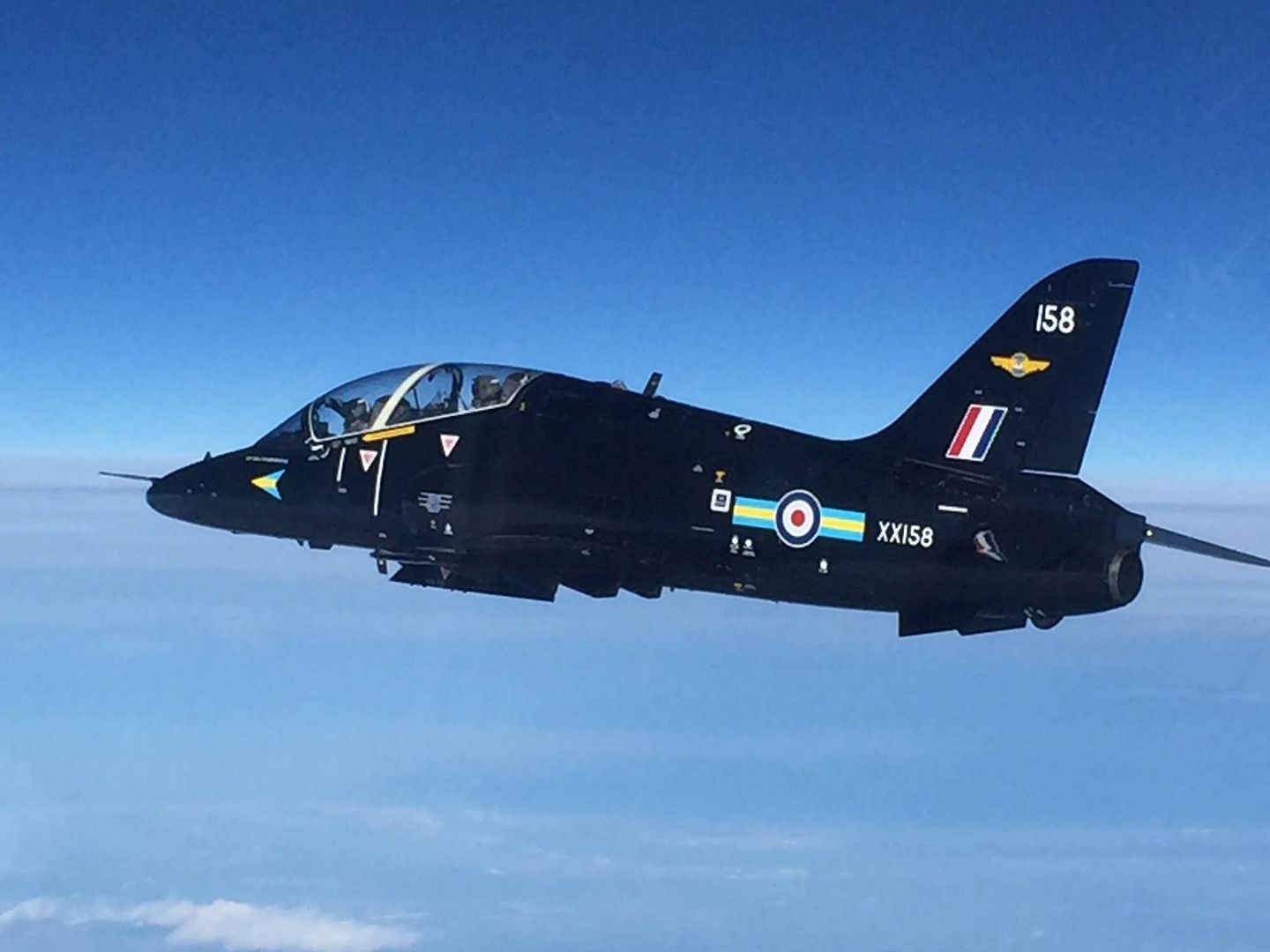
Col. Henry Rogers, the 455th Expeditionary Operations Group commander, takes off on a sortie in an F-16 Fighting Falcon with the 421st Expeditionary Fighter Squadron at Bagram Airfield, Afghanistan, Nov. 27, 2015. Rogers reached the 3,000-flying-hour milestone and 1,000-combat-hour milestone while serving on his eighth combat deployment flying F-16s. (U.S. Air Force photo/Tech. Sgt. Robert Cloys)
-
 Main AdminDOVER AIR FORCE BASE, Del. (AFNS) -- The 436th Maintenance Squadron Isochronal Maintenance Dock helps keep the largest aircraft in the Air Force inventory, the C-5 Galaxy, in the air to deliver cargo, combat equipment and humanitarian relief supplies to anywhere in the world whenever called upon.
Main AdminDOVER AIR FORCE BASE, Del. (AFNS) -- The 436th Maintenance Squadron Isochronal Maintenance Dock helps keep the largest aircraft in the Air Force inventory, the C-5 Galaxy, in the air to deliver cargo, combat equipment and humanitarian relief supplies to anywhere in the world whenever called upon.
In an effort to maximize the lifespan of the C-5 fleet, the aircraft goes through a series of inspections that vary in recurrence and depth: preflight, home-station check, Maintenance Steering Group-3 Minor, MSG-3 Major and Programmed Depot Maintenance.
All C-5 aircraft in the inventory undergo an eight-year scheduled maintenance timeline through the MSG-3 process. The cycle for these inspections goes as such: PDM, Minor ISO, Major ISO, Minor ISO then starting back at PDM. Each inspection is two years apart and continues for the lifecycle of the weapon system. Dover Air Force Base has the only facility in the Air Force that is able to conduct Major ISO inspections.
The MSG-3 Major inspection takes approximately 55 days, depending on what services and repairs the aircraft needs. Maj. James Wall, the 436th MXS commander, said at the 55-day rate the ISO dock is able to turn out nine aircraft a year, which keeps the entire C-5 fleet on its eight year maintenance cycle.
During an ISO inspection, aircraft maintainers strip down the C-5 looking for any deficiencies, faults, cracks or any other problem in every system of the aircraft.
First Lt. J. Spada, the 436th MXS maintenance flight commander, said it is critical that all maintenance is performed right the first time during a major-level inspection. If something is missed during a major-level inspection, the aircraft could suffer until it undergoes another major- or depot-level inspection.
"The biggest difference between a major and a minor inspection is the amount of depot-level work that is done during the major inspection," Spada said. "We also check up on critical systems that have a high-failure rate and perform a lot of preventative maintenance that has shown, if done in a four-year interval, it will help the aircraft become more reliable as it progresses on."
With so much riding on these major inspections, there is little to no room for error. Wall said it takes a special type of maintainer to work in the one-of-a-kind facility.
"As far as C-5s go, the most industrialized maintenance facility in the Air Force I would argue is the ISO dock here," Wall said. "The technicians that conduct the Major ISO inspections are of a higher caliber maintainer and they have to be because of the environment that they are working in."
Tech. Sgt. Kevin Taylor, 436th MXS ISO dock floor chief, is one of those elite maintainers and helps recruit Airmen to work in the ISO dock. Taylor said typically C-5 crew chiefs are recruited for the job, but there are a host of other specialties that Airmen fill.
"There is more complicated maintenance in a major inspection than you'll find anywhere else at a field-level facility," Taylor said. "Because of the technical difficulties that we see during a Major ISO, we have to vet and obtain only the best specialists and crew chiefs to work in this dock."
Approximately 30 Airmen from the 436th MXS have also been assigned to work at the 439th Airlift Wing at Westover Air Reserve Base, Massachusetts. The integration of the two wings began in 2008 as a measure to assist the 439th MXS with Minor ISO inspections of the entire Air Force's C-5 fleet.
"Prior to 2008, the average Westover Minor ISO inspection took 40-plus days to accomplish," said Master Sgt. Peter Michaud, the 436th MXS Operation Location Alpha detachment chief. "With the integration of the 436th MXS OLA, 439th MXS and the advent of the MSG-3 process, the ISO was reduced by 26 days down to an 18 day average."
With recent upgrades to the C-5M Super Galaxy, the Air Force projects having C-5s in their fleet beyond 2040. However, it will be the responsibility of the Airmen in the 436th MXS ISO dock to ensure the C-5s see that date.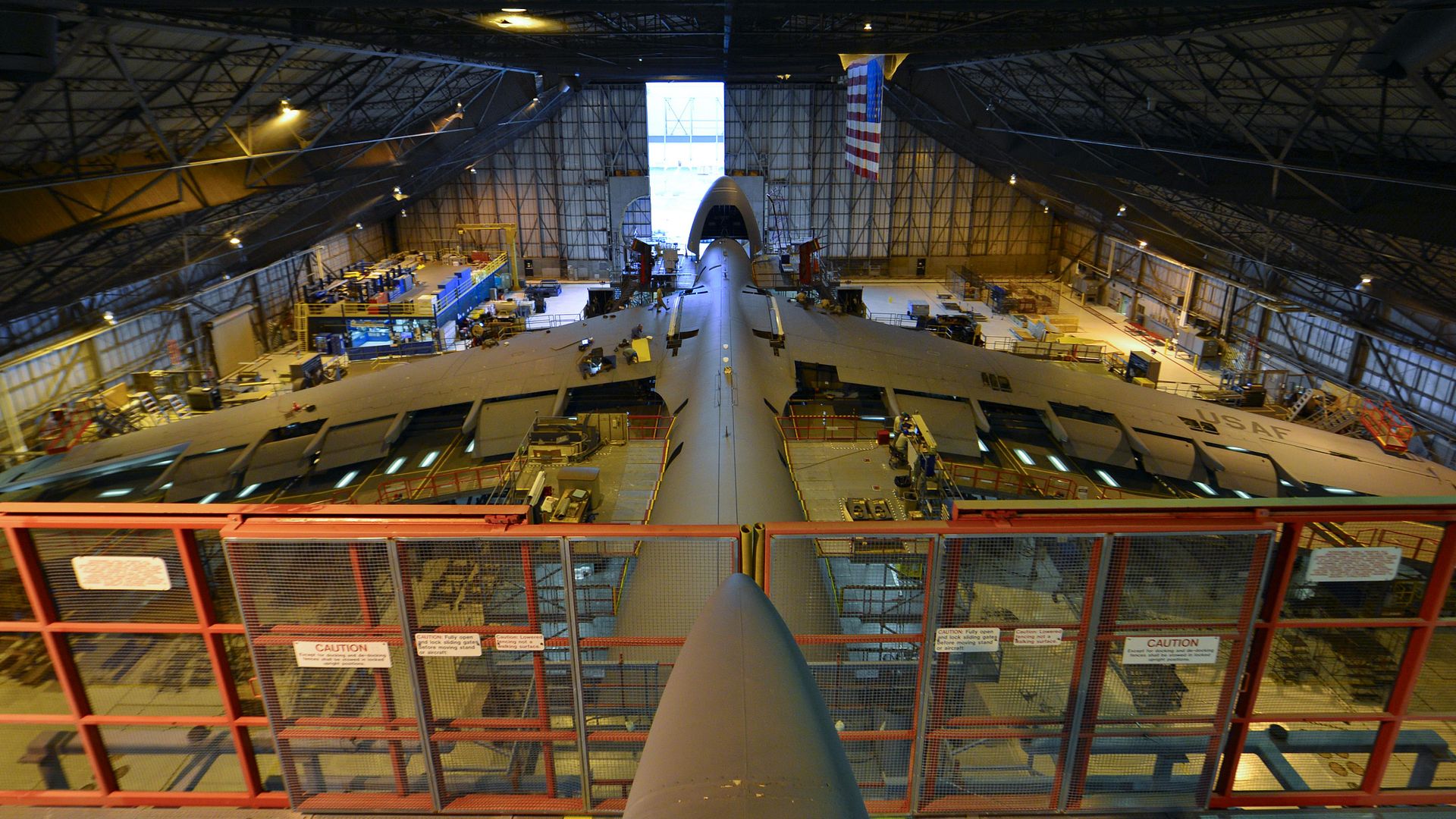
A U.S. Air Force KC-135 Stratotanker from the 340th Expeditionary Air Refueling Squadron prepares to refuel an F-18 from the Royal Canadian Air Force over Southwest Asia in support of Operation Inherent Resolve, Dec. 4, 2015. OIR is the coalition intervention against Daesh. (U.S. Air Force photo's by Tech. Sgt. Nathan Lipscomb)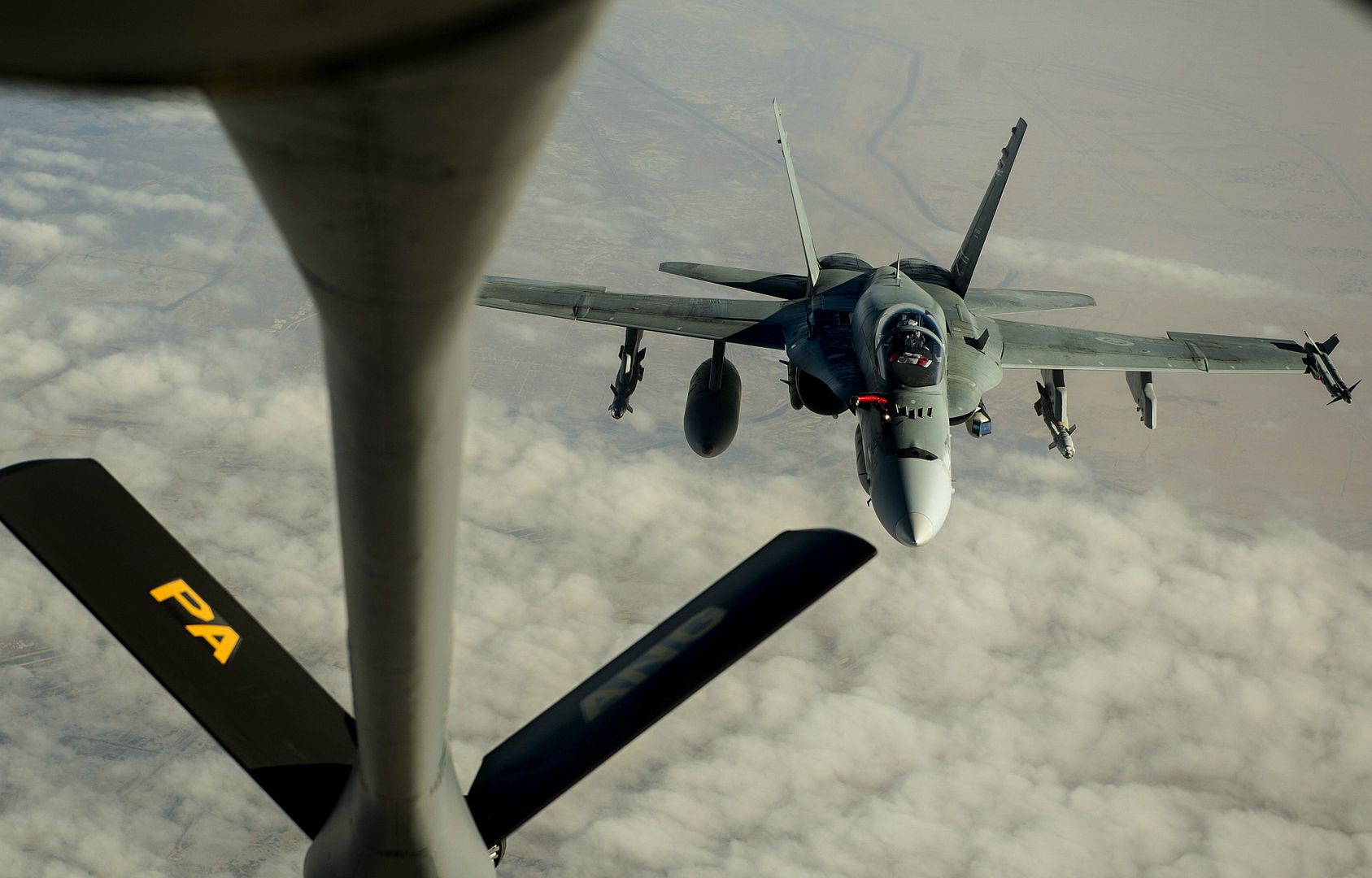

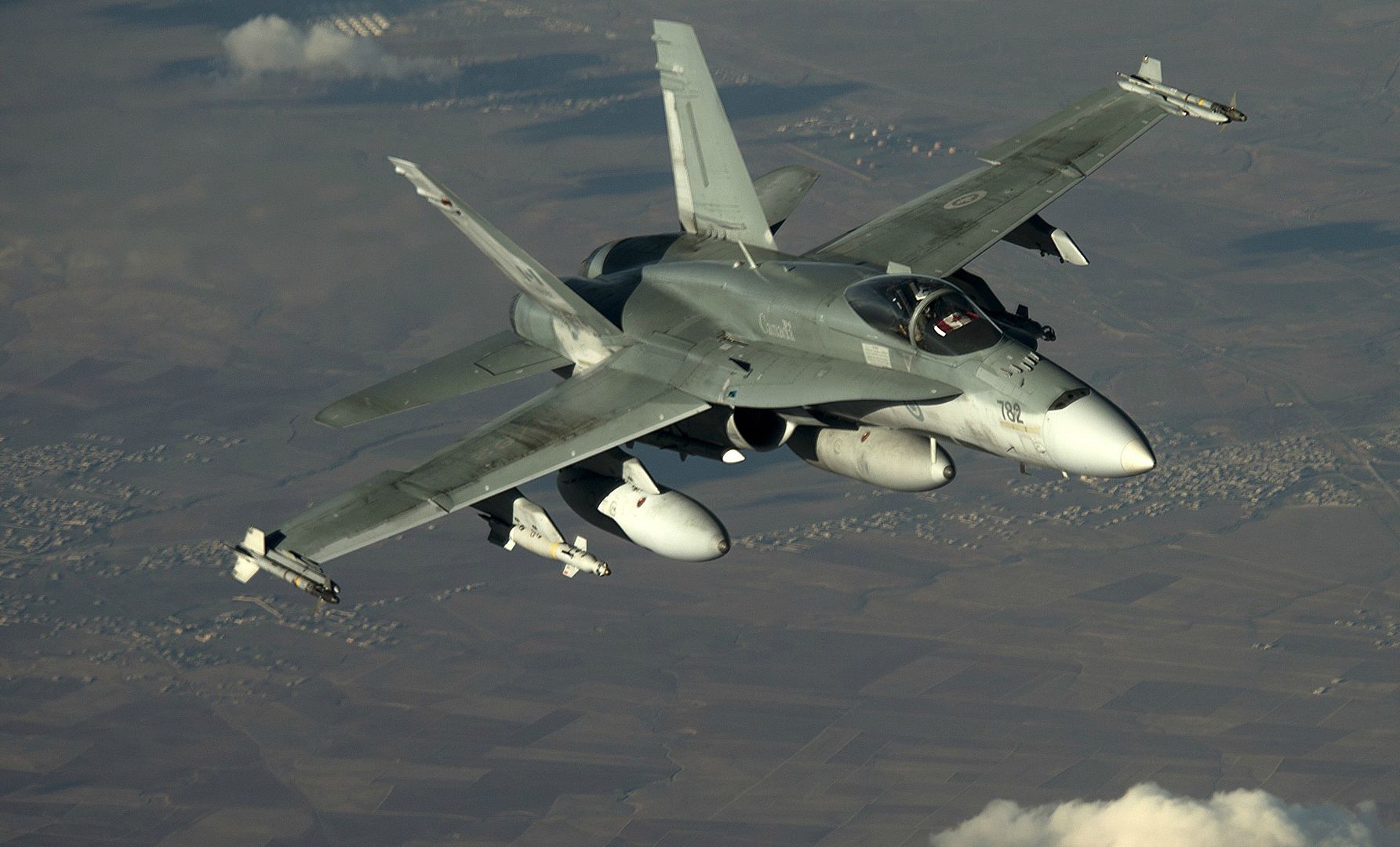
Not aviation, but fascinating
KENNEBEC RIVER (Dec. 7, 2015) The future USS Zumwalt (DDG 1000) is underway for the first time conducting at-sea tests and trials on the Kennebeck River. The multimission ship will provide independent forward presence and deterrence, support special operations forces, and operate as an integral part of joint and combined expeditionary forces. (U.S. Navy photo's courtesy of General Dynamics Bath Iron Works/Released)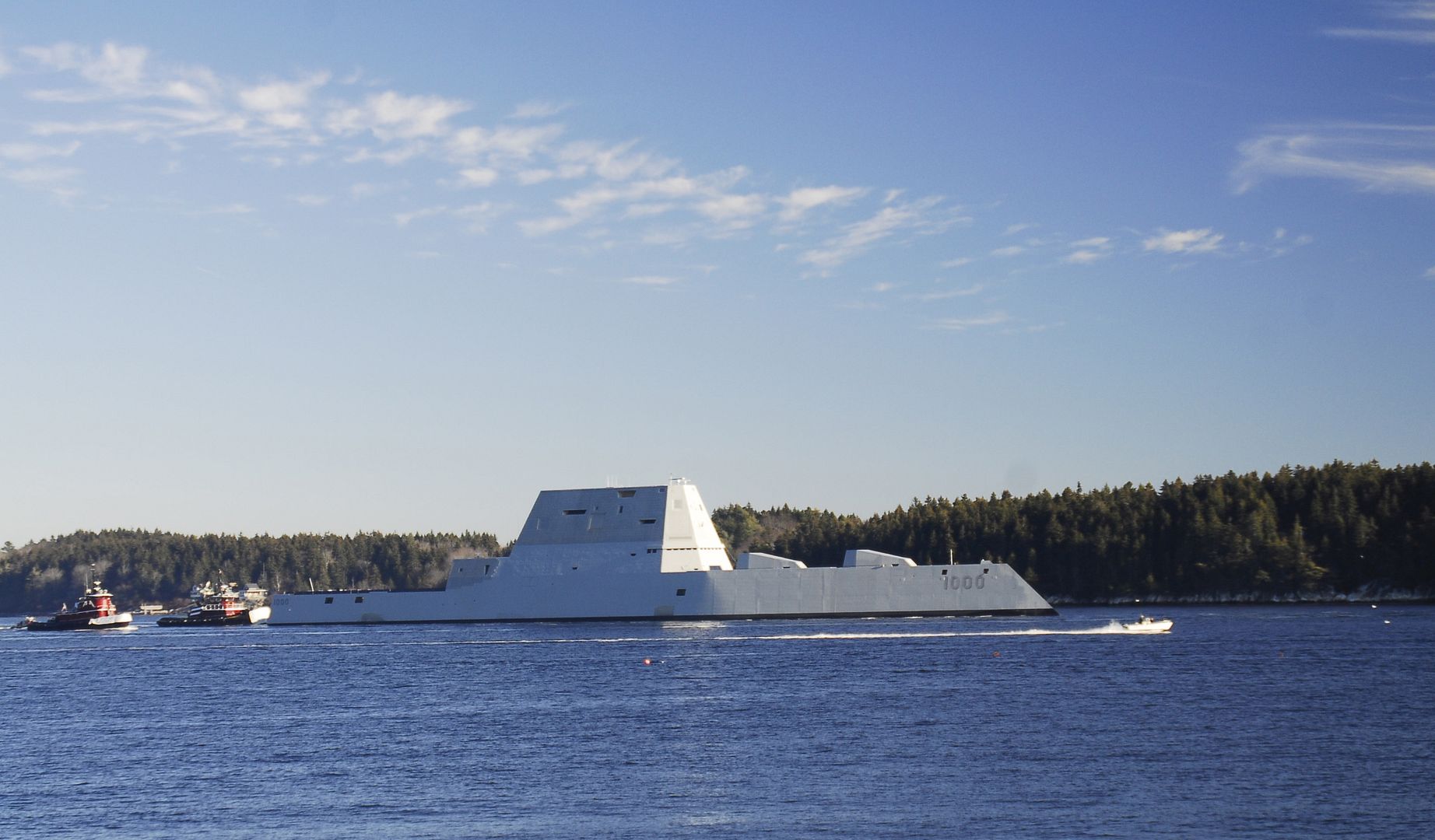
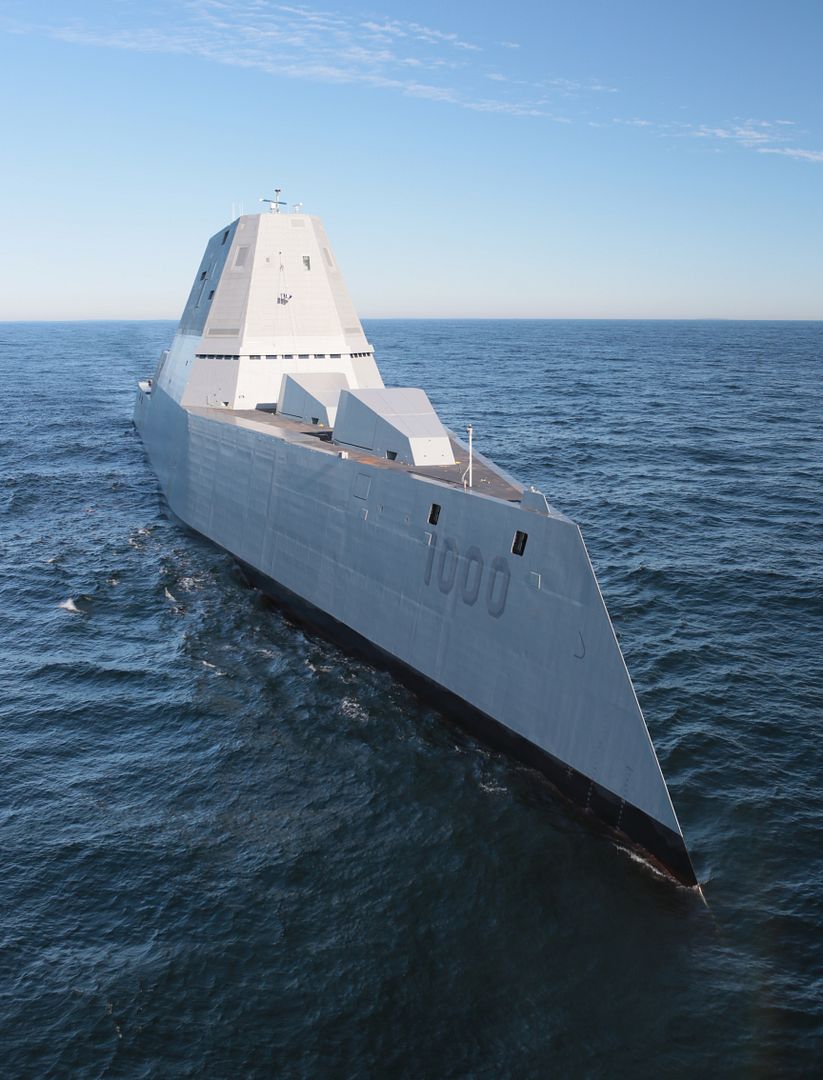
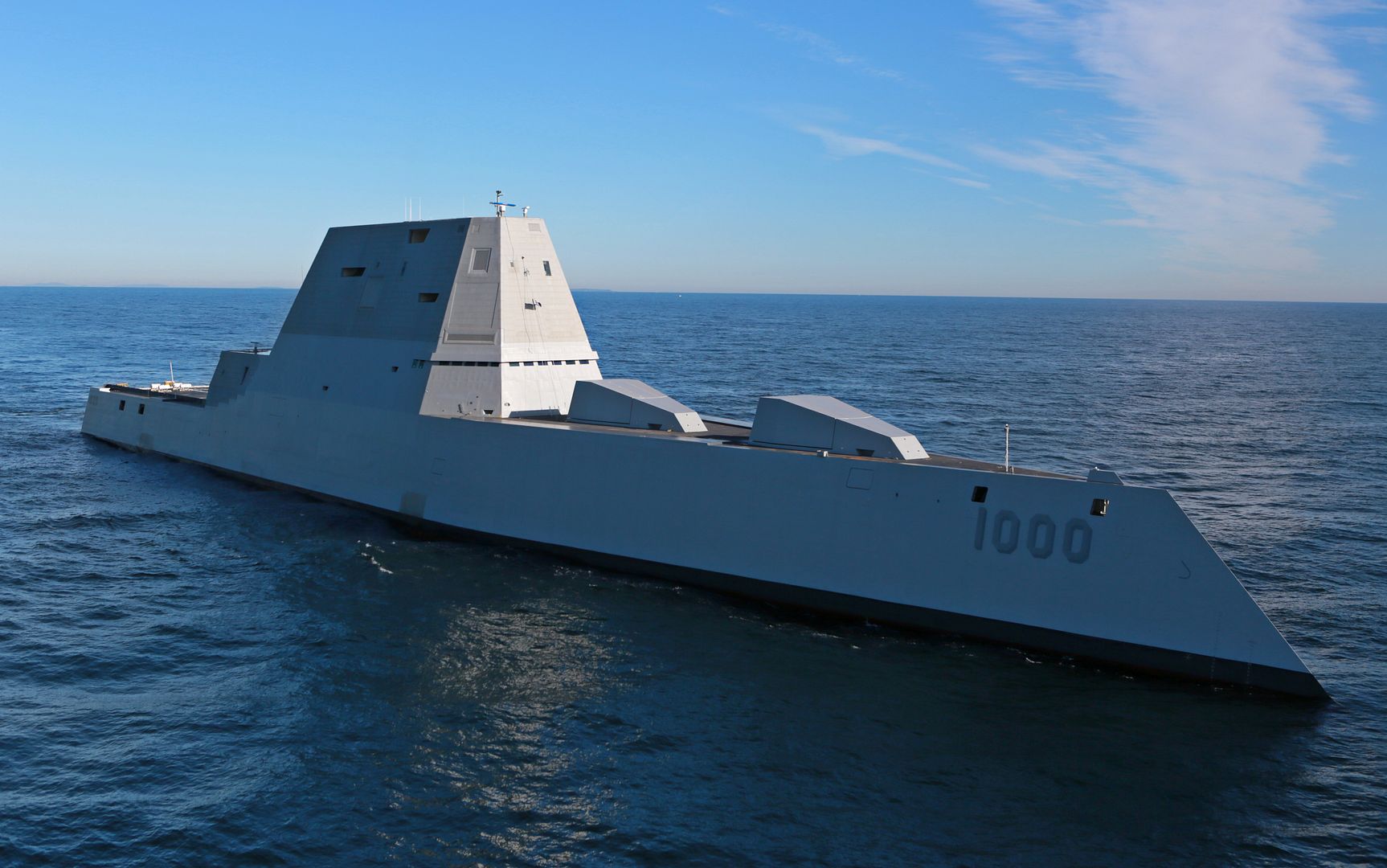
PHILADELPHIA, Dec. 7, 2015 ? Boeing [NYSE: BA] has delivered its 14th Mk6 Chinook, completing the United Kingdom?s most recent order and growing the RAF Chinook fleet to 60 aircraft. The order completion coincided with the 35th anniversary of Chinook operations for the U.K.
?Since they were introduced into service in 1980, our Chinook fleet has played an integral supporting role for British forces and have been deployed on an almost continuous basis since,? said Royal Air Force Air Vice-Marshal Julian Young, director of Helicopters in the United Kingdom?s Defence Equipment & Support organization. ?These new Mark-6 helicopters will significantly enhance our existing heavy-lift helicopter and Special Forces capability. Our overall fleet of 60 Chinooks will support our frontline troops in current and future operations for decades to come.?
The RAF has operated Chinooks in every major NATO engagement since 1980 and on virtually every continent. The service uses its Chinooks to perform troop transport, air assault and medical evacuation missions. In addition, the RAF and U.K. Ministry of Defence Equipment and Support have worked closely with Boeing to implement performance-based logistics initiatives to increase the readiness of Britain?s Chinook fleet. The Mk6 Chinook has a new, machined monolithic airframe, U.K.-specific avionics, rescue hoist and interoperable communication and navigation equipment.
?As our company approaches its centennial, milestones such as this one demonstrate the significance of Boeing?s long and close partnership with the United Kingdom,? said Steve Parker, vice president, Cargo Helicopters and Boeing H-47 Chinook program manager. ?The new Mk6 Chinooks offer the Royal Air Force a modern, capable asset for meeting its mission requirements today and well into the future.?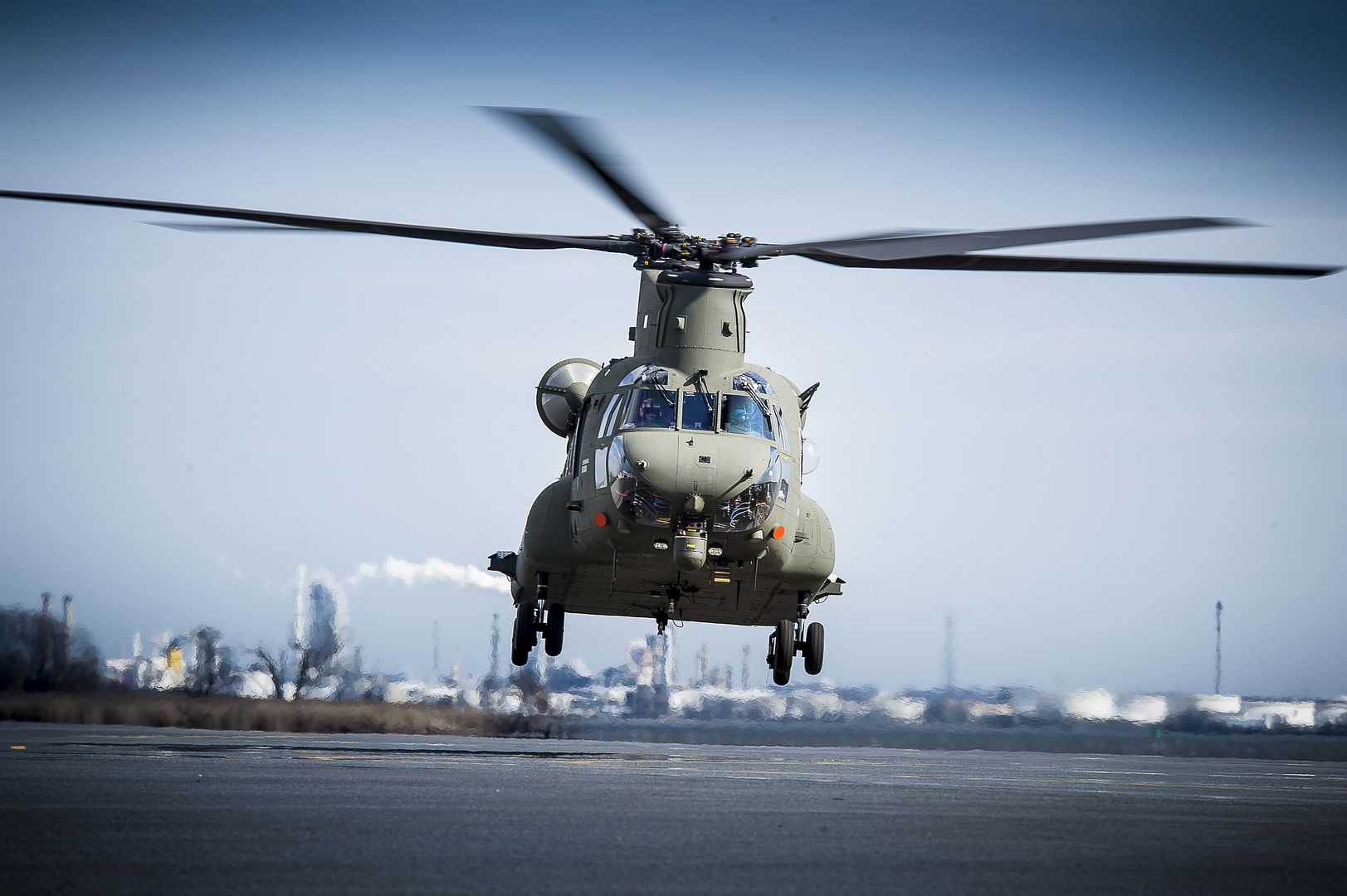
-
9 years agoWed Dec 09 2015, 04:50pm
 Main AdminTASS Defense; published Dec 08, 2015
Main AdminTASS Defense; published Dec 08, 2015
MOSCOW --- The trials proving the flight performance of Russian fifth-generation fighter T-50 PAKFA (Russian acronym for future tactical fighter) have been virtually completed, Russian Deputy Defense Minister Yuri Borisov told the Russia 24 television broadcaster in an interview.
"Several aircraft are flying to test the avionics suite now. The tests of their flight characteristics have virtually been completed," he said.
The delivery of the PAKFA is due in 2017. The T-50 powered by the so-called Stage II engine (or Product 30) will first fly in 2018. The Defense Ministry is to receive a total of 55 fifth-generation fighter before 2020. Later, Borisov warned that the ministry could adjust its PAKFA order due to the new economic situation and high performance of the Sukhoi Su-35S (NATO reporting name: Flanker-E) multirole fighter.
The PAKFA has kicked off the testing of its weapons, with their characteristics checking with the manufacturer?s performance ratings. Air Force test pilots are testing the T-50?s capabilities at the Chkalov State Flight Test Center in Akhtubinsk.
The trials of the multifunction integrated active electronically scanned array radar onboard the fifth-generation fighter are on schedule.
The T-50?s maiden flight took place in January 2010. Five aircraft of the type are in trials now.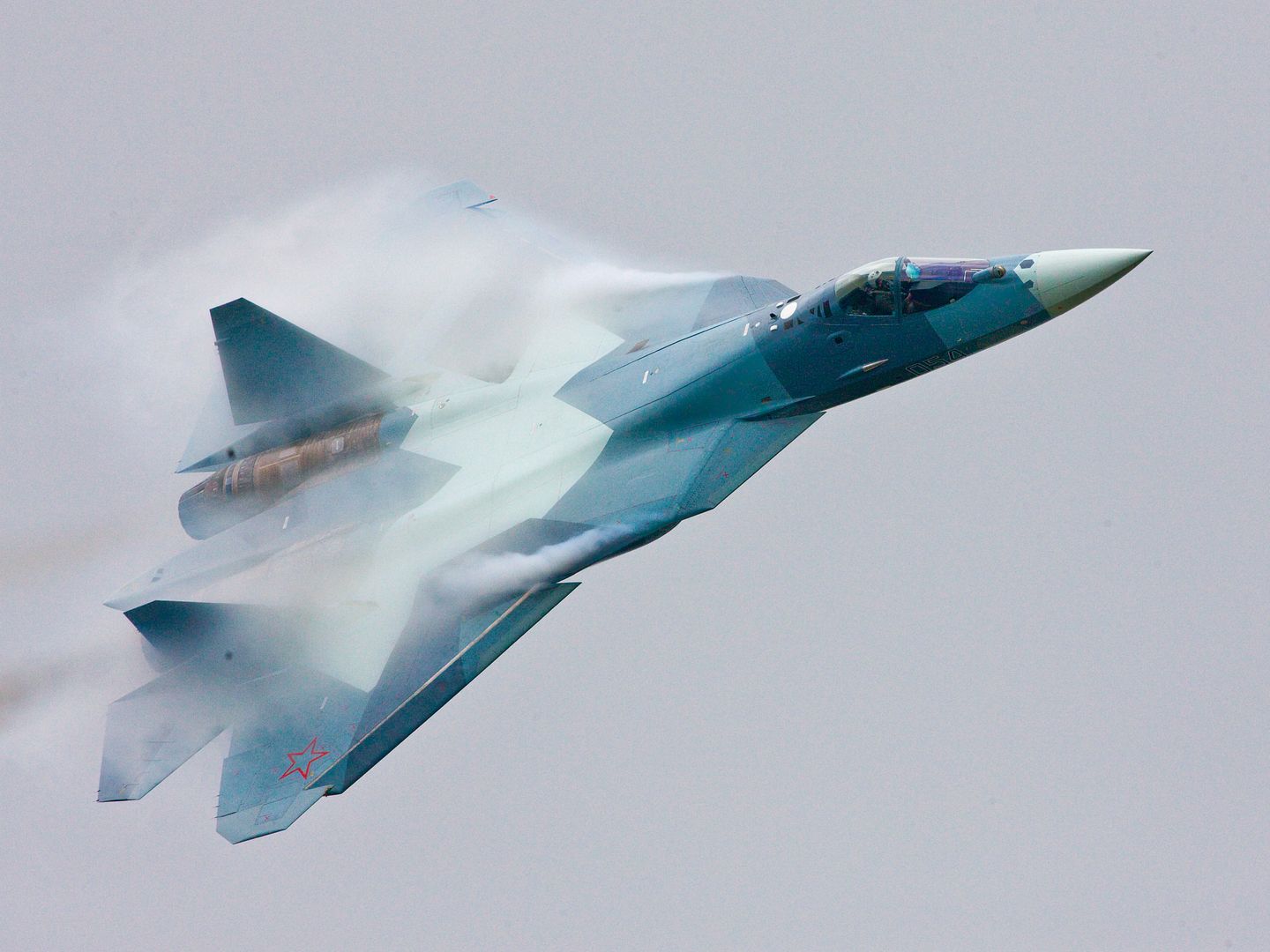
TASS Defense; published December 9, 2015
MOSCOW --- Russian aircraft have ramped up their air strikes against the Russia-banned Islamic State terrorist group and other extremist organizations in Syria since December 5, the Russian Defense Ministry? press office said in a news release on Wednesday.
A massive air strike has been delivered by Tupolev Tu-22M3 (NATO reporting name: Backfire-C) long-range bombers operating out of Mozdok Air Force Base in Russia, the air task force out of Hmeimim air base and a submarine from the Mediterranean.
Over the past four days, "the Tu-22M3 long-range bombers have flown from Mozdok AFB 60 sorties against 30 terrorist targets in the provinces of al-Raqqa and Deir al-Zor", the press office said in the news release.
"The tactical and Army Aviation aircraft deployed in Hmeimim air base have conducted 238 sorties, attacking 699 targets," the press office carried on.
Sukhoi Su-30SM (Flanker-H) fighters flying combat air patrols were providing air defense for the strike aircraft during the massive air attack.
"With the mission accomplished, all of the aircraft made it safely back to base," the press release stressed.
"In all, 1,920 bombs of various types have been delivered over the last four days, destroying 70 command posts, 21 terrorist training bases, six ammunition and high-explosive factories, 43 dumps, six oil storage facilities and refineries, etc.," the defense Ministry added in its news release.
"Several Kalibr submarine-based cruise missiles were launched in salvo by the Rostov-on-Don submarine for the first time. The strike eliminated two command posts of the IS terrorist organization in al-Raqqa province," the press office reported.
The Defense Ministry said the strikes had paved the way for a further advance of the Syrian Army in conjunction with other armed groups near Aleppo and Idlib, in the mountainous area of Latakia and in Palmira.
The Tu-22M3 supersonic long-range bomber is designed to attack surface targets with missiles and bombs, including the Kh-22 (AS-4 Kitchen) antiship missiles. The Tu-22M3 is a swing-wing aircraft with a maximum takeoff weight of 124 tons, a length of 42.46 m, a maximums peed of 2,000 km/h, a combat radius of 2,200 km and a service ceiling of 14,000 m. The Tu-22MR reconnaissance aircraft was derived from the Tu-22M3. According to US publication Military Balance, the Russian Air Force operates 63 Tu-22M3s and Tu-22MRs.
The Su-30SM (SM standing for ?production, modernized? in Russian) fighter is an air superiority fighter dual-hatted as a strike aircraft effective against surface targets. It is equipped with canards and thrust-vectoring engines, with these solutions making it supermaneuverable. The Su-30SM carries the Bars multirole fire control radar. The fighter?s weapons suite includes a wide array of munitions, including air-to-air missiles and precision-guided air-to-ground weapons. The Su-30SM can be used as a trainer for pilots earmarked for future single-seat fighters. The type has been built for the Russian Air Force since 2012.
The B-237 Rostov-on-Don (Improved Kilo-class) submarine is the second one in the six-ship Project 636.6 diesel-electric family designed for the Russian Navy. It was laid down in 2011 by the Admiralty Wharves Shipyard (a subsidiary of the United Shipbuilding Corporation) and launched in 2014. The Rostov-on-Don was commissioned for service with the Russian Navy in December 2014.
The Project 636.6 diesel-electric submarines are third-generation boats derived from the Project 636 diesel-electric design. They have a low acoustic signature, a submerged speed of 20 knots, a 45-day self-contained operation capability, a submerged displacement of about 4,000 tons, and a crew of over 50.
The Project 636.6 submarines feature the Kalibr precision-guided missile system with the 3M-54 and 3M-541 antiship and 3M-14 land-attack cruise missiles and upgraded radio electronics.
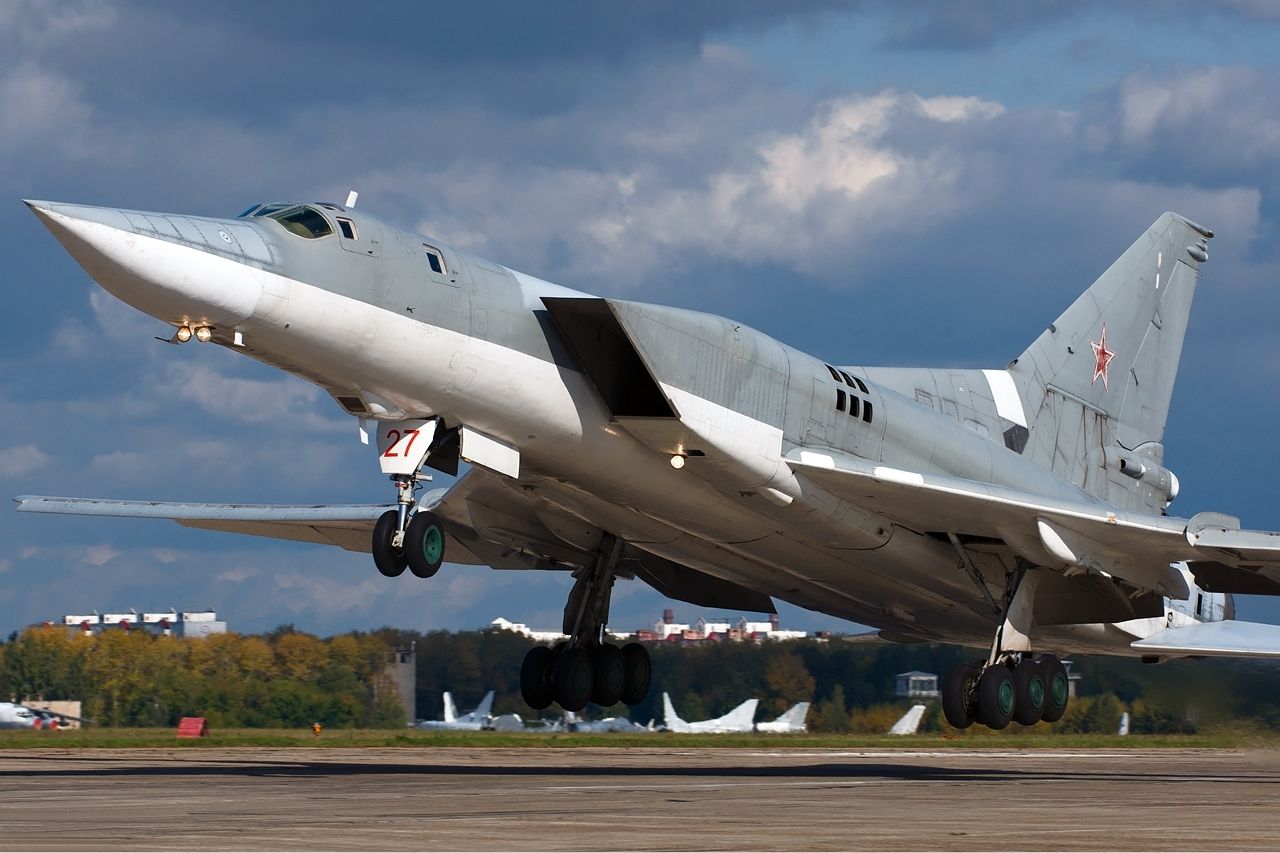
RENTON, Wash., Dec. 8, 2015 ? Today, thousands of Boeing (NYSE: BA) employees in Renton, Wash., celebrated the completion of final assembly of the first 737 MAX 8.
?Today marks another in a long series of milestones that our team has achieved on time, per plan, together,? said Keith Leverkuhn, vice president and general manager, 737 MAX, Boeing Commercial Airplanes. ?With the rollout of the new 737 MAX ? the first new airplane of Boeing?s second century ? our team is upholding an incredible legacy while taking the 737 to the next level of performance.?
The production-complete airplane rolled out of the Renton factory and into the paint hangar on Nov. 30, the precise date determined when the MAX development schedule was defined more than four years ago. Today the freshly painted 737 MAX 8, named the Spirit of Renton, was revealed to employees in a special teal version of the Boeing livery. After celebrations are complete, the airplane will undergo pre-flight preparation in the factory before departing for Renton Field to continue flight test readiness. The airplane is on track for first flight in early 2016.
With the second and third 737 MAX 8 flight test airplanes currently in final assembly and the fourth (and final) in sub-assembly, the 737 MAX remains on track for first delivery to launch customer Southwest Airlines in the third quarter of 2017.
The new single-aisle airplane will deliver 20 percent lower fuel use than the first Next-Generation 737s and the lowest operating costs: 8 percent per seat less than the A320neo.
The 737 MAX incorporates the latest technology CFM International LEAP-1B engines, Boeing-designed Advanced Technology winglets and other improvements to deliver the highest efficiency, reliability and passenger comfort in the single-aisle market. The 737 MAX 8 is the first member in Boeing?s new family of single-aisle airplanes ? the 737 MAX 7, MAX 8, MAX 200 and MAX 9 ? to begin production. The 737 MAX family has nearly 3,000 orders from 60 customers worldwide.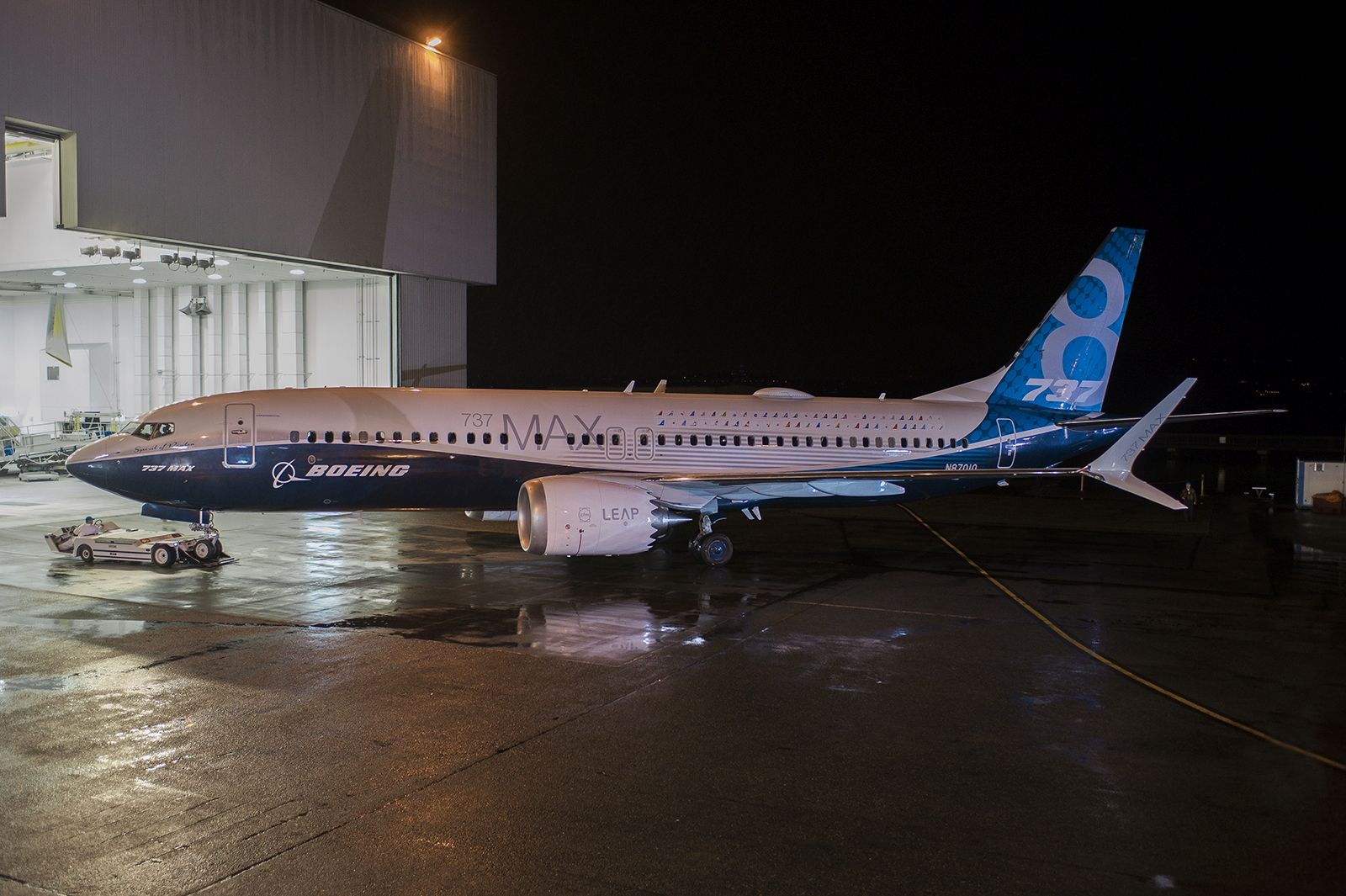
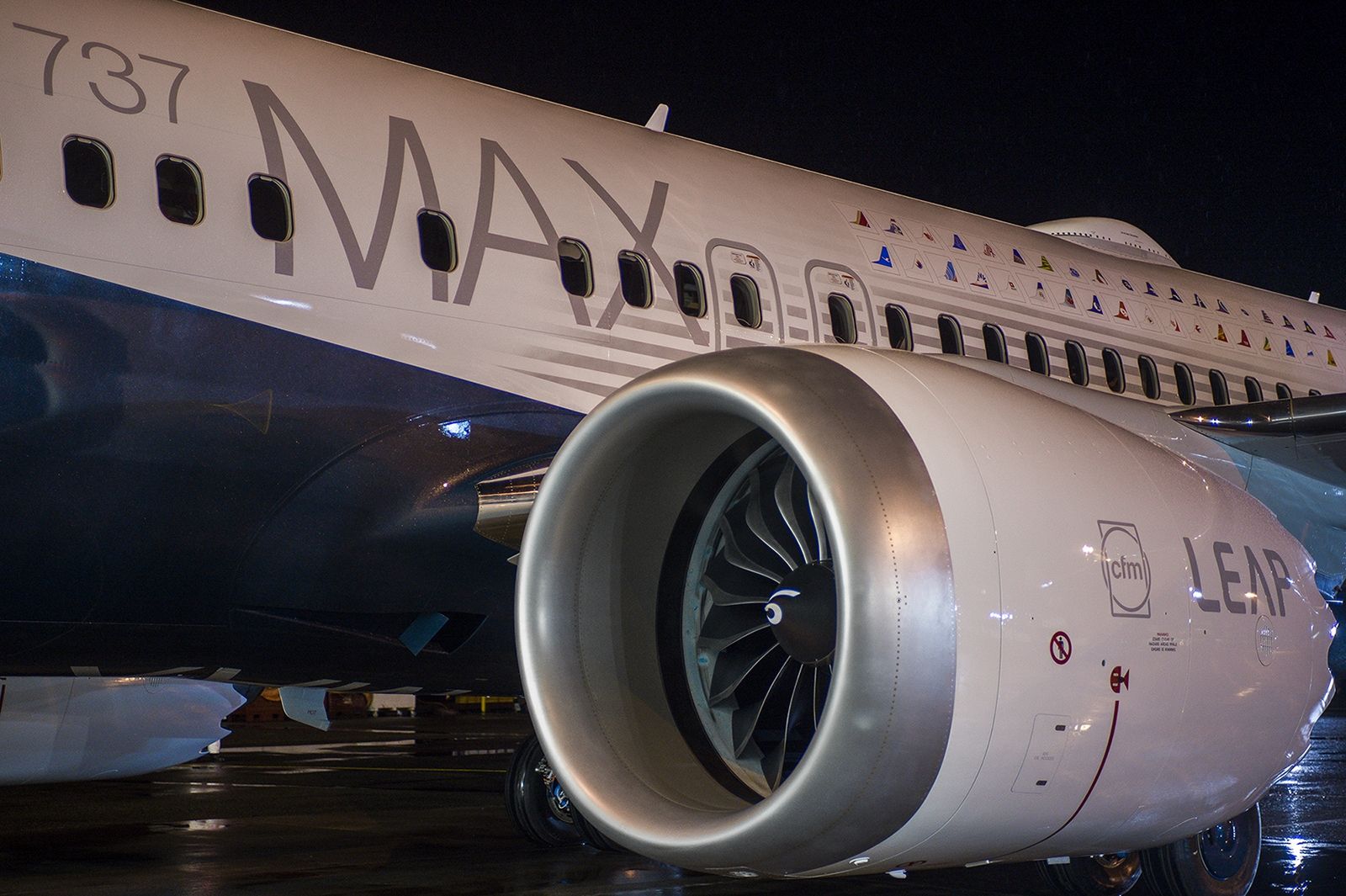
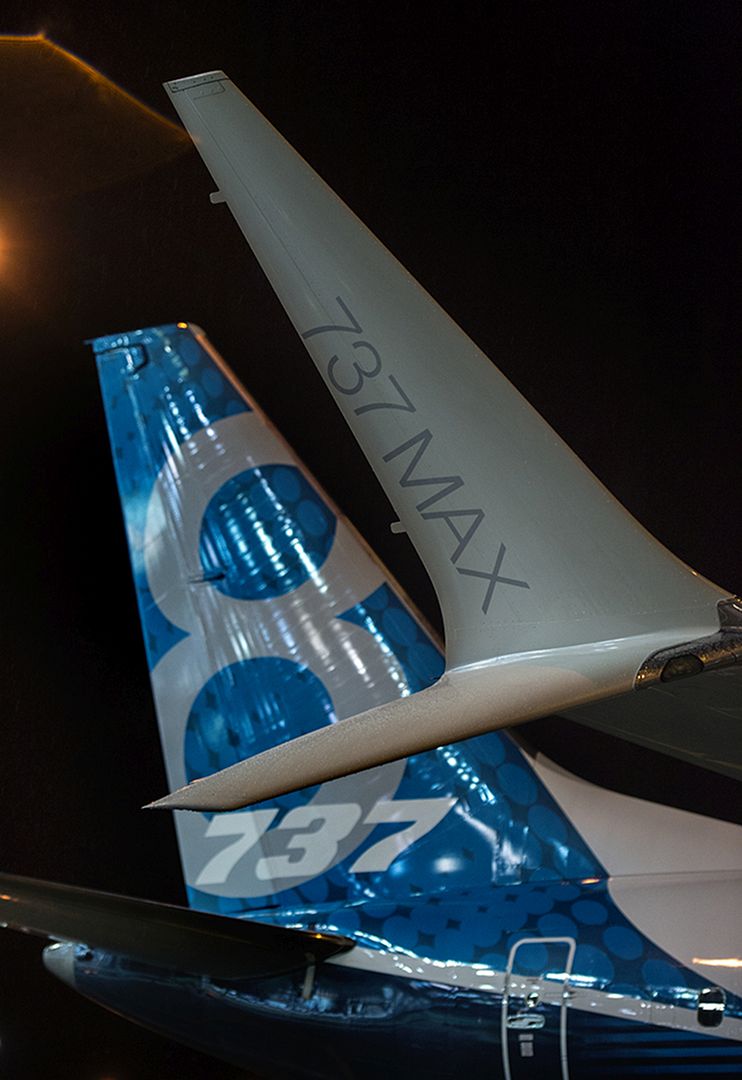
KONYA, Turkey, Dec. 9, 2015 ? Boeing [NYSE: BA] delivered the fourth and final Peace Eagle Airborne Early Warning & Control (AEW&C) aircraft to the Turkish Air Force at Konya Air Base today, completing the Turkish AEW&C fleet and enhancing Turkey?s airspace surveillance and battle management capabilities.
This final aircraft includes upgraded software for the platform and the final element of the ground support segment, the Software Support Center (SSC). Previously delivered Peace Eagles will receive the upgraded software soon.
Boeing worked with Turkish industry partners Turkish Aerospace Industries, Turkish Airlines, HAVELSAN and ASELSAN to complete the delivery of the final aircraft as well as establish technology capabilities like the Software Support Center, updated mission simulator software and mission support center software.
?Turkey is currently the only nation in this region with the AEW&C capability. By combining Boeing?s innovative engineering with the expertise provided by local Turkish industry partners, we?ve delivered an advanced world-class airborne surveillance system to our customer,? said Aysem Sargin Isil, managing director, Boeing Turkey.
Turkey, Australia and South Korea operate AEW&C platforms.
Based on Boeing?s 737-700 commercial airplane, the 737 AEW&C aircraft?s advanced radar and 10 state-of-the-art mission crew consoles can track airborne and maritime targets simultaneously. The battle management capabilities allow mission crew to direct offensive and defensive forces while maintaining continuous surveillance of the operational area.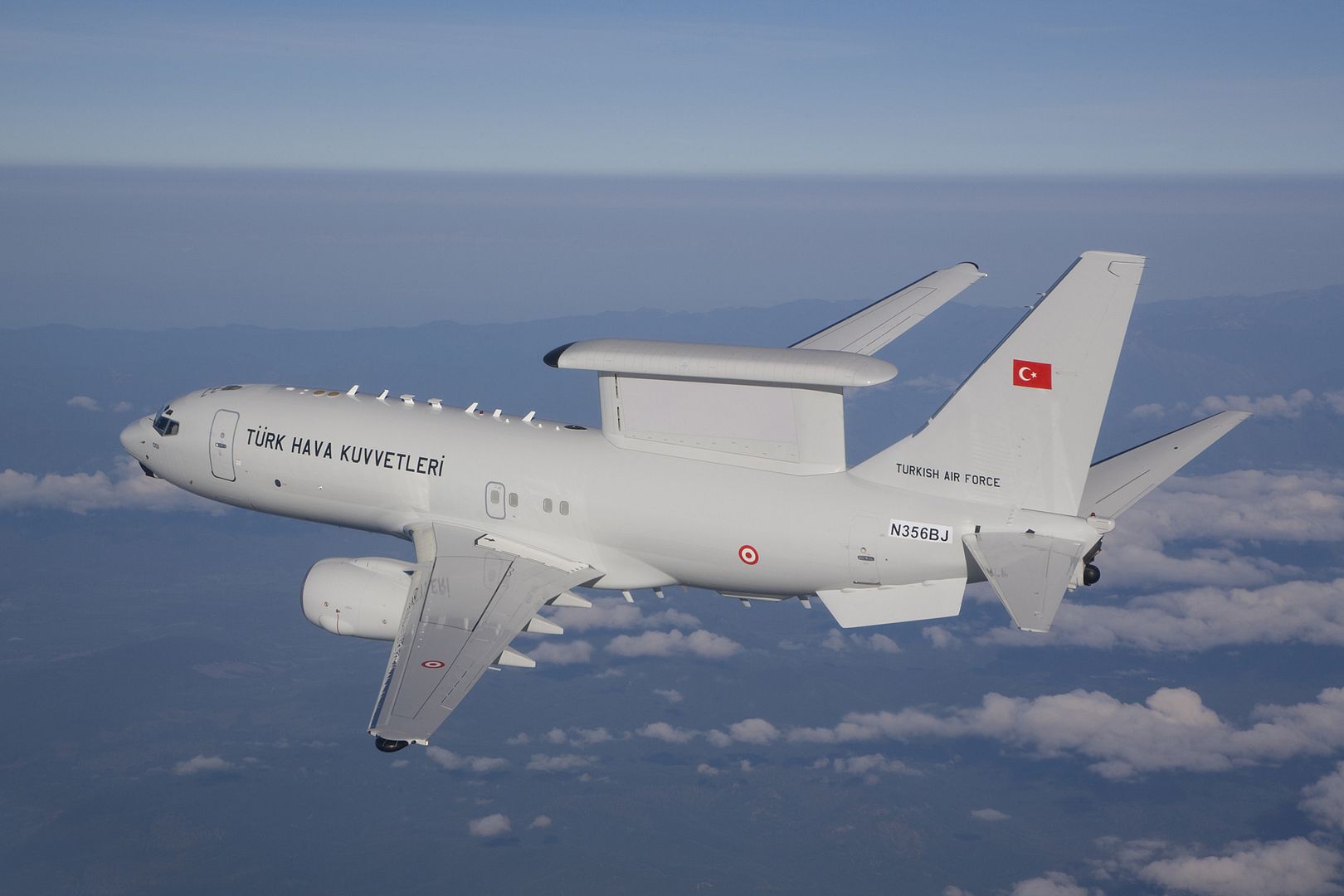
-
9 years agoSun Dec 13 2015, 11:55am
 Main AdminTyphoons from XI Sqn have been dog fighting with and fighting alongside US Air Force Raptors and French Air Force Rafales in the skies above Virginia during the first ever Tri-Lateral air-combat exercise.
Main AdminTyphoons from XI Sqn have been dog fighting with and fighting alongside US Air Force Raptors and French Air Force Rafales in the skies above Virginia during the first ever Tri-Lateral air-combat exercise.
The exercise provides some of the world's most advanced jet fighters the chance to be tested to their limits against each other and enhance their ability to fly together operationally.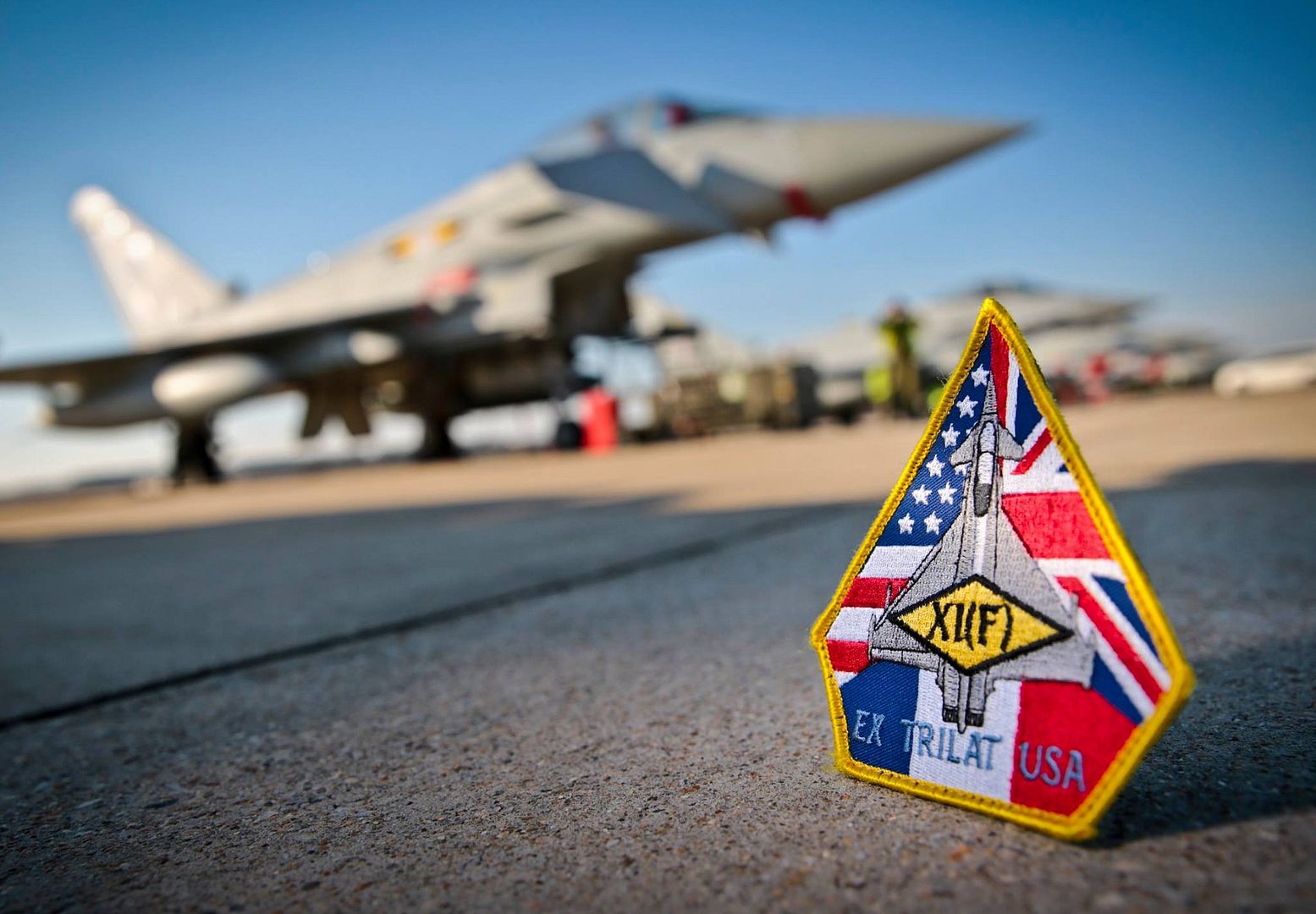

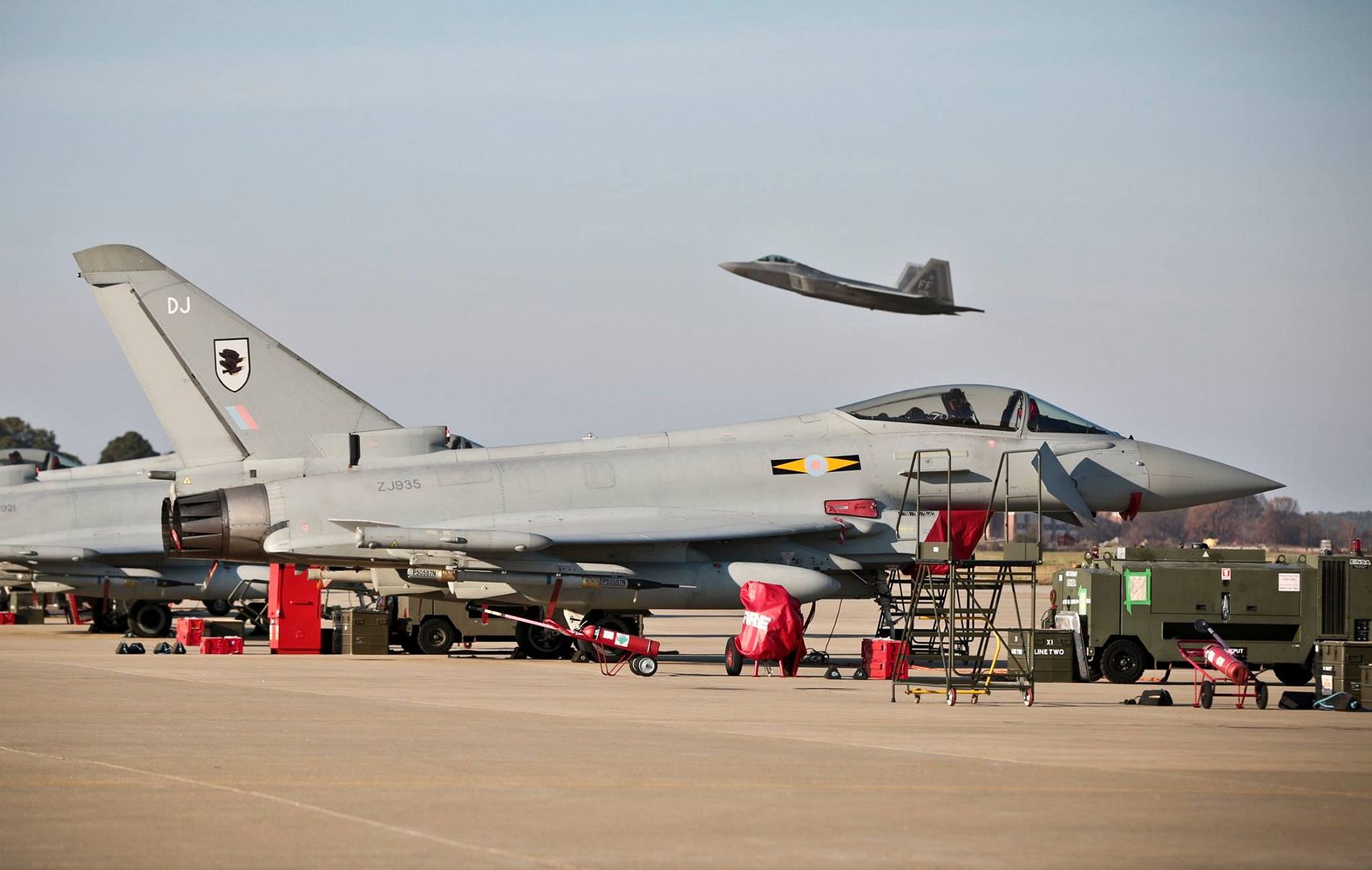
December 8th RAAf KC-30 tanker testing.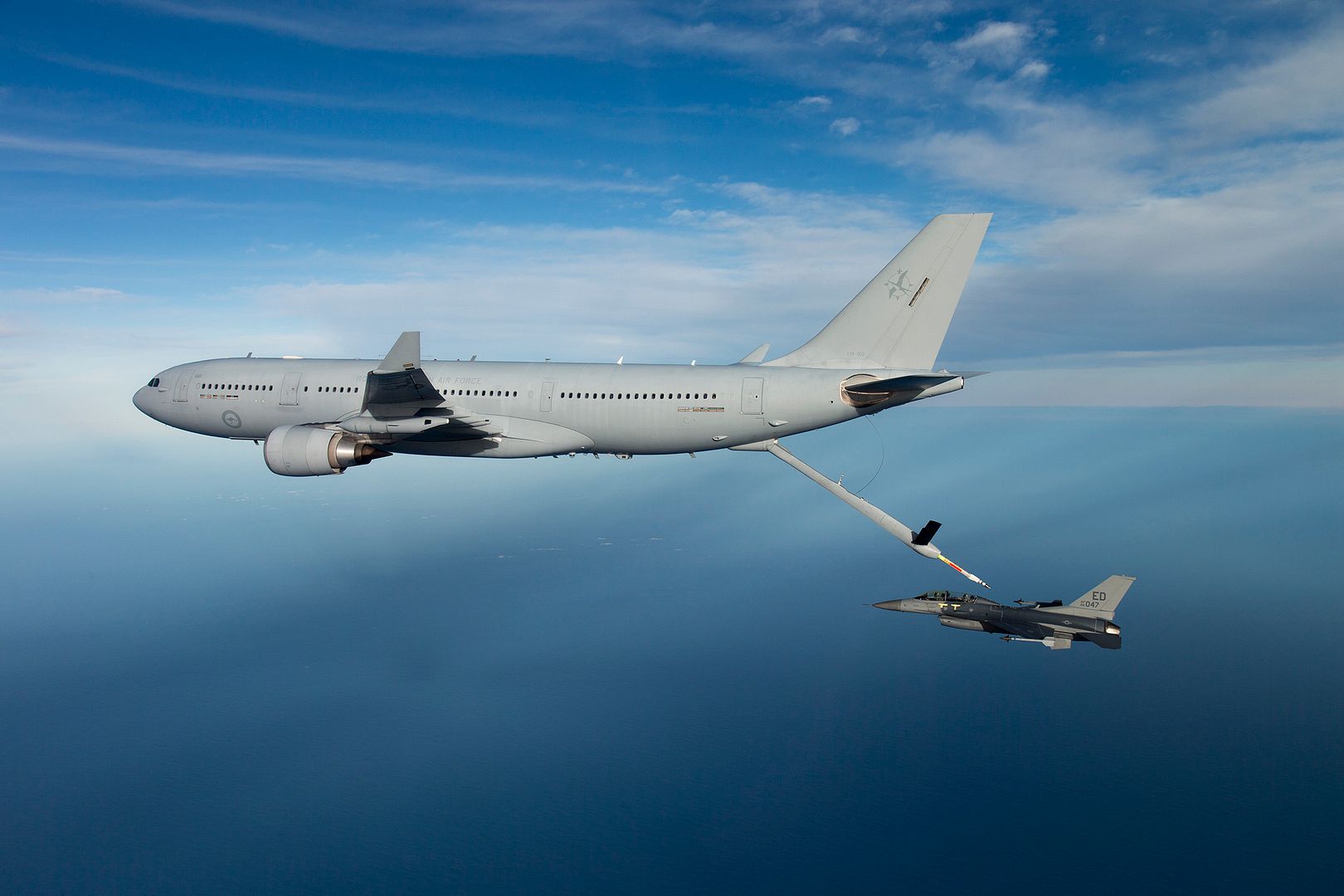

An F-22 Raptor, Royal Air Force Typhoon FGR4 and French air force Rafale fly in formation as part of a trilateral exercise held at Joint Base Langley-Eustis, Va., Dec. 7, 2015. The exercise simulates a highly contested, degraded and operationally limited environment where U.S. and partner pilots and ground crews can test their readiness. (U.S. Air Force photo/Senior Airman Kayla Newman)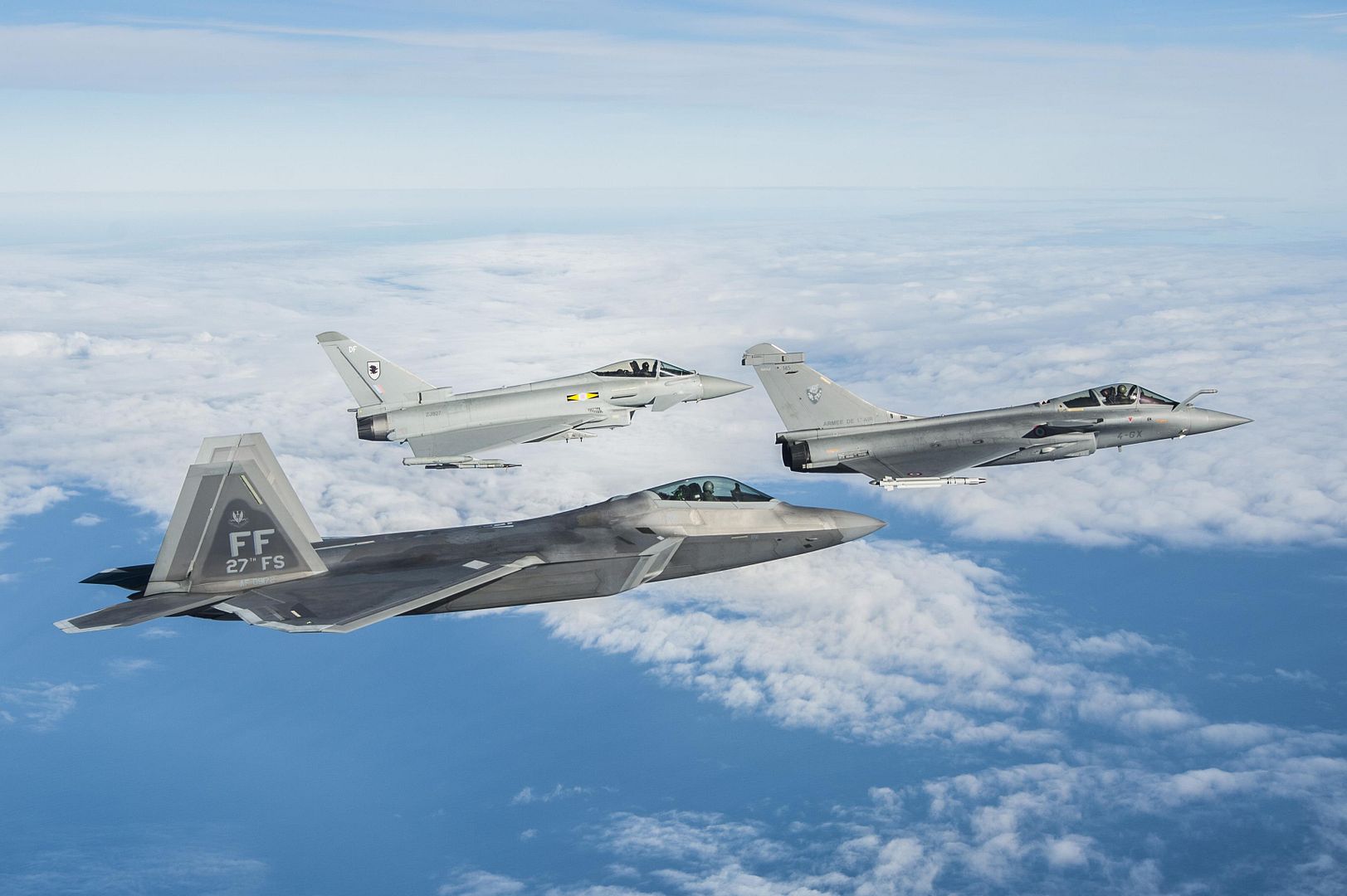
Marines hook up a hose for a power cart before a weapons functional test during Exercise Steel Knight at Marine Corps Air Ground Combat Center Twentynine Palms, California, Dec. 10, 2015. The Marines are with Marine Fighter Attack Squadron 121 and Marine Operational and Test Evaluation Squadron 22. The F-35B is a single seat, single engine stealth multi-role fighter bringing the Marine Corps into a whole new generation of aircraft. Exercise Steel Knight allowed for VMFA-121 and VMX-22 to train on integrating the F-35B and find its place in the Marine Air Ground Task Force, while giving the ground forces of 1st Marine Division the ability to become familiar with it.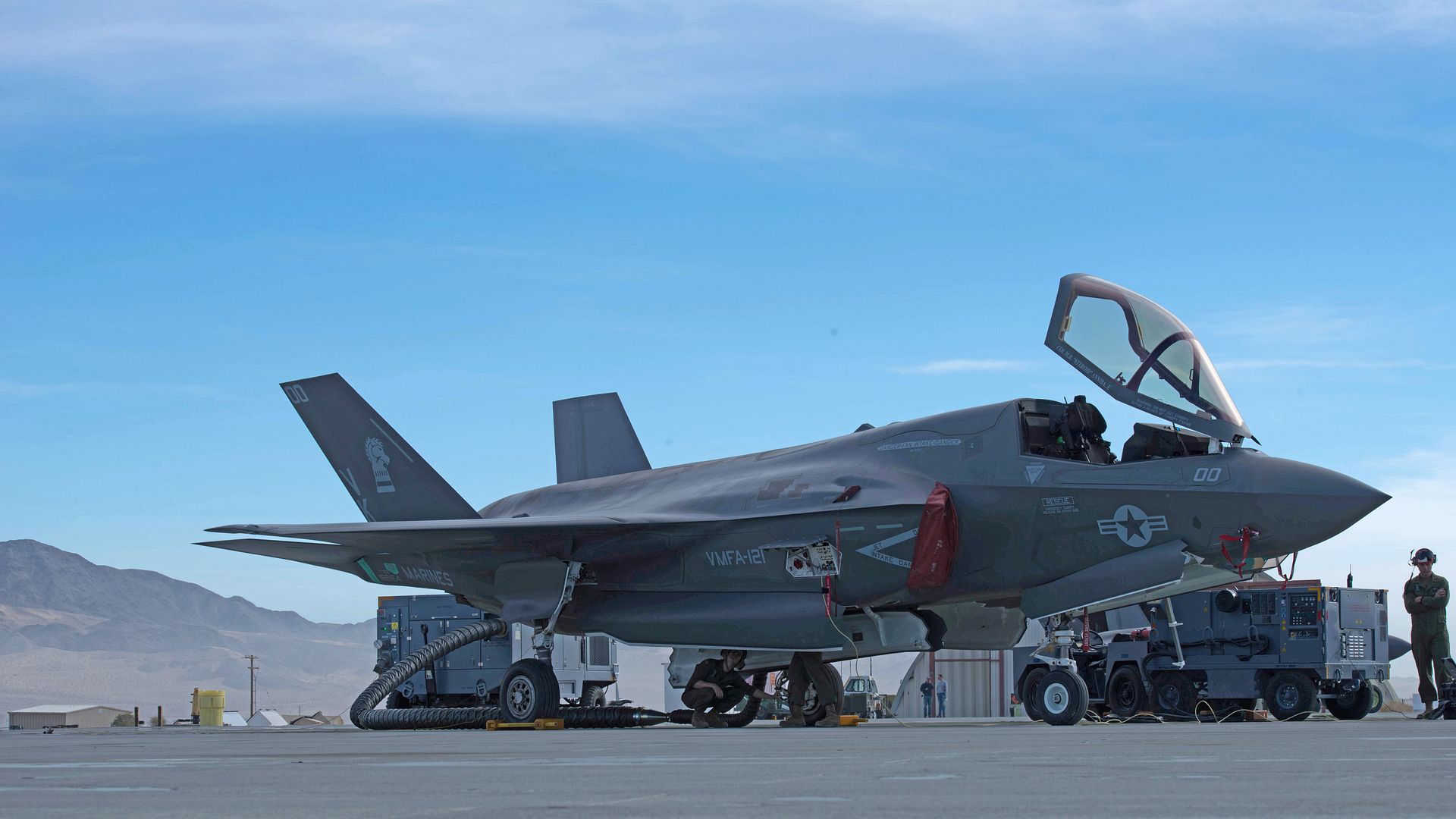
Exercise Steel Knight is the first time the F-35B Lightining II is participating in an intergrated live fire exercise with the 1st Marine Division. The Marine Fighter Attack Squadron 121 provided close air support from units with 1st Marine Division manuevering throughout a realistic training environment to develop skillsets neccesary to maintain a fully capable Marine Air Ground Task Force.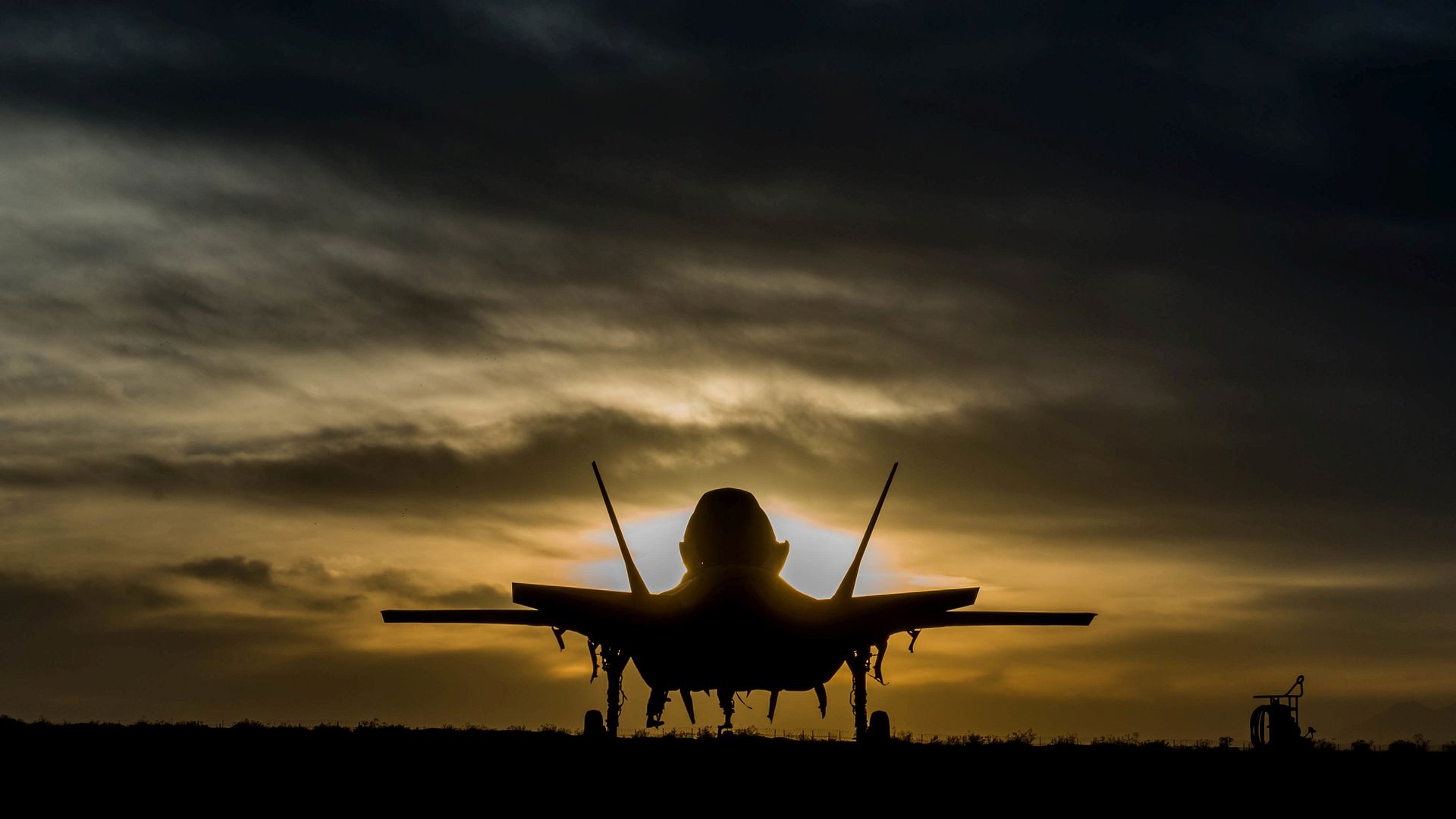
An F-18 Hornet performs a fly by on the USS Dwight D. Eisenhower as Secretary of Defense Ash Carter and India's Minister of Defense Manohar Parrikar tour the aircraft carrier Dec. 10, 2015. The two leaders toured the aircraft carrier after meeting at the Pentagon to discuss matters of mutual interest. (DoD photo by Senior Master Sgt. Adrian Cadiz)(Released)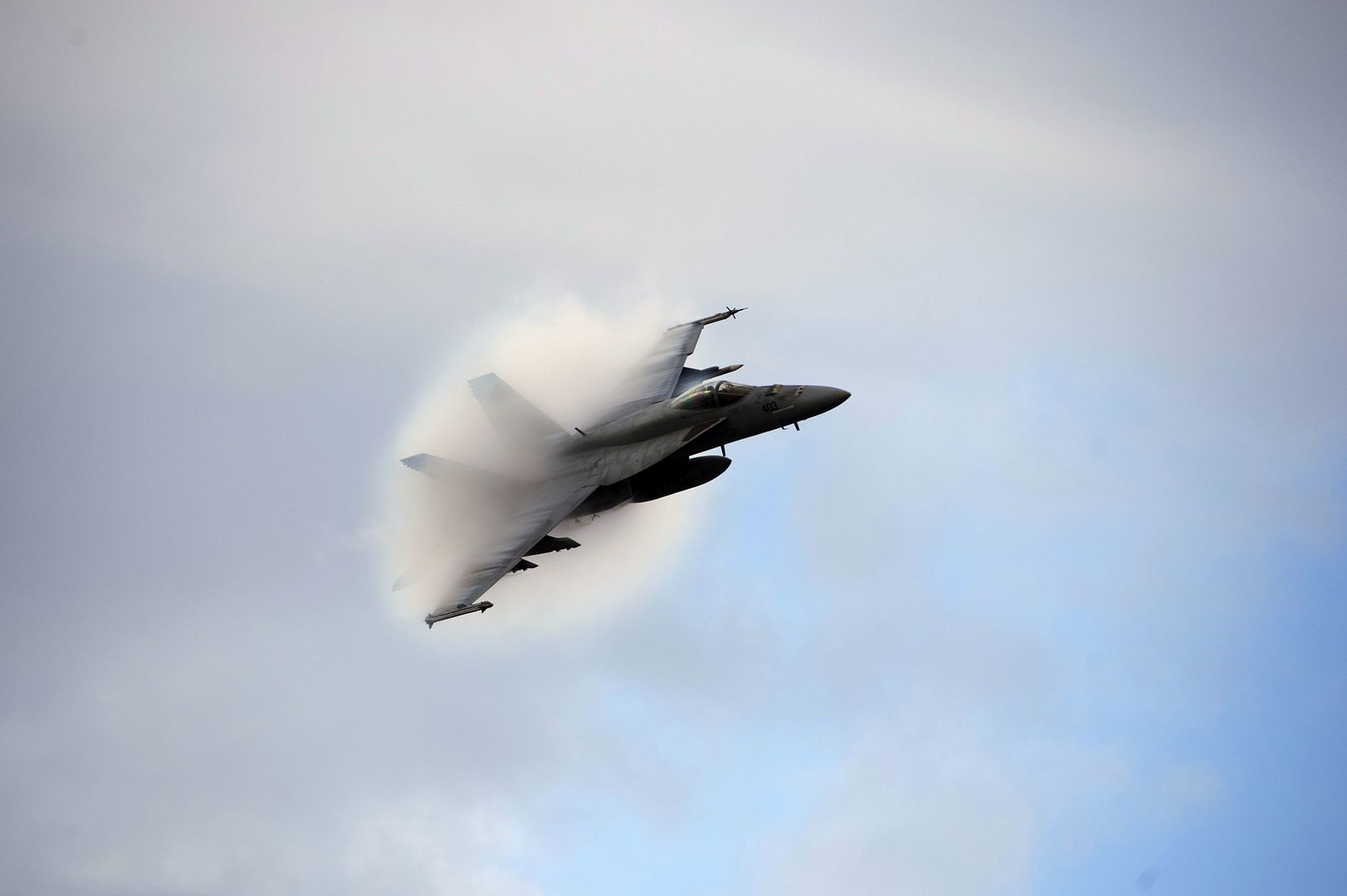
US Air Force; issued Dec 11, 2015.
An MQ-9 Reaper with an extended range flown from Kandahar Airfield, Afghanistan. The ER modification allows for 20 to 40 percent additional flight time dependent on the aircraft's loadout. (U.S. Air Force photo by Tech. Sgt. Robert Cloys/Released)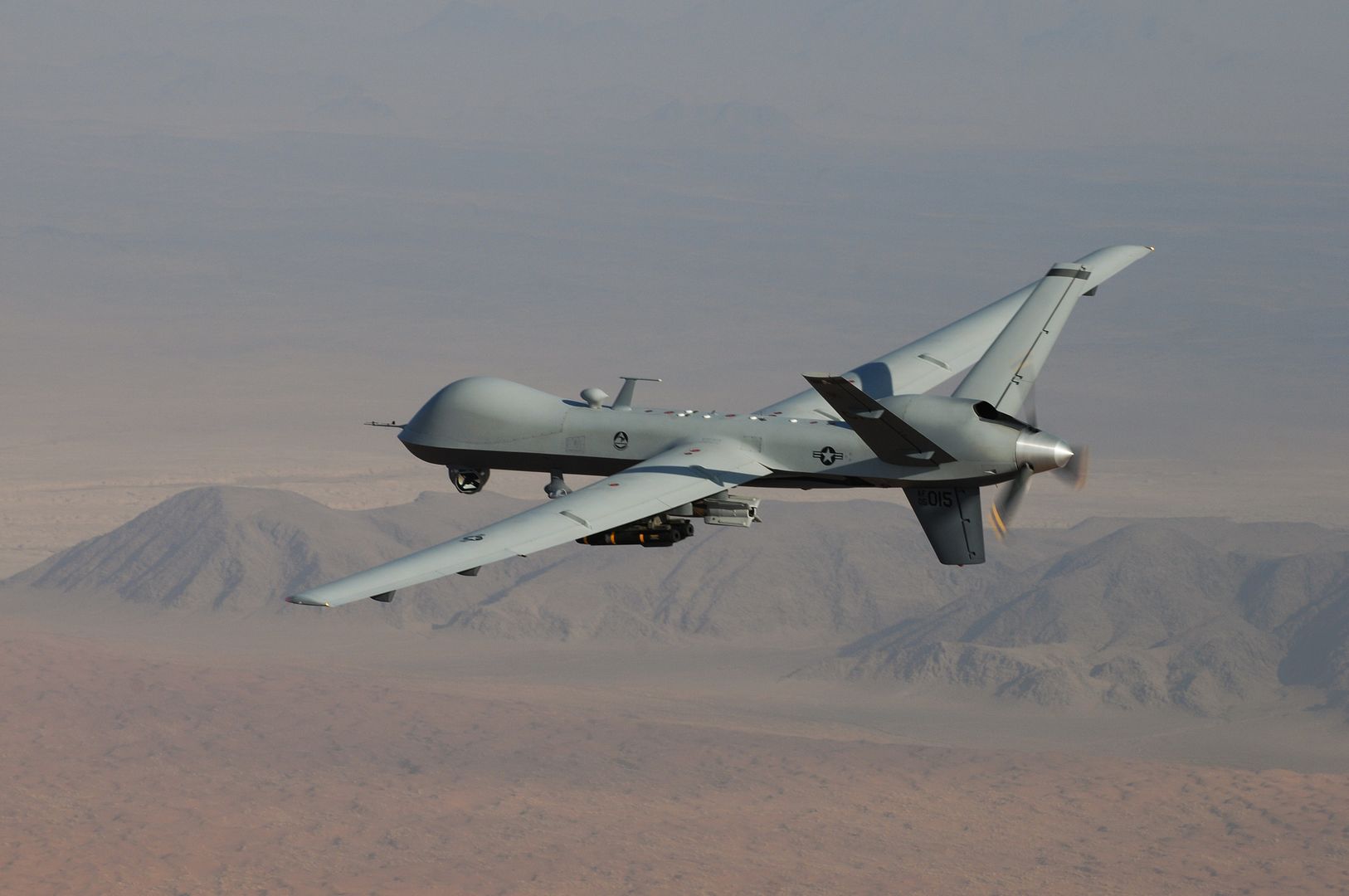
Russia
The first Il-76MD-90A for military transport aviation was transferred to Ivanovo ? its permanent position.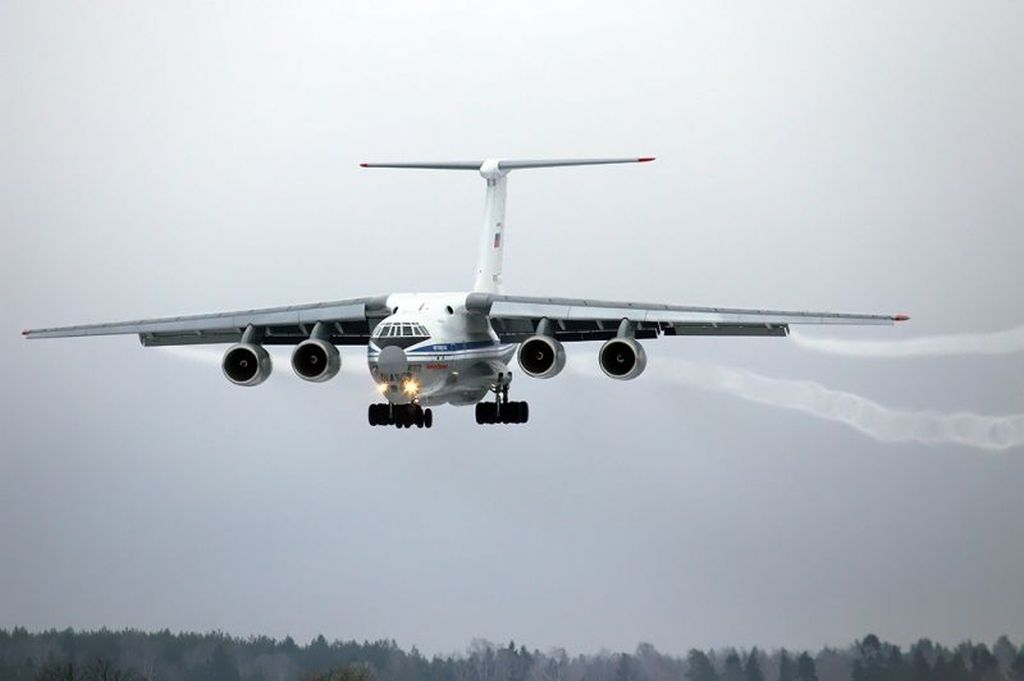
ATLANTIC OCEAN (Dec. 9, 2015) An EA-18G Growler, assigned to the ?Gauntlets,? of Electronic Attack Squadron (VAQ) 136, lands on the flight deck of aircraft carrier USS George Washington (CVN 73). Washington and its embarked air wing, Carrier Air Wing (CVW) 2 are deployed in support of Southern Seas 2015. (U.S. Navy photo by Mass Communication Specialist 2nd Class Jonathan Nelson/Released)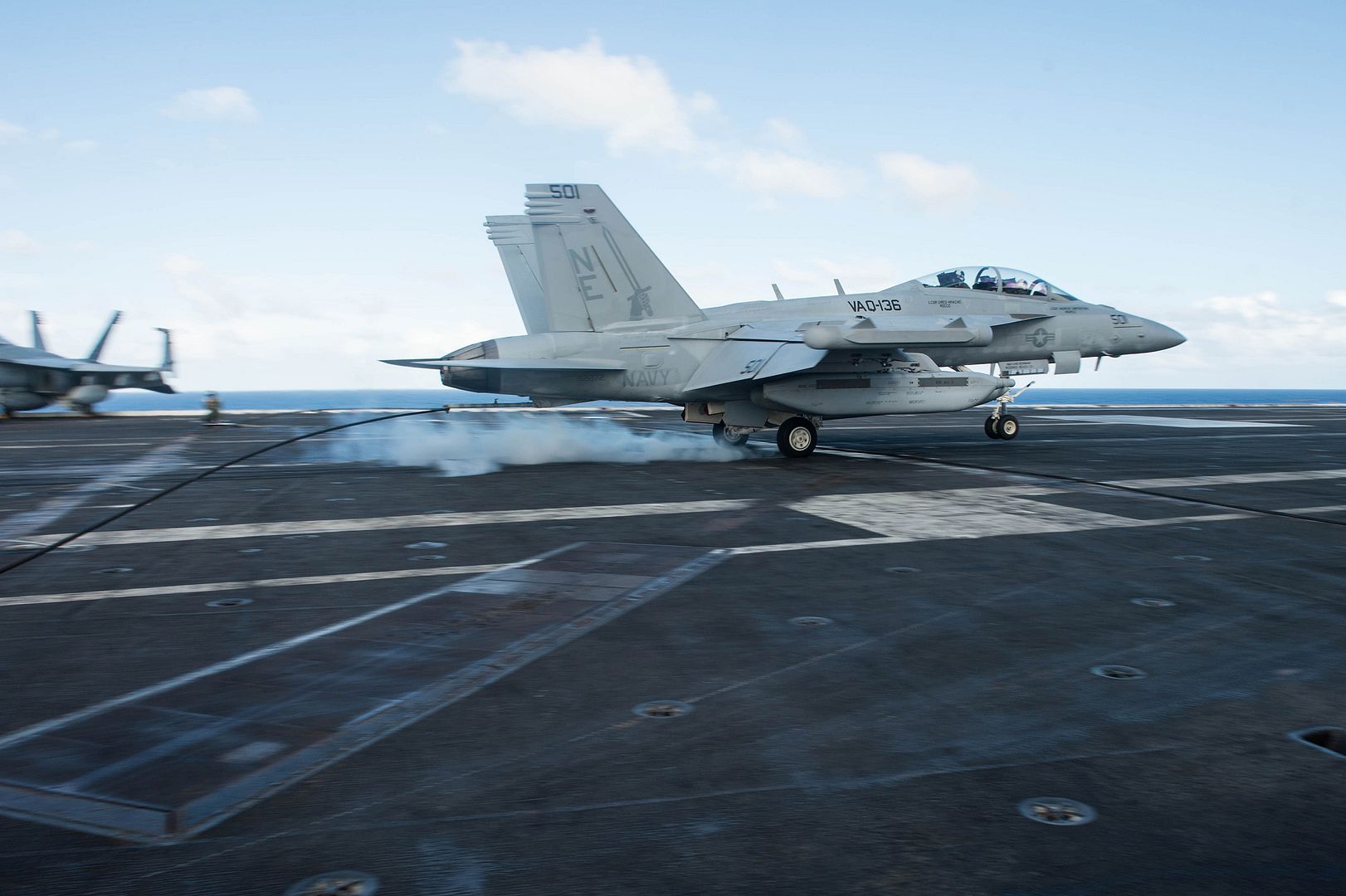
-
 Main AdminThe Tri-Lateral Exercise in Virginia, USA is now entering its final few days. Working closely to share and develop combat air TTPs (tactics, techniques and procedures), Typhoons from XI Sqn have been flying with French Rafales and US Air Force F-22 Raptors.
Main AdminThe Tri-Lateral Exercise in Virginia, USA is now entering its final few days. Working closely to share and develop combat air TTPs (tactics, techniques and procedures), Typhoons from XI Sqn have been flying with French Rafales and US Air Force F-22 Raptors.
The F-22 Raptor is described as a 5th generation fighter due to its stealth capability and the way it manages information in the air. One pilot on the exercise described modern air warfare as an information war. Whoever can gather, process and exploit the most information in the quickest time will win that war.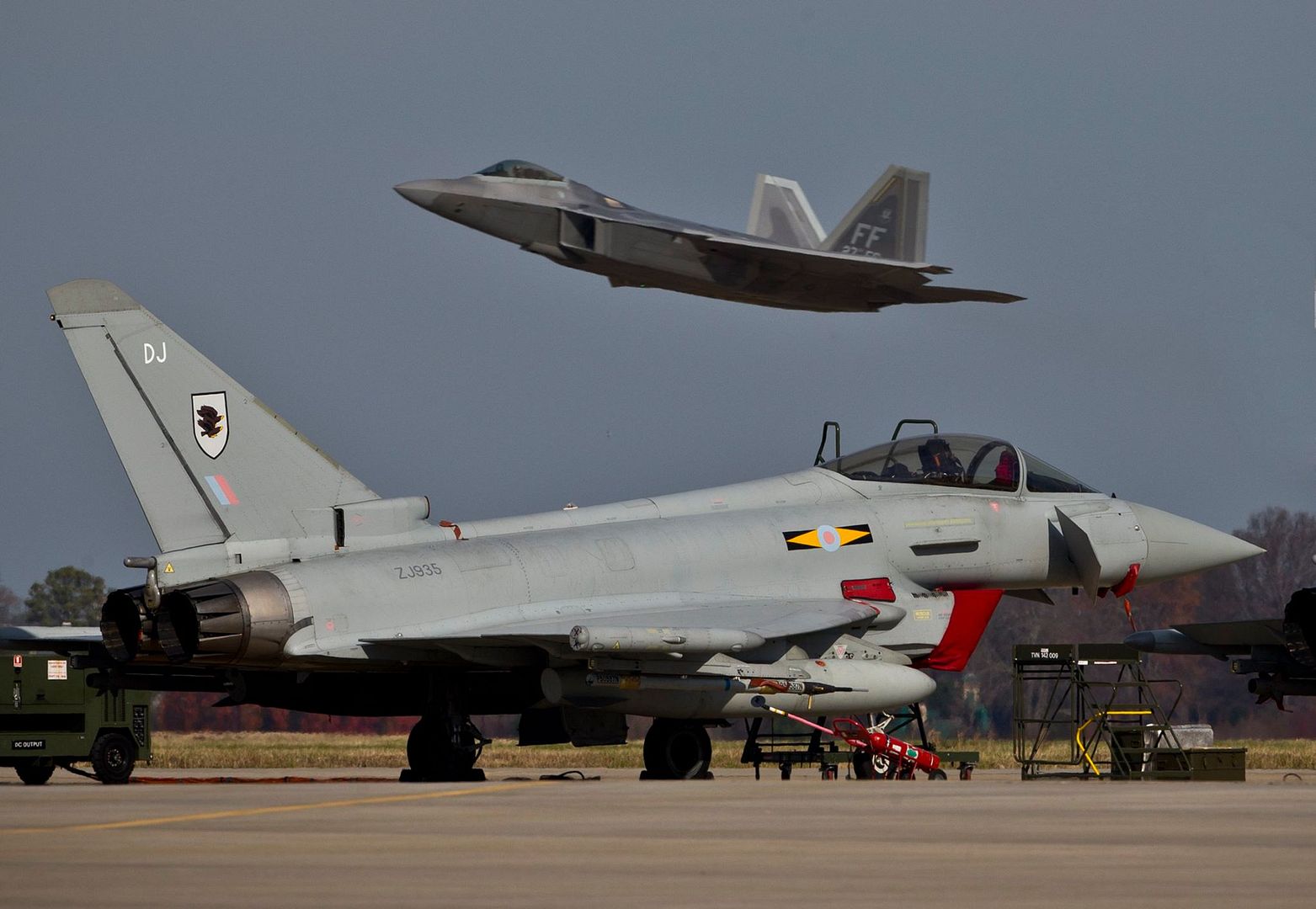
Flying alongside the F-22 Raptor and Typhoon at the Tri-Lateral Exercise in Virginia this week has been the French Air Force Rafale. The French pilots love their highly capable, multi-role aircraft. Like Typhoon, Rafale will continue to be upgraded over the coming years as aviation technology advances, maintaining its position as one of the most formidable jet fighters in the world.
One of the Rafale pilots said: ?It?s great to train with other aircraft because we are so used to training just with Rafale. It?s really good to see how each other works and to take all the good pieces so everyone can improve themselves.?
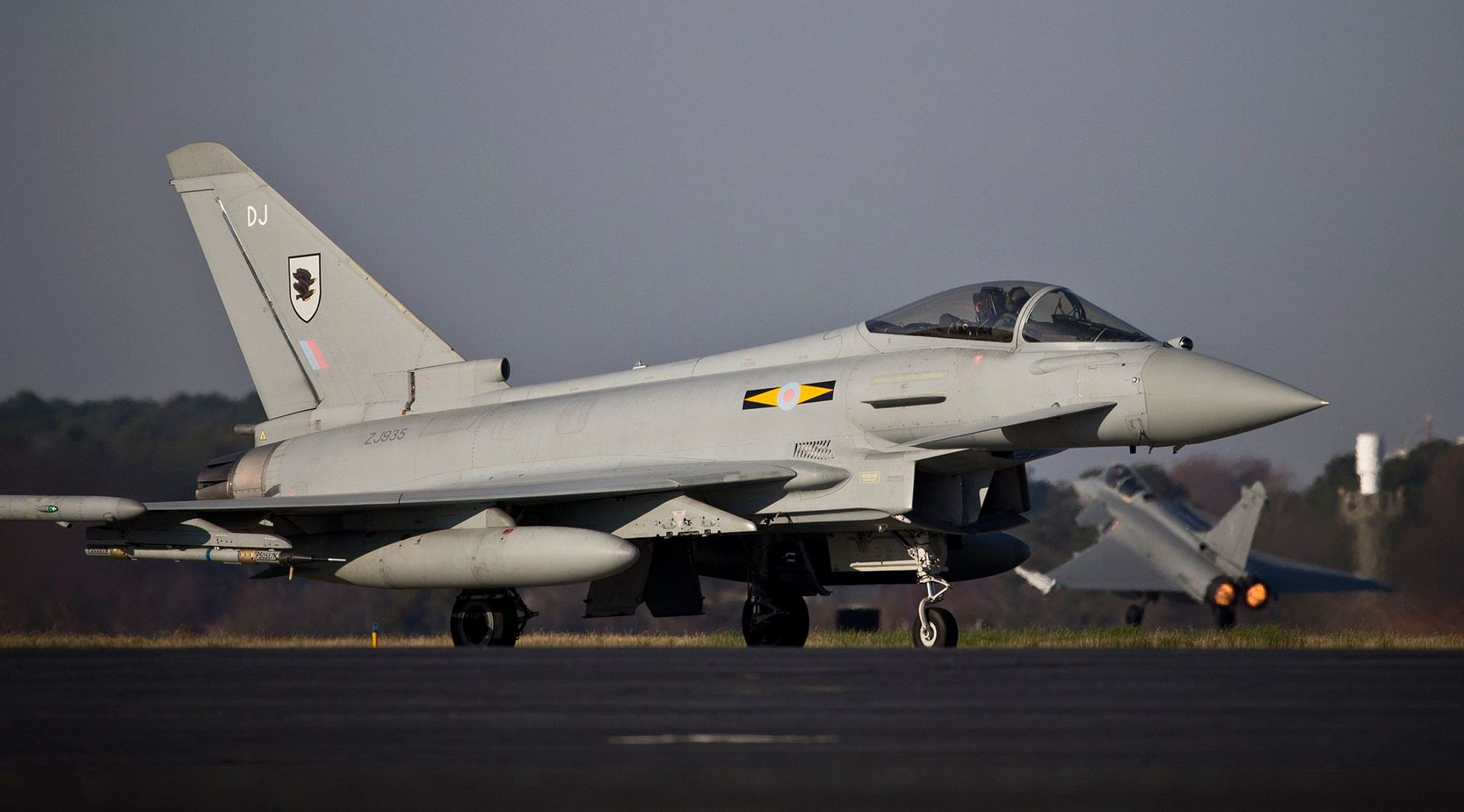
During the Trilateral exercise the RAF Typhoon is tested each day by aggressor aircraft who push the Typhoon and its pilot to its limits. Playing the bad guys are American F-15E Strike Eagles from Seymour Johnson AFB, as well as Langley?s own T-38 Talon force.
The F-15E is a very capable all weather multi-strike fighter and is a potent adversary, meaning the Typhoon and its pilot have to be on the top of their game at all times. Using such a capable aircraft ensures the Typhoon gets realistic combat training, meaning it will be ready to meet any future threats.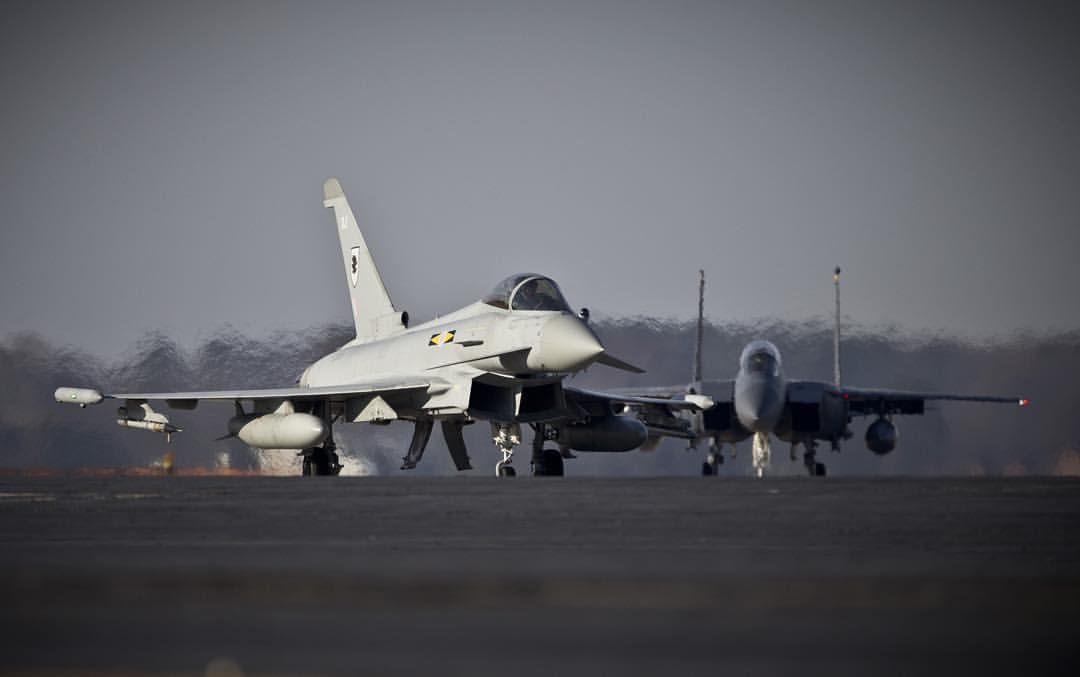
Lt. Col. Mark Sletten, an F-35 Lightning II program integration officer, lowers the canopy on an F-16 Fighting Falcon before taxiing to take off Dec. 7, 2015, at Eielson Air Force Base, Alaska. More than 30 maintenance Airmen worked an early shift to help launch several jets to Tyndall Air Force Base, Fla., for Checkered Flag 16-1, a large-force exercise that simulates a large number of aircraft in a deployed environment to cross-check weapons systems. (U.S. Air Force photo/Master Sgt. Joseph Swafford)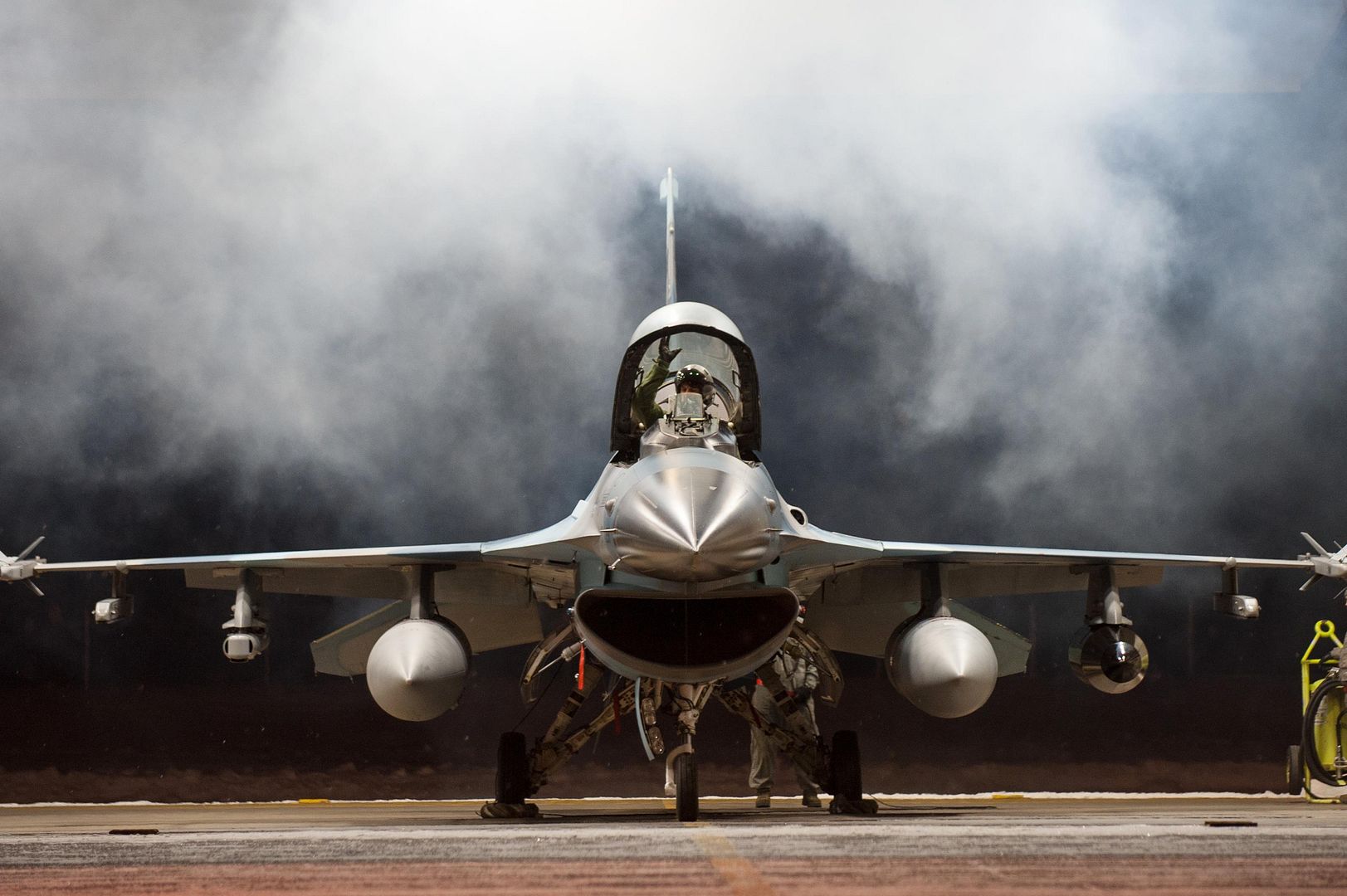
A KC-135R Stratotanker with the 108th Wing, New Jersey Air National Guard, waits for a final check before all the hatches are closed on the flight line at Joint Base McGuire-Dix-Lakehurst, N.J., Dec. 12, 2015. The Stratotanker provides the core aerial refueling capability for the United States Air Force. The aircraft, which enhances the Air Force's capability to accomplish its primary mission of Global Reach and Global Power, also provides aerial refueling support to Air Force, Navy, Marine Corps and allied nation aircraft. The KC-135R is also capable of transporting litter and ambulatory patients using patient support pallets during aeromedical evacuations. (U.S. Air National Guard photo by Master Sgt. Mark C. Olsen/Released)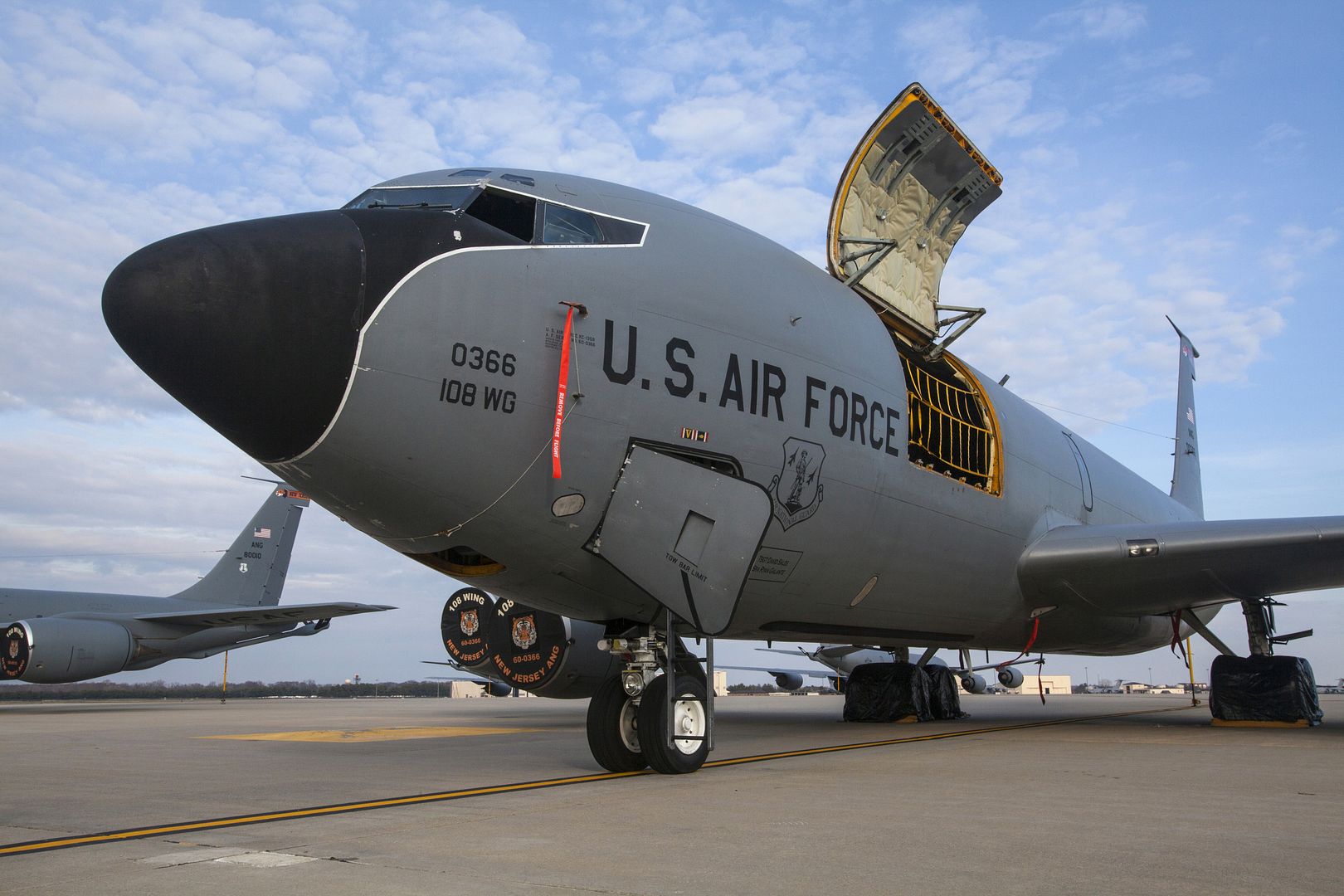
PACIFIC OCEAN (Dec. 13, 2015) An MV-22 Osprey from the ?Greyhawks? of Marine Medium-lift Tiltrotor Squadron (VMM) 161 (Reinforced) takes off the flight deck of Wasp-class amphibious assault ship USS Essex (LHD 2). Essex is the flagship of the Essex Amphibious Ready Group and, with the embarked 15th Marine Expeditionary Unit (15th MEU), is currently operating in the 3rd Fleet area of responsibility. (U.S. Navy Photo by Mass Communication Specialist 2nd Class Bradley J. Gee/Released)
PALMDALE, Calif., Dec. 14, 2015 (GLOBE NEWSWIRE) -- Northrop Grumman Corporation (NYSE:NOC) has delivered on a commitment to the U.S. Air Force to increase the availability of the B-2 stealth bomber fleet by completing a periodic "wingtip-to-wingtip" overhaul of the jet in a record 359 days.
The company returned B-2 Spirit of Kitty Hawk to the bomber's operational home at Whiteman Air Force Base, Missouri, on Sept. 23. The shorter cycle for programmed depot maintenance (PDM), a process that has averaged more than 400 days in the past, is part of a new B-2 maintenance approach expected to save taxpayers about $900 million over the life of the fleet.
Northrop Grumman is the Air Force's prime contractor for the B-2, the most powerful and most survivable weapon system in the nation's long range strike arsenal.
"Our success reducing PDM flow days to less than a year stems from an aggressive, on-going effort by Northrop Grumman and the Air Force to put more B-2s on the nation's flight line," said Dave Mazur, vice president and B-2 program manager, Northrop Grumman Aerospace Systems. "We've worked closely with our customers to improve their B-2 parts acquisition process, while also reviewing critically and streamlining every aspect of our own PDM processes."
Under a B-2 contract modification signed in April, Northrop Grumman will overhaul each jet once every nine years, versus the previous frequency of once every seven years. The company will maintain only two jets in PDM at any one time instead of the historical three and will complete PDM in an average of 365 days.
"Over the past 22 years of operation, we've observed that many of the B-2's major components are holding up much better than expected," said Mazur. "As a result, we're able to extend its maintenance interval without jeopardizing its readiness to serve the nation's global security interests."
PDM includes a complete restoration of the B-2's outer surfaces; servicing of many of its major moving parts such as landing gear, control surfaces and ejection seats; and installation of software or hardware upgrades. The process is performed at Northrop Grumman's B-2 Depot & Modification Center in Palmdale.
The B-2 bomber is the only aircraft in the U.S. inventory that combines stealth, long range, large payload and precision weapons delivery. It can fly 6,000 nautical miles unrefueled and more than 10,000 nautical miles with just one aerial refueling, giving it the ability to reach any point on the globe within hours, and hold at risk an enemy's most heavily defended targets.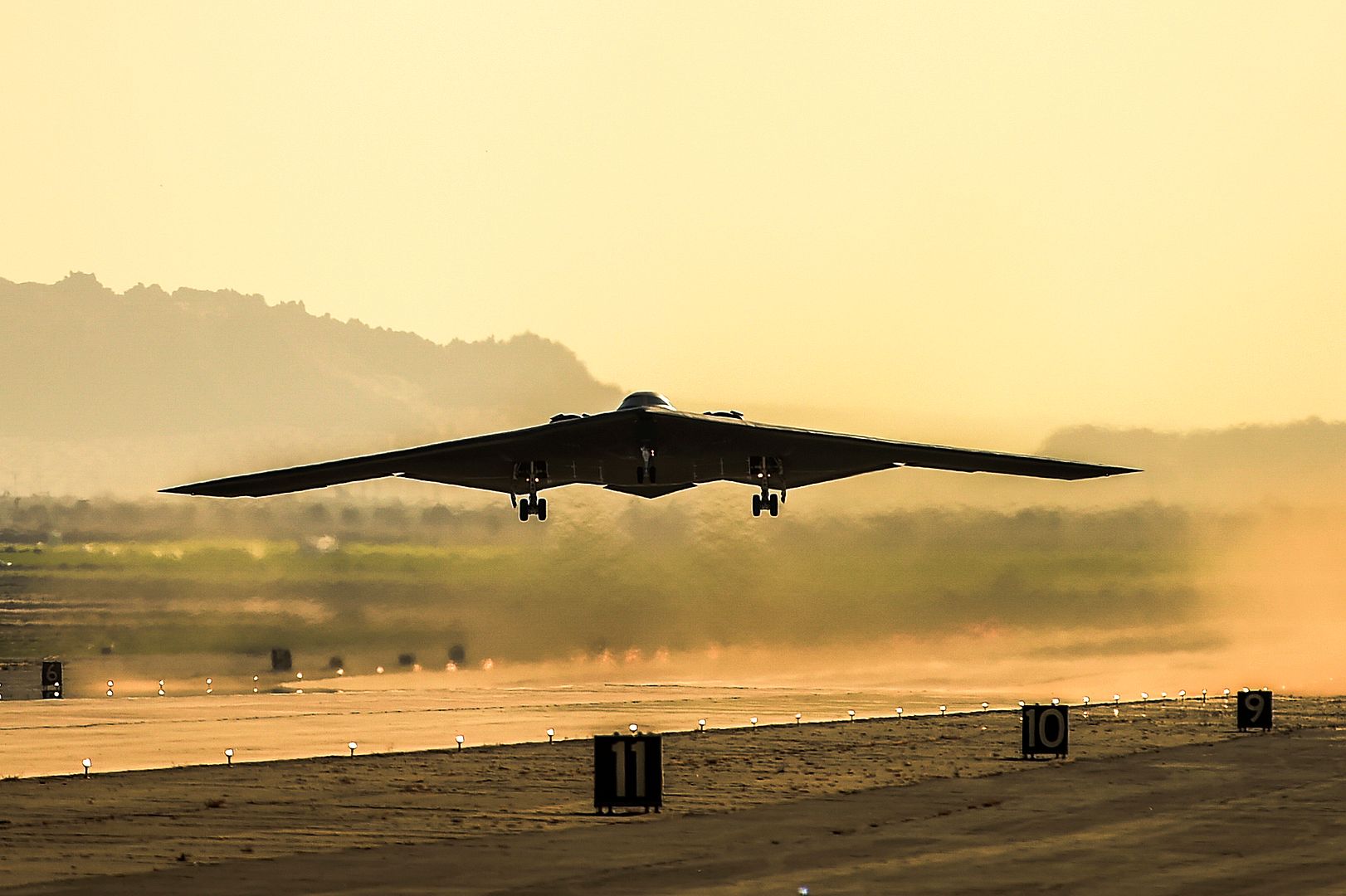
MARIETTA, Ga., Dec. 11, 2015 ? Lockheed Martin (NYSE: LMT) delivered the 2,500th C-130 Hercules from its production line here today. This landmark Hercules is an HC-130J Combat King II personnel recovery aircraft assigned to the U.S. Air Force?s 71st Rescue Squadron, which is part of the 347th Rescue Group. A U.S. Air Force crew ferried the HC-130J to its new home at Moody Air Force Base in Valdosta, Georgia.
?This milestone delivery is a source of pride for our team and the global C-130 community,? said George Shultz, vice president and general manager, C-130 Programs at Lockheed Martin. ?The Hercules is a global asset and versatile workhorse that is truly without equal. This delivery represents the C-130?s strength in numbers and its ongoing relevancy to operators around the world.?
The U.S. Air Force has the distinction of accepting the first delivery of Hercules aircraft on Dec. 9, 1956. The U.S. Air Force is the world?s largest Hercules operator, which includes legacy C-130 and C-130J Super Hercules fleets.
C-130s today are operated from 68 nations and the global fleet has collectively logged more than 22 million flight hours. The current production model is the C-130J Super Hercules, the airlifter of choice for 16 nations and 19 different operators. The Super Hercules worldwide fleet has more than 1.3 million flight hours to its credit.
C-130J variants currently in production include the C-130J/C-130J-30 combat-ready aircraft; KC-130J aerial refuelers; HC-130J search and rescue aircraft; MC-130J special operations aircraft; and the LM-100J commercial freighter. To date, C-130s have been produced to support 100 different mission requirements. The C-130J is available in 17 different configurations.
-
 Main AdminRAAF helps Kiwis fly
Main AdminRAAF helps Kiwis fly
A Royal Australian Air Force C-17A Globemaster recently joined the Royal New Zealand Air Force for a trial loading of the RNZAF NH90.
The NH90 is an advanced medium utility helicopter, capable of undertaking a wide variety of roles in New Zealand and overseas.
Interoperability between RAAF and RNZAF could be useful in the event of a regional disaster, and the visit provided an opportunity to trial loading the NH90 inside the C-17A Globemaster.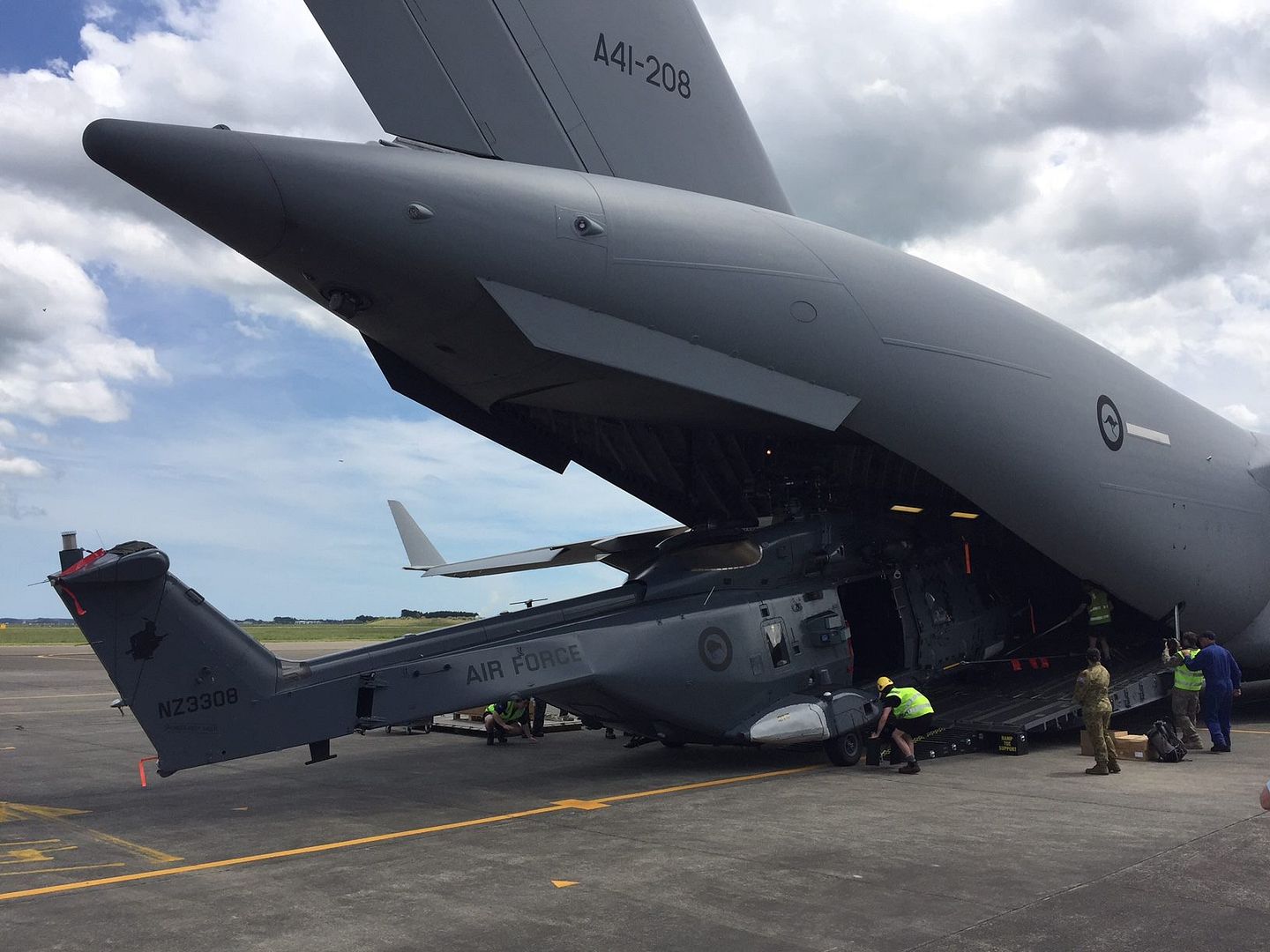
An F-22 Raptor from Tyndall Air Force Base, Fla., sits on the flightline while a Raptor launches from the Tyndall runway Dec. 10, 2015, during Checkered Flag 16-1. The week-and-a-half long exercise focuses on the involvement of the F-22 Raptor, F-35A Lightning II's and legacy aircraft training in a large-force exercise to enhance combat airpower capabilities. (U.S. Air Force photo/Senior Airman Sergio A. Gamboa)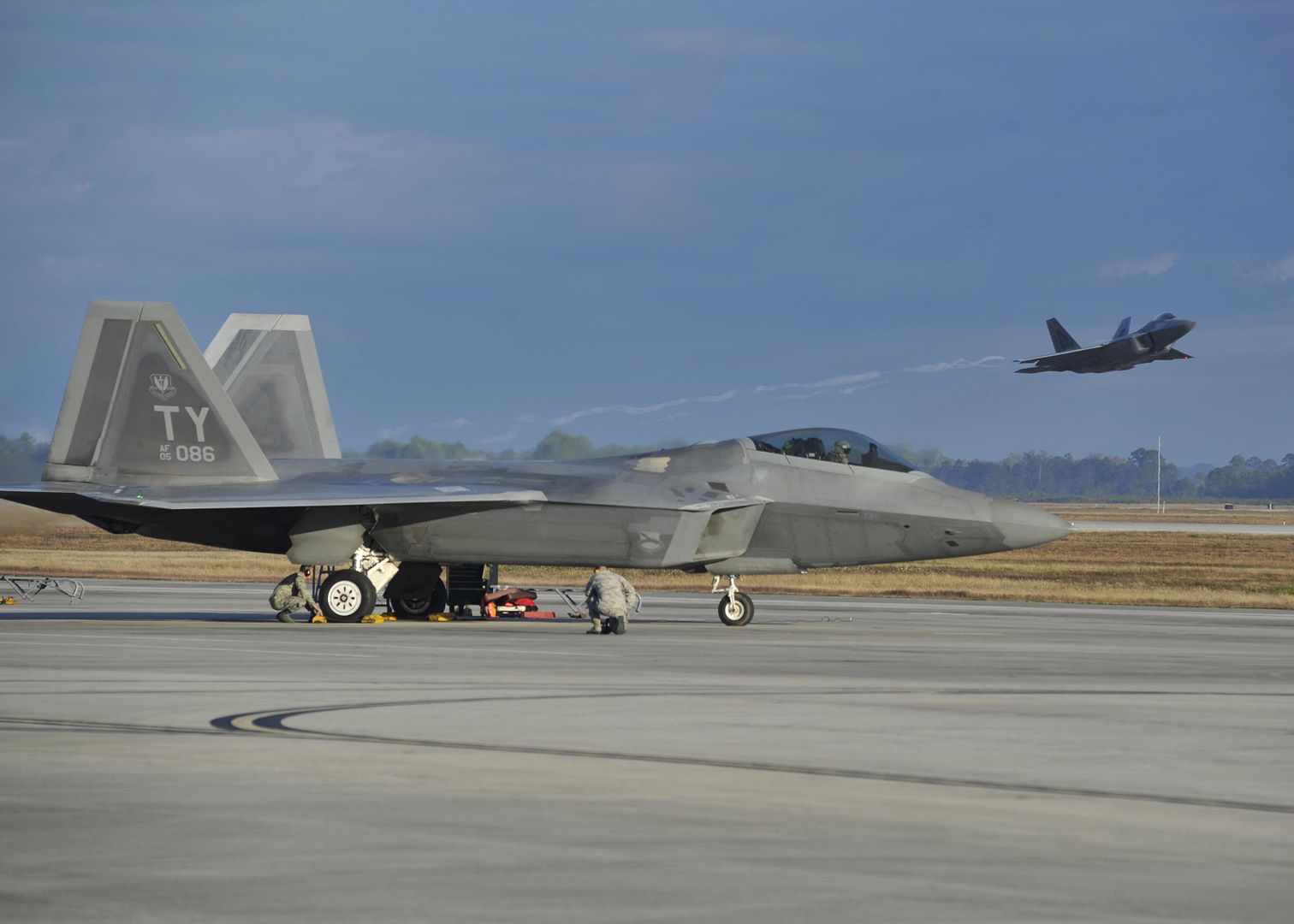
An F-35B Lightning II Joint Strike Fighter, Marine Fighter Attack Squadron 121, 3rd Marine Aircraft Wing, performs a conventional take-off at the Strategic Expeditionary Landing Field during Exercise Steel Knight 2016 aboard the Combat Center, Dec. 11, 2015. This year?s iteration of Exercise Steel Knight works to advance 1st Marine Division?s warfighting capabilities, to include interoperability between the ground and air forces and integration of the F-35B. (Official Marine Corps photo by Lance Cpl. Levi Schultz/Released)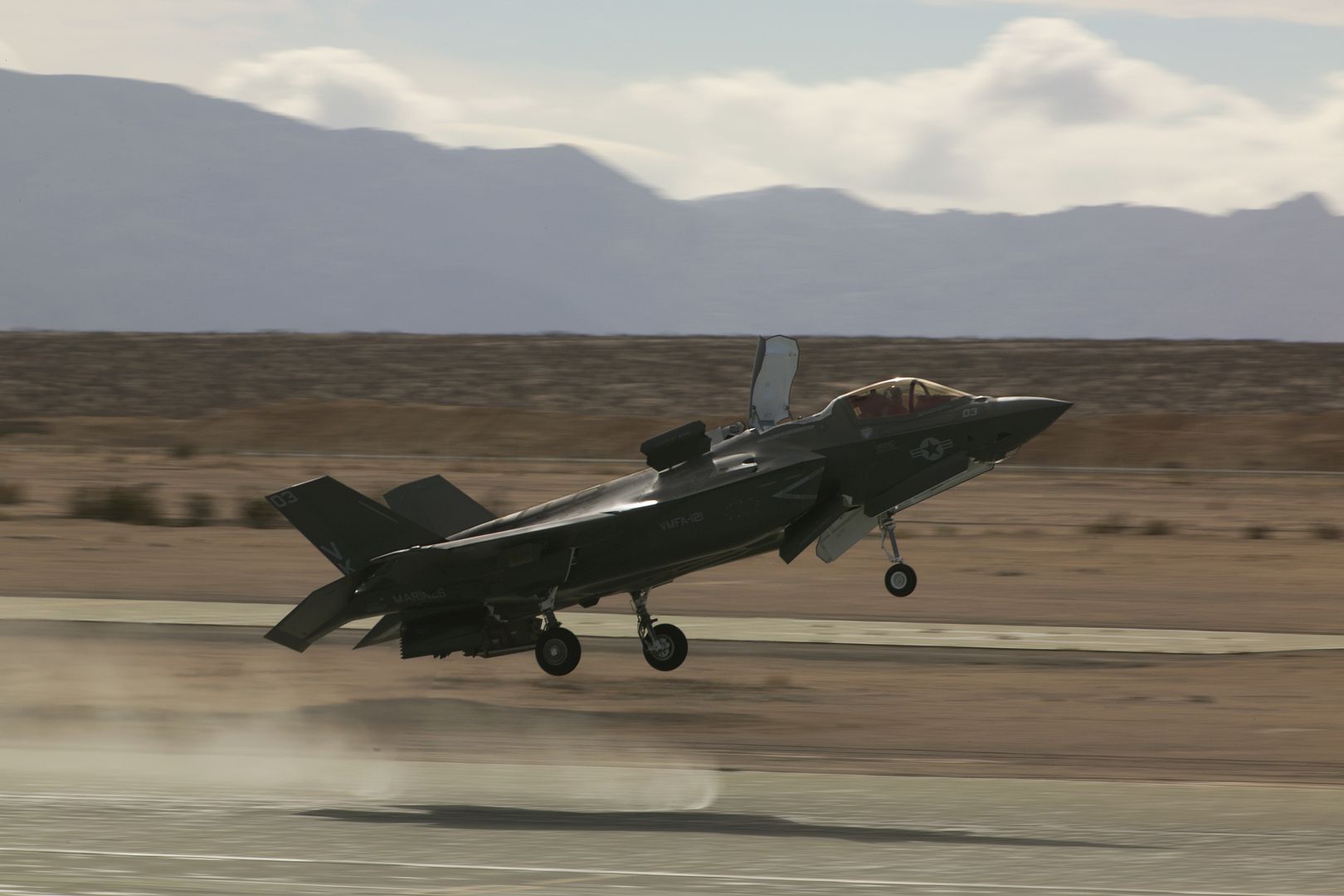
MARIETTA, Ga., December 14, 2015 ? Lockheed Martin (NYSE: LMT) delivered the 32nd modernized C-5M Super Galaxy to the U. S. Air Force on Dec. 9. This aircraft was the ninth and final C-5M scheduled for delivery in 2015. The aircraft was delivered more than a week ahead of the contract commitment delivery date.
An active duty U.S. Air Force aircrew led by Maj. Gen. Warren D. Berry, the Vice Commander of Air Force Materiel Command at Wright-Patterson Air Force Base, Ohio, ferried the aircraft from the Lockheed Martin facility here to Stewart Air National Guard Base, New York, where it will undergo internal paint restoration.
Once paint restoration is completed, the aircraft will be assigned to Travis Air Force Base, California. It will be the 14th Super Galaxy based at Travis.
This aircraft (U. S. Air Force serial number 86-0016, company number 0102) was originally delivered to the Air Force in December 1987 and had recorded approximately 21,510 flight hours prior to the ferry flight.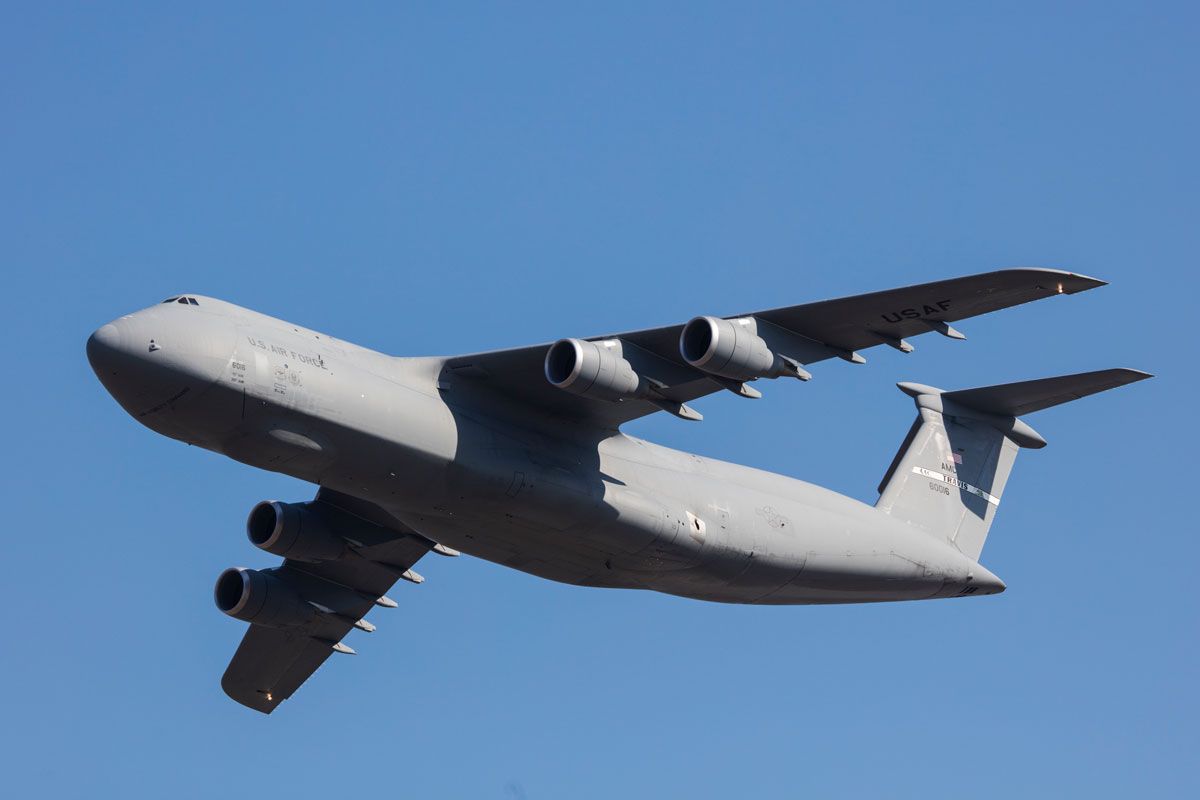
-
9 years agoThu Dec 17 2015, 02:19pm
 Main AdminSome more photo's from Trilateral Exercise, 2015.
Main AdminSome more photo's from Trilateral Exercise, 2015.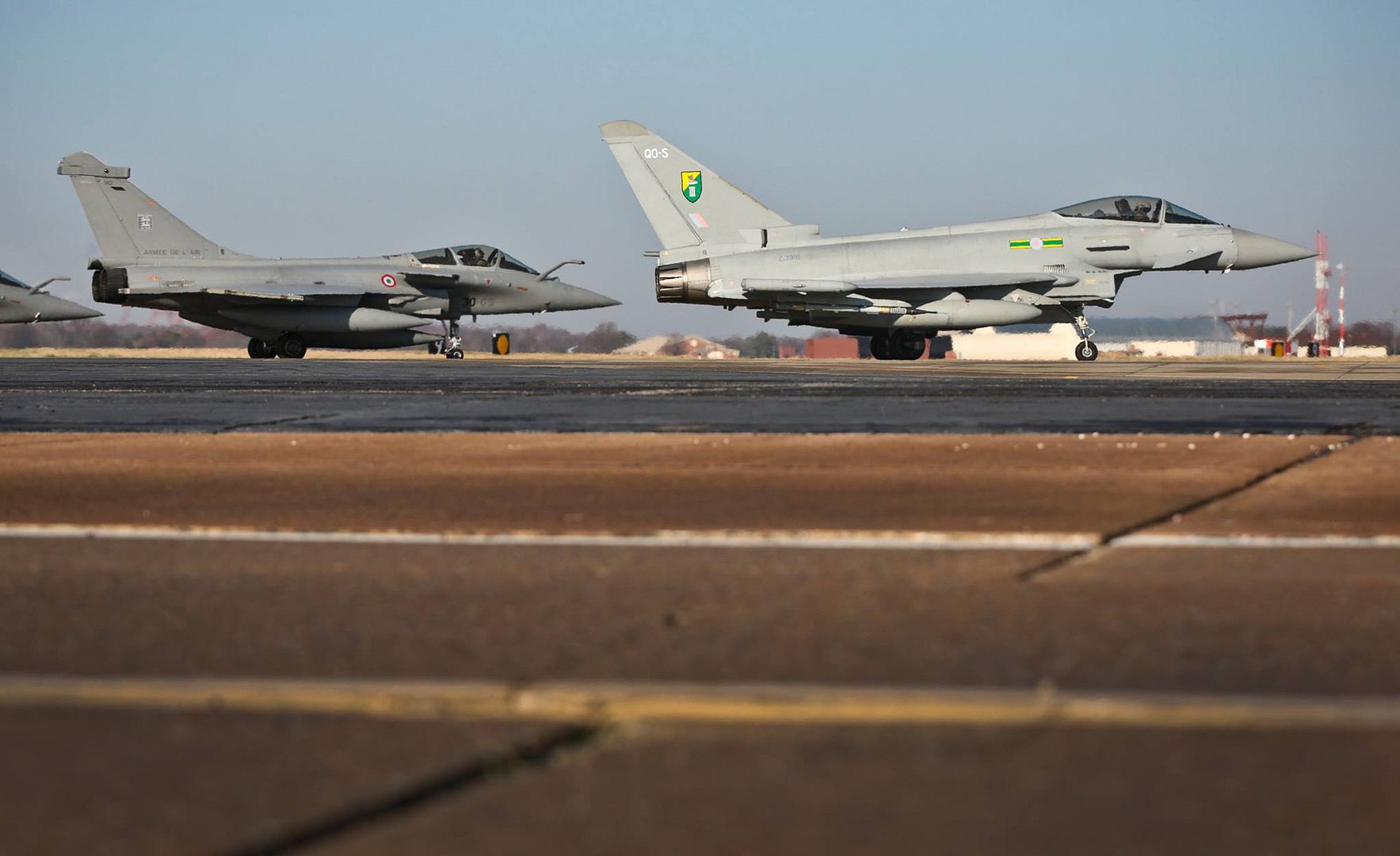
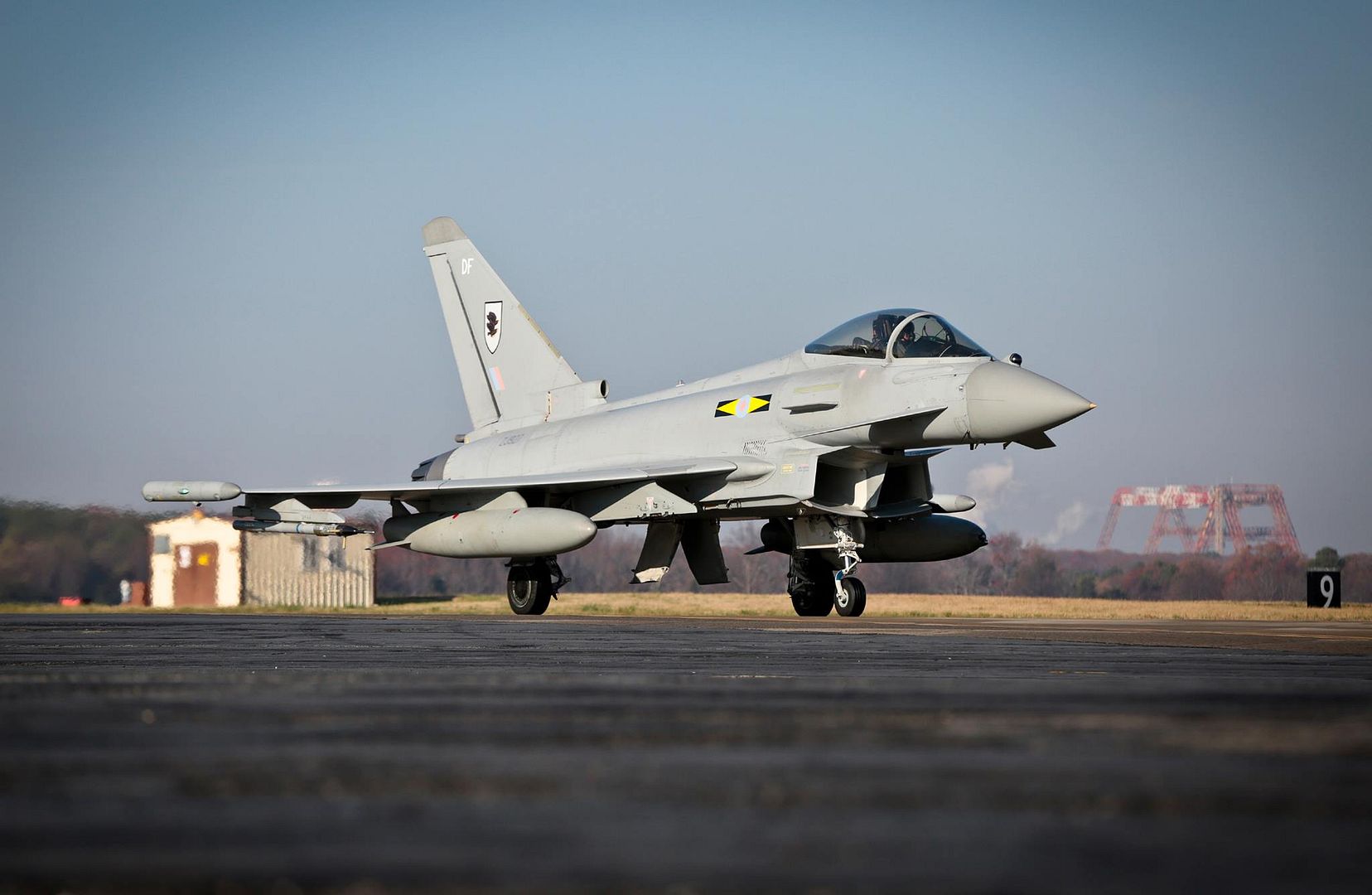
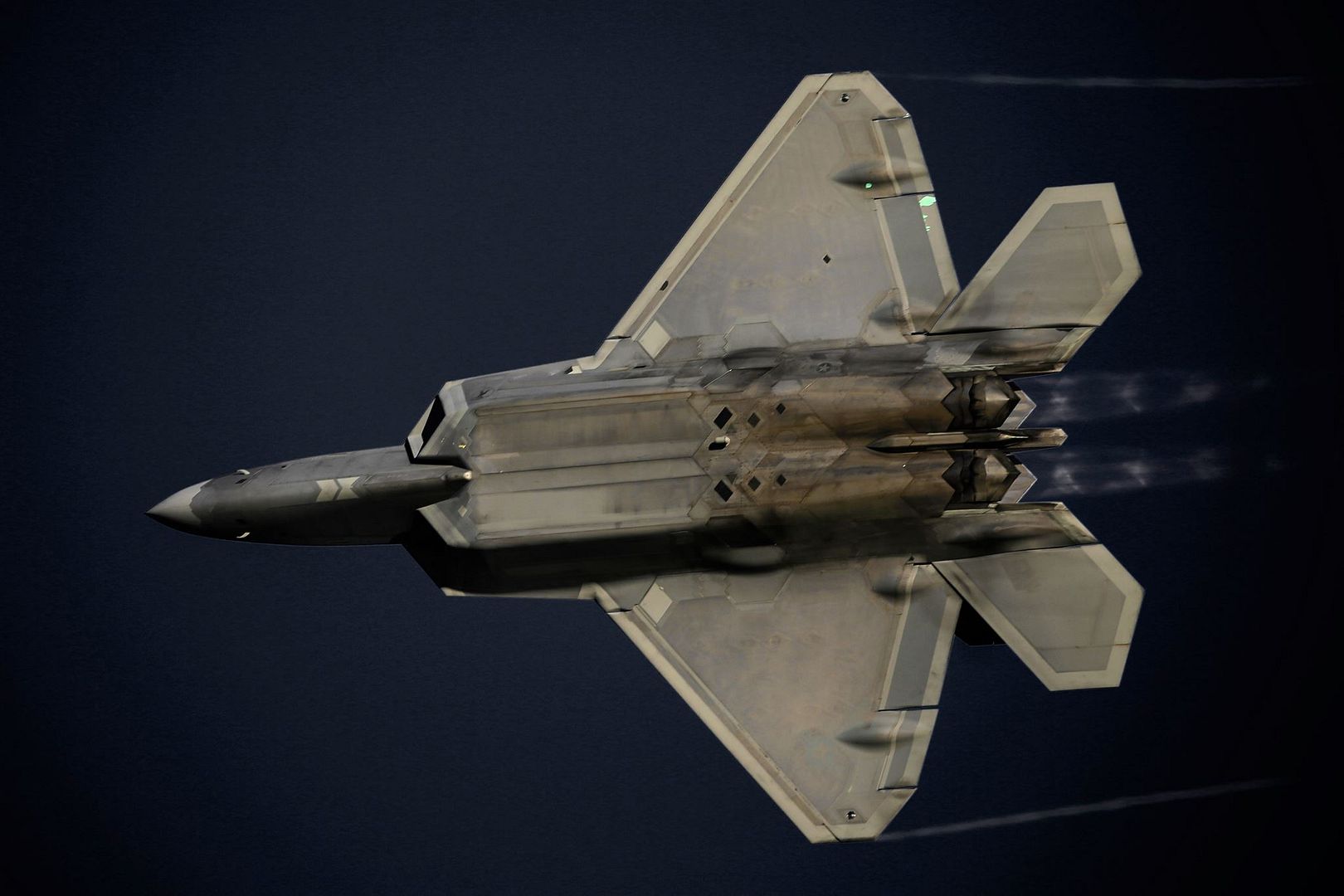
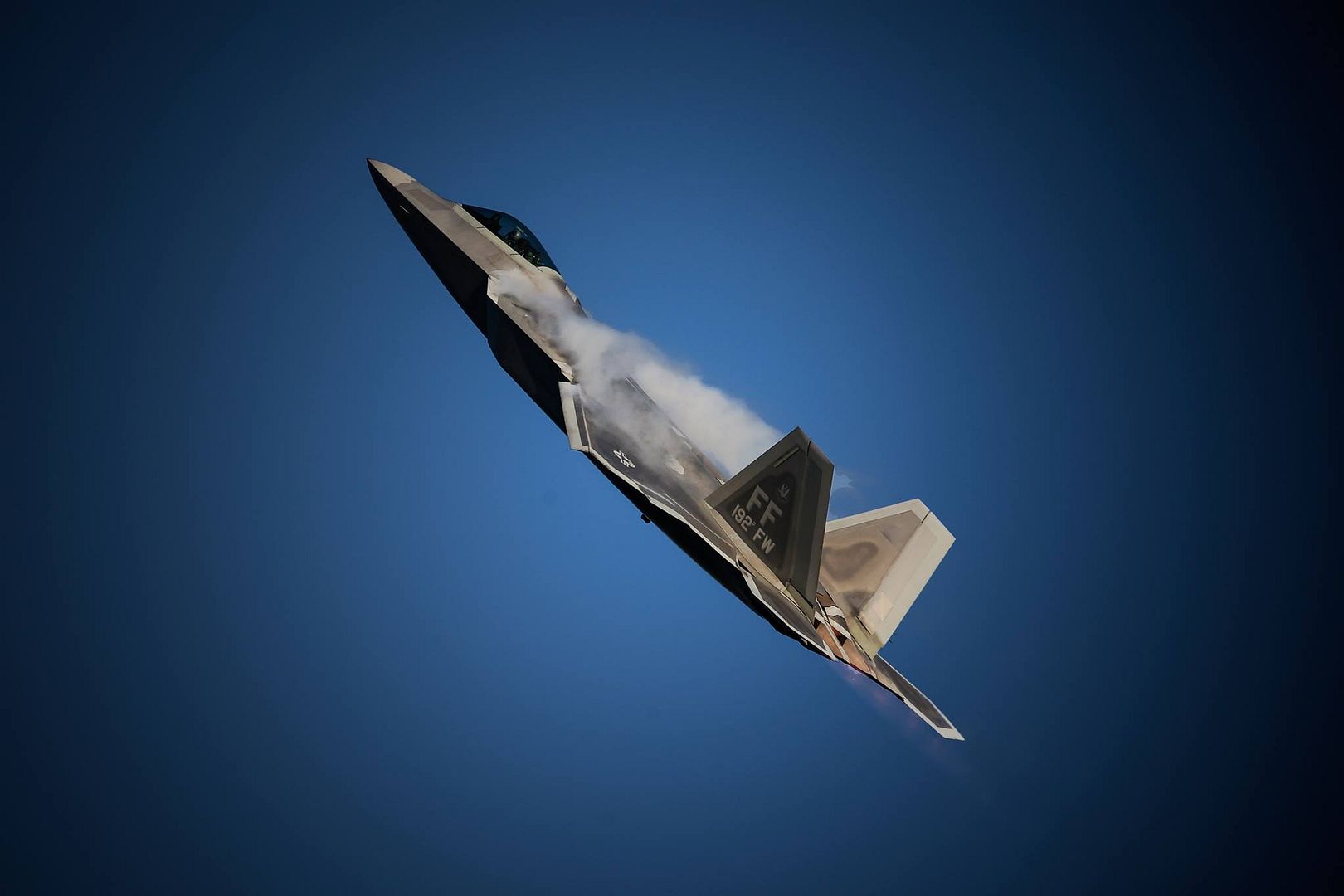

The rasping roar of twin EJ200 jet engines cuts over the constant high-pitched whistle of taxiing British, US and French jet fighters as a Royal Air Force Typhoon accelerates down the runway. The aircraft lifts, climbs steeply, banks hard to the right and disappears into the distance. For the next twenty minutes, more Typhoons, US F-22 Raptors and French Rafales repeat the scene to join a deadly aerial information war game in the sky.
The aircraft are flying in the first major exercise of many, designed to hone air combat interoperability between the three red, white and blue nations. This follows the re-signing of the Tri-Lateral Strategic Initiative by each country?s most senior air force officer in July this year.
Explaining the purpose of the exercise, held at Langley Air Force Base, Virginia, the RAF?s Chief of the Air Staff, Air Chief Marshal Sir Andrew Pulford said:
?This is a fantastic opportunity for European air forces to get alongside the United States Air Force to start delivering true interoperability across Europe and across NATO.
?The important thing is our three air forces can operate together as one. We represent three nations from a very strong coalition, which has delivered peace to Europe since the end of the Second World War.
?This is three air forces that are demonstrating that we can and always have worked well together, that we still can and still do, and it doesn?t matter whether we are operating over Iraq or Syria, or exercising here on the east coast of the US, these are three air forces operating as one team and for the common good.?
The RAF?s Typhoon and the French Rafale are regarded as fourth generation jet fighters while the considerably more expensive F-22 Raptor is seen as fifth generation.
A U.S. Air Force A-10 ?Warthog? flies overhead, simulating close air support during Platinum Lynx 16-2 at Smardan Training Area, Romania, Dec. 11, 2015. The U.S. Air Force partnered with Marines from Combined Arms Company, Black Sea Rotational Force, Romanian and Moldovan ground forces during the NATO-led exercise, strengthening combat readiness and improving collective capabilities. (U.S. Marine Corps photo by Lance Cpl. Adam D. Edwards/Released)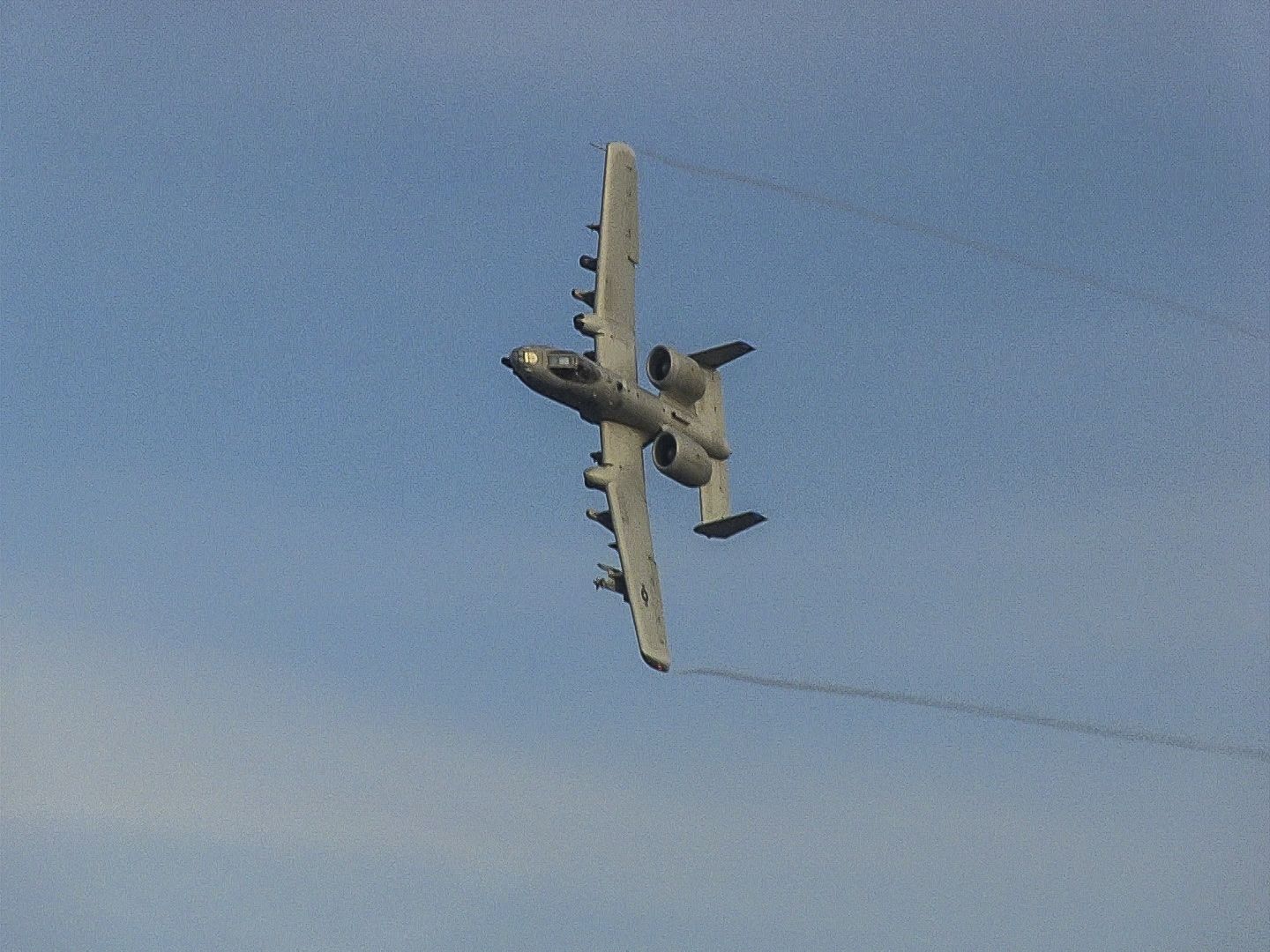
9 December 2015 Headline news
More than a decade after its maiden flight, the popularity of Airbus? A380 has never been higher among airline passengers around the world ? evidenced in part by this game-changing jetliner?s recent recognition as Best Aircraft Type by the U.S. publication Global Traveler.
The honour was voted by Global Traveler?s travel-savvy readership as part of its 11th annual Tested Reader Survey Awards, which were presented last night during a ceremony held in Beverly Hills, California, USA. It marked the first time the Best Aircraft Type distinction was won by a non-Boeing airliner.
On hand to accept the award on 8 December was Airbus' Head of A380 Business Acquisition, Didier Nasarre ? who in his speech explained how passenger preference increases brand value for airlines, citing the A380 as a primary example.
The A380 provides a typical capacity of 544 passengers in a 4-class configuration, seated on two spacious decks. Boosting the strong customer appeal is its unmatched passenger comfort and quietness, to the point where 65 per cent of passengers would take the extra effort to fly on an A380, according to recent studies.
Airbus knows how much passengers appreciate the A380, as well as how vocal they can be. It is for this reason the company launched its A380love.com website with a digital ?social wall? that gathers and displays all the incredible feedback from A380 travellers worldwide.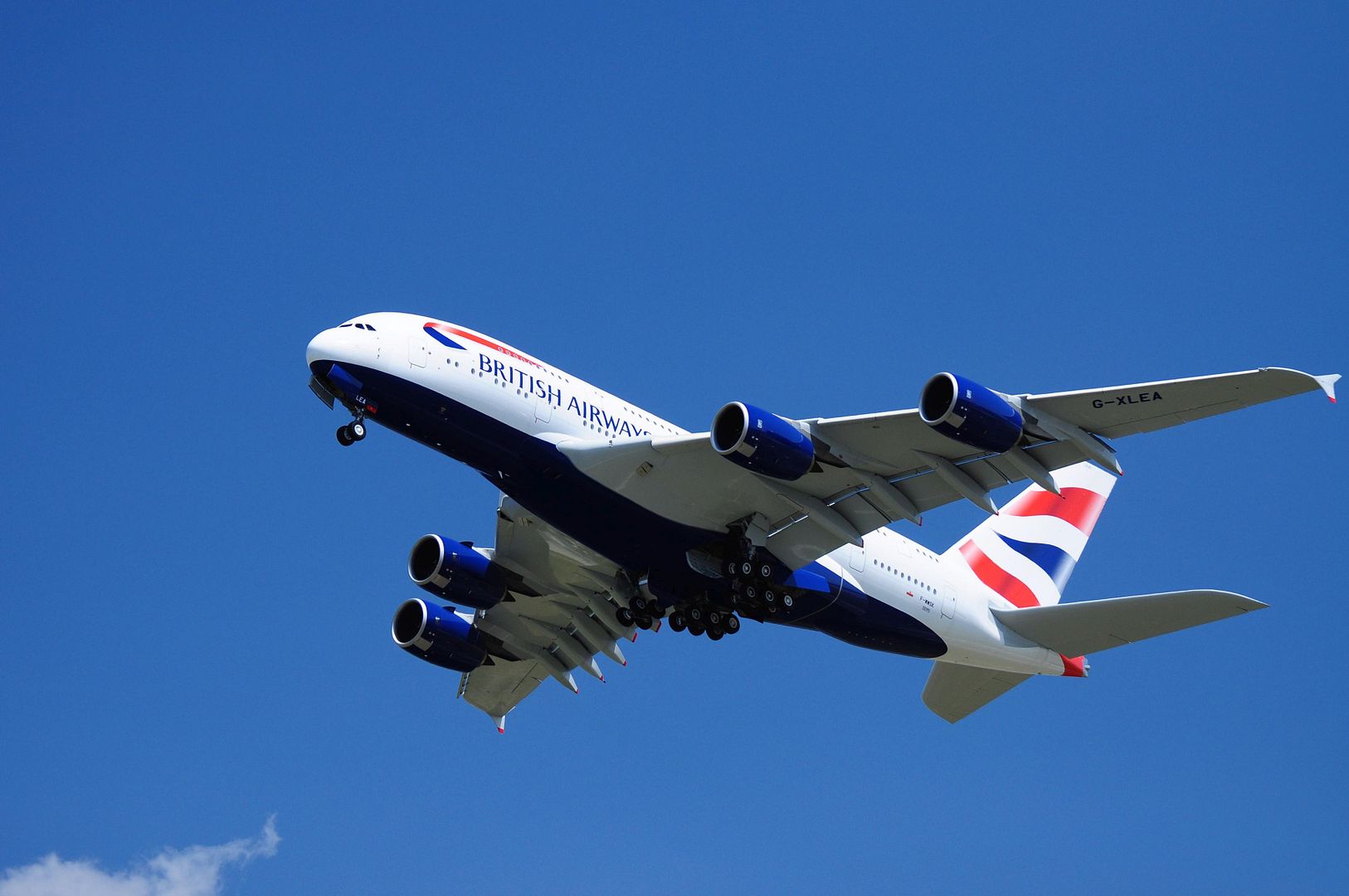
-
 Main AdminAn Air Task Force ? Iraq aircraft technician inspects the nose landing gear of a Royal Canadian Air Force CF-18 Hornet on the flight line at Camp Patrice Vincent, Kuwait, during Op IMPACT on December 11, 2015.
Main AdminAn Air Task Force ? Iraq aircraft technician inspects the nose landing gear of a Royal Canadian Air Force CF-18 Hornet on the flight line at Camp Patrice Vincent, Kuwait, during Op IMPACT on December 11, 2015.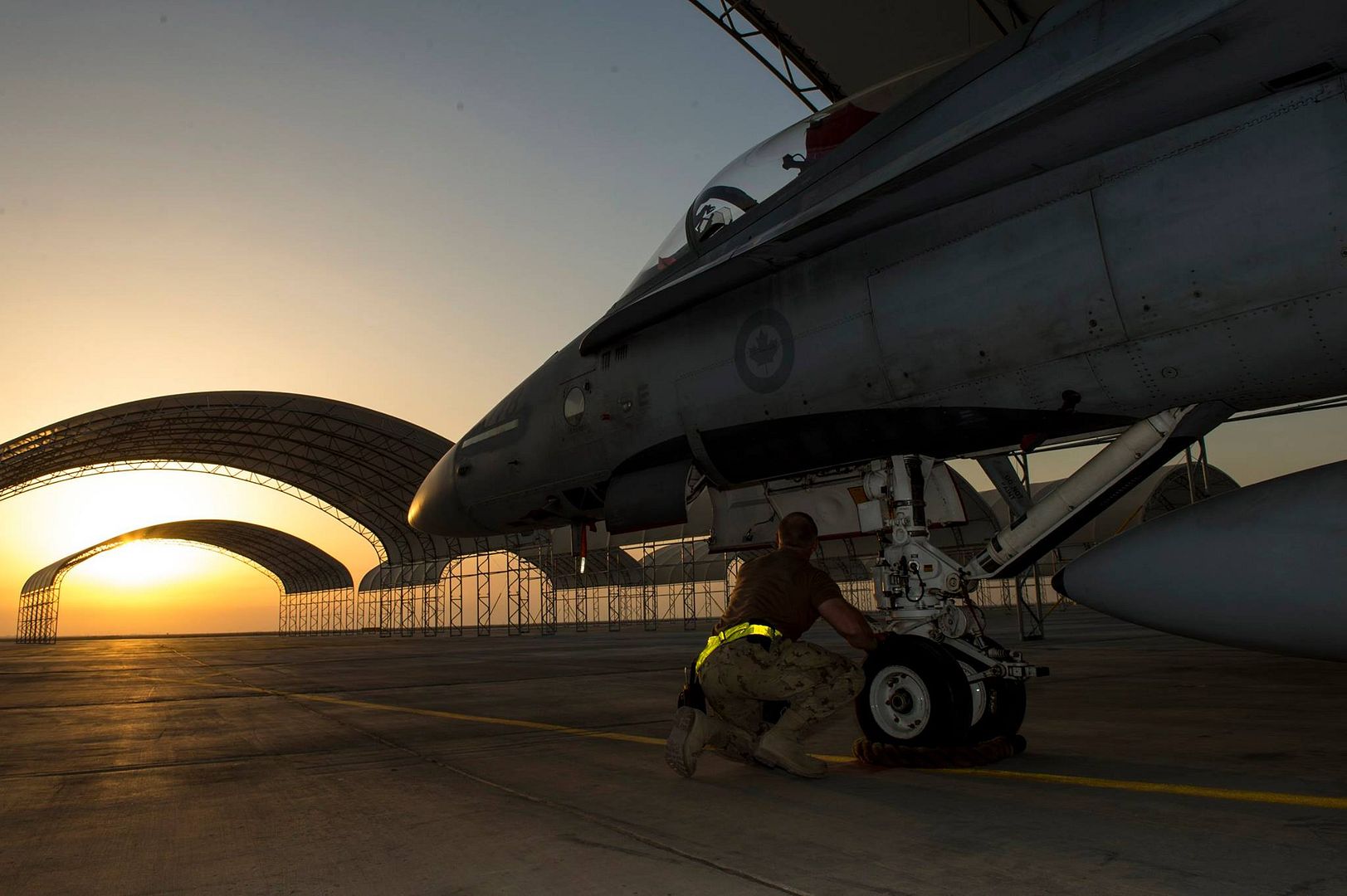
An F-16 Fighting Falcon receives fuel from a KC-135R Stratotanker during exercise Razor Talon Dec. 14, 2015, over the coast of North Carolina. The aircrew and other support units from multiple bases conducted training missions designed to bolster cohesion between forces. (U.S. Air Force photo/Senior Airman John Nieves Camacho)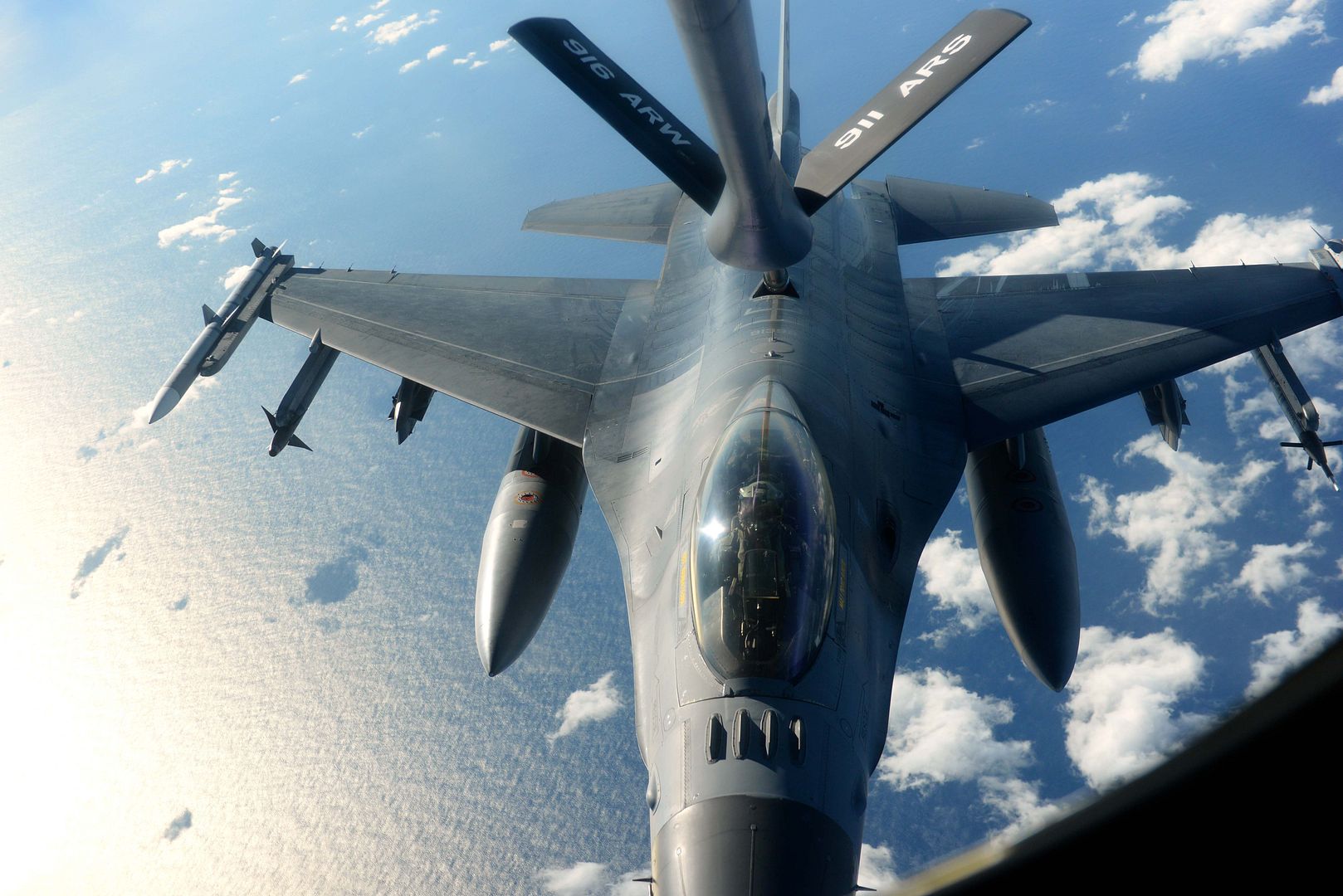
An F-22 Raptor and a T-38 Talon from Tyndall Air Force Base, Fla.; F-16 Fighting Falcons from Shaw AFB, S.C. and Eielson AFB, Alaska; F-35 Lightning II from Eglin AFB, Fla. sit on the Tyndall flightline Dec. 17 during the Checkered Flag 16-1 exercise. Checkered Flag 16-1 is a large-force exercise that simulates employment of a large number of aircraft from a simulated deployed environment. (U.S. Air Force photo by Senior Airman Sergio A. Gamboa/Released)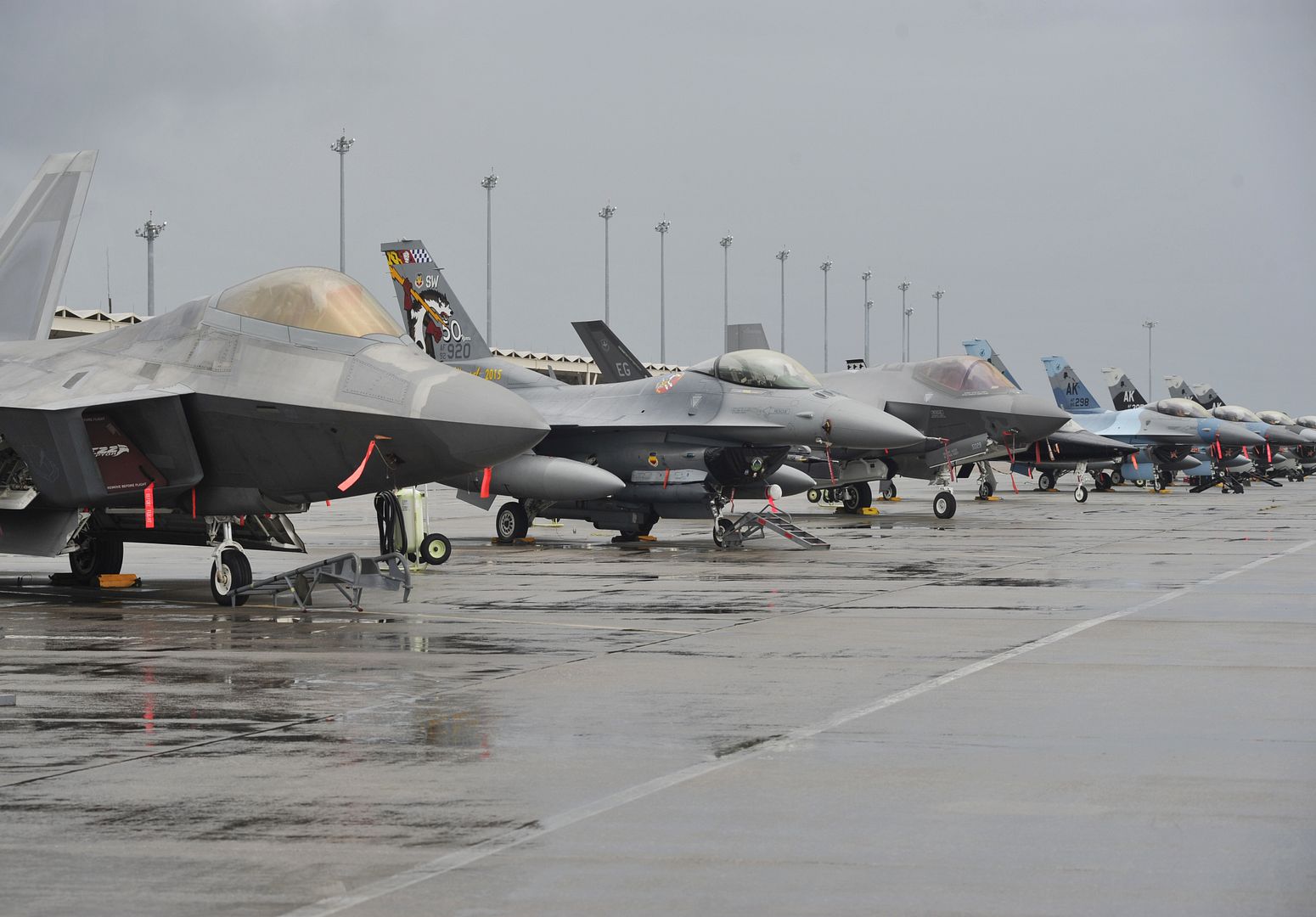
A Shaw Air Force Base, S.C. F-16 Fighting Falcon is parked next to an F-35 Lightning II from Eglin AFB, Fla. Dec. 17 at the Tyndall AFB, Fla. flightline. Both Air Force bases participated in the Checkered Flag 16-1exercise, a large-force exercise that simulates employment of a large number of aircraft from a simulated deployed environment. (U.S. Air Force photo by Senior Airman Sergio A. Gamboa/Released)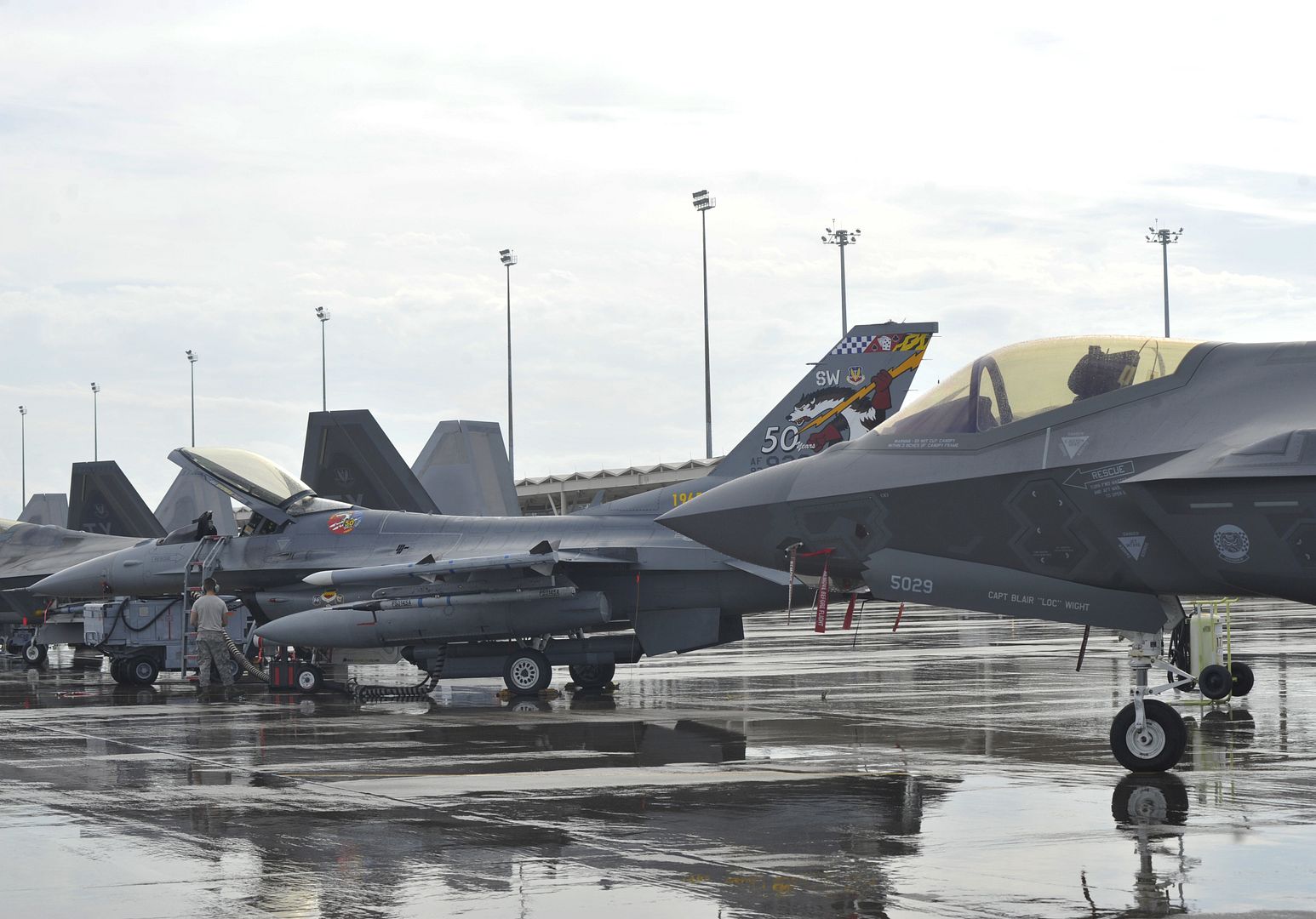
LEEDS, United Kingdom, Dec. 17, 2015 /PRNewswire/ -- Boeing (NYSE: BA) and UK Leisure Airline Jet2.com finalized an order today for three Next Generation 737-800s, valued at $288 million at current list prices.
Jet2.com previously ordered 27 Next Generation 737-800s in September 2015 and operates an all-Boeing fleet of more than 60 airplanes.
Jet2.com is a subsidiary of Dart Group PLC, a UK Aim listed Leisure Travel and Distribution & Logistics Group. The Company commenced commercial aircraft operations in 1983 and passenger flights to sun destinations from Leeds Bradford Airport in 2003.
Jet2.com now flies over three million customers each year through a combination of package holidays and flight only services to 55 destinations across 364 holiday resorts from seven Northern departure bases.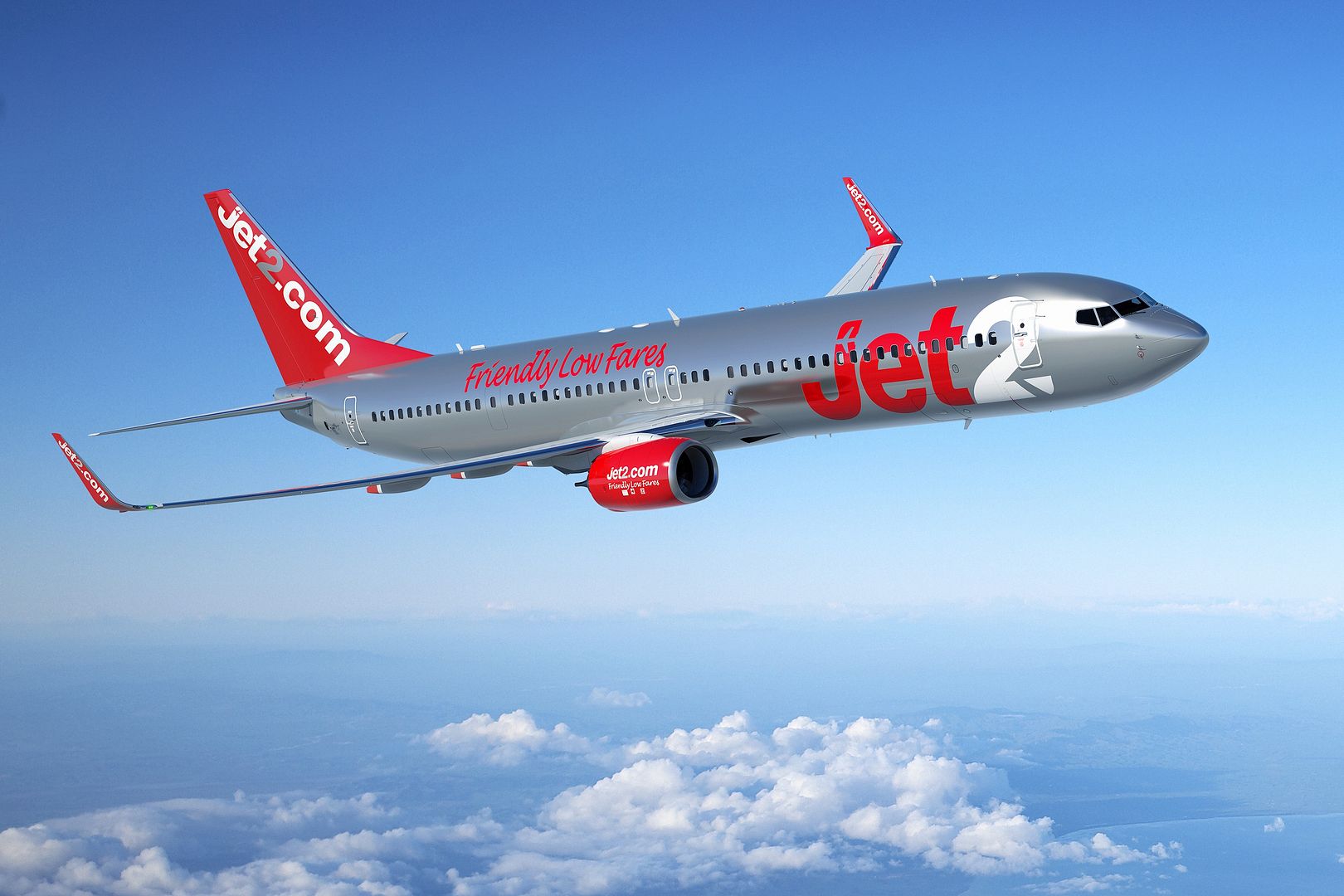
NORTH CHARLESTON, S.C., Dec. 17, 2015 - Boeing [NYSE: BA] South Carolina marked a major milestone this week as the site?s 100th 787 Dreamliner rolled out of the factory. The airplane now begins system checks, fueling and engine runs on the flight line. The 787-8 will be delivered to American Airlines next year.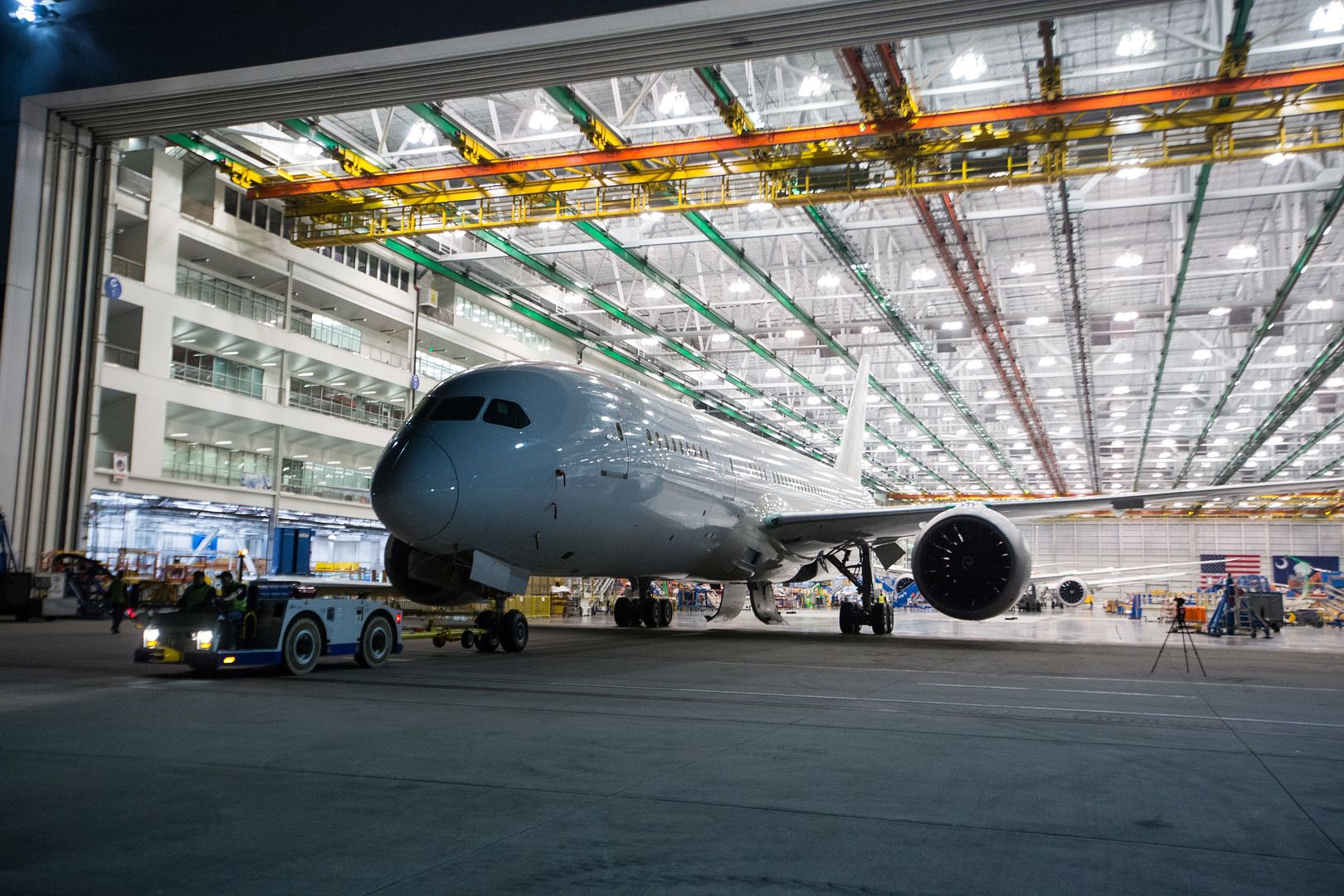
18 December 2015 Press Release
LATAM Airlines Group, made up of LAN Airlines and TAM Airlines, has taken delivery of its first A350 XWB in Toulouse, France. In doing so, TAM will become the first airline in the Americas to operate the all-new airliner and the fourth worldwide. TAM?s aircraft is configured in a premium two-class layout, with 348 seats, comprising of 30 Premium Business Class and 318 Economy. LATAM has ordered a total of 27 A350 XWB aircraft for the Group.
The carrier will start operating the A350 XWB commercially in January 2016 between Sao Paulo and Manaus, Brazil, as part of continued training and crew familiarization. This will be followed by operations from Sao Paulo to Miami in March and then to Madrid in April.
?Adding this aircraft into our fleet not only proves our commitment to maintaining one of the youngest and most modern fleets in the world, but it also strengthens our relationship with Airbus, a true partner with whom we have grown in the last decades,? said Roberto Alvo, CEO of International & Alliances, LATAM Airlines Group.
?The A350 XWB brings us the best of both worlds, complementing our existing eco-efficient fleet and the best in aviation technology to ensure even greater levels of comfort for our passengers," said Claudia Sender, CEO of TAM S.A.
"The A350 XWB symbolises Airbus? mission to innovate and to provide the market with the world?s leading aircraft,? said Fabrice Br?gier, Airbus President and CEO. ?Offering unrivalled passenger flying experience and operational productivity, the A350 XWB is the perfect aircraft to support TAM?s long-haul strategy to Europe and the United States?.
Over the years, Airbus and TAM have grown together to become partners in building today?s dynamic aviation market in the region. In 1998, TAM became an Airbus operator with the A330-200. Together, LAN & TAM have ordered nearly 380 Airbus aircraft with more than 250 Airbus aircraft in operation. Today, LATAM is the biggest Airbus customer in the Southern Hemisphere and one of the top 10 Airbus customers worldwide.
The world?s latest generation airliner, the A350 XWB, is the newest member of Airbus? modern, comfortable and efficient wide-body aircraft family. The long-range A350 XWB features the most modern aerodynamic design, carbon fibre fuselage and wings, plus new fuel-efficient Rolls-Royce Trent XWB engines that together bring 25 percent reduction in fuel burn and emissions with significantly lower maintenance costs. For passengers, it brings new levels of in-flight comfort, with an extra-wide cabin offering more personal space in all classes, including 18-inch wide seats as standard in economy class.
Including the TAM delivery, so far in 2015 Airbus has delivered 13 A350 XWBs to four customers in four continents. Airbus has recorded a total of 775 firm orders from 41 customers worldwide, making the A350 XWB one of the most successful wide body aircraft ever.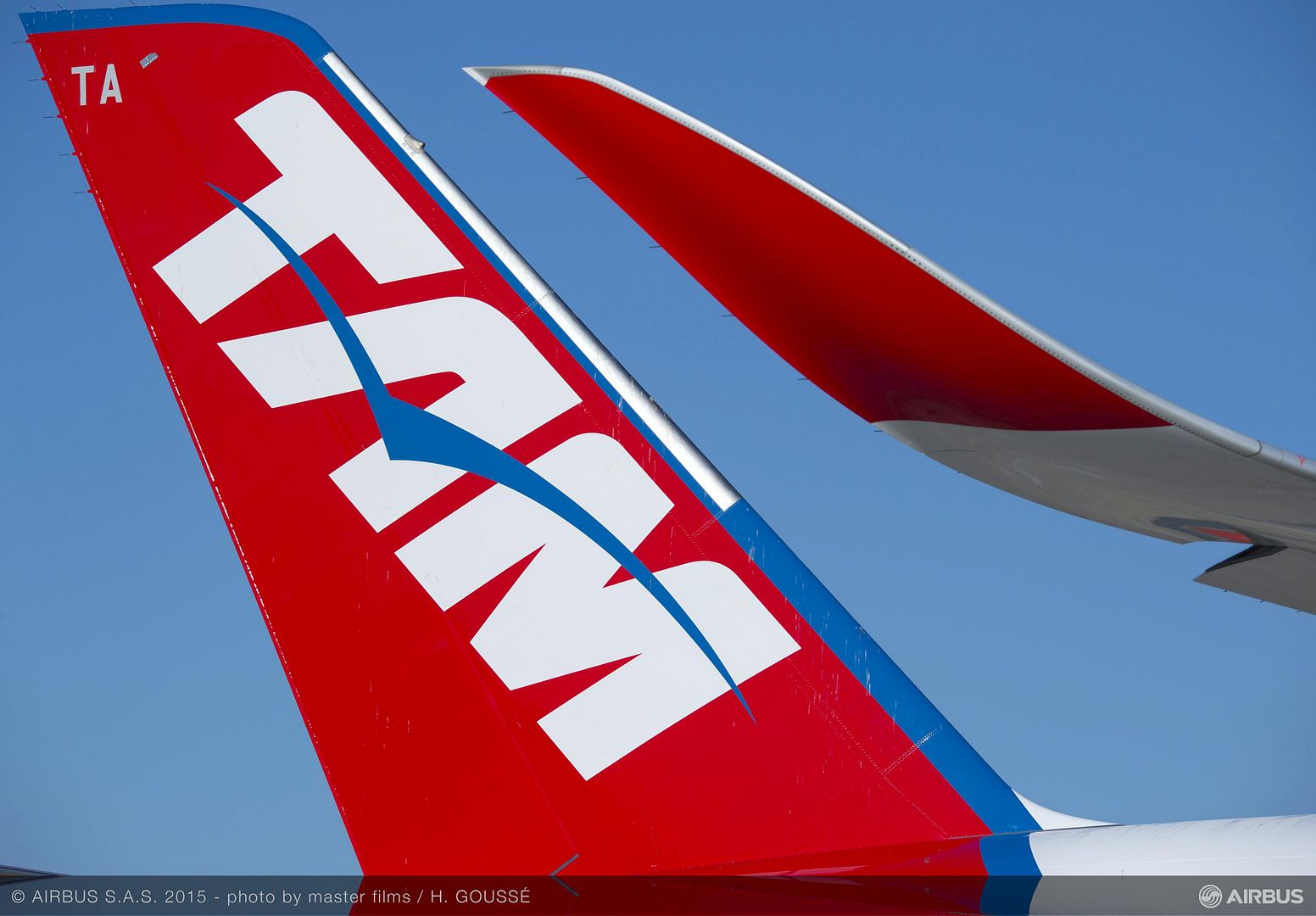
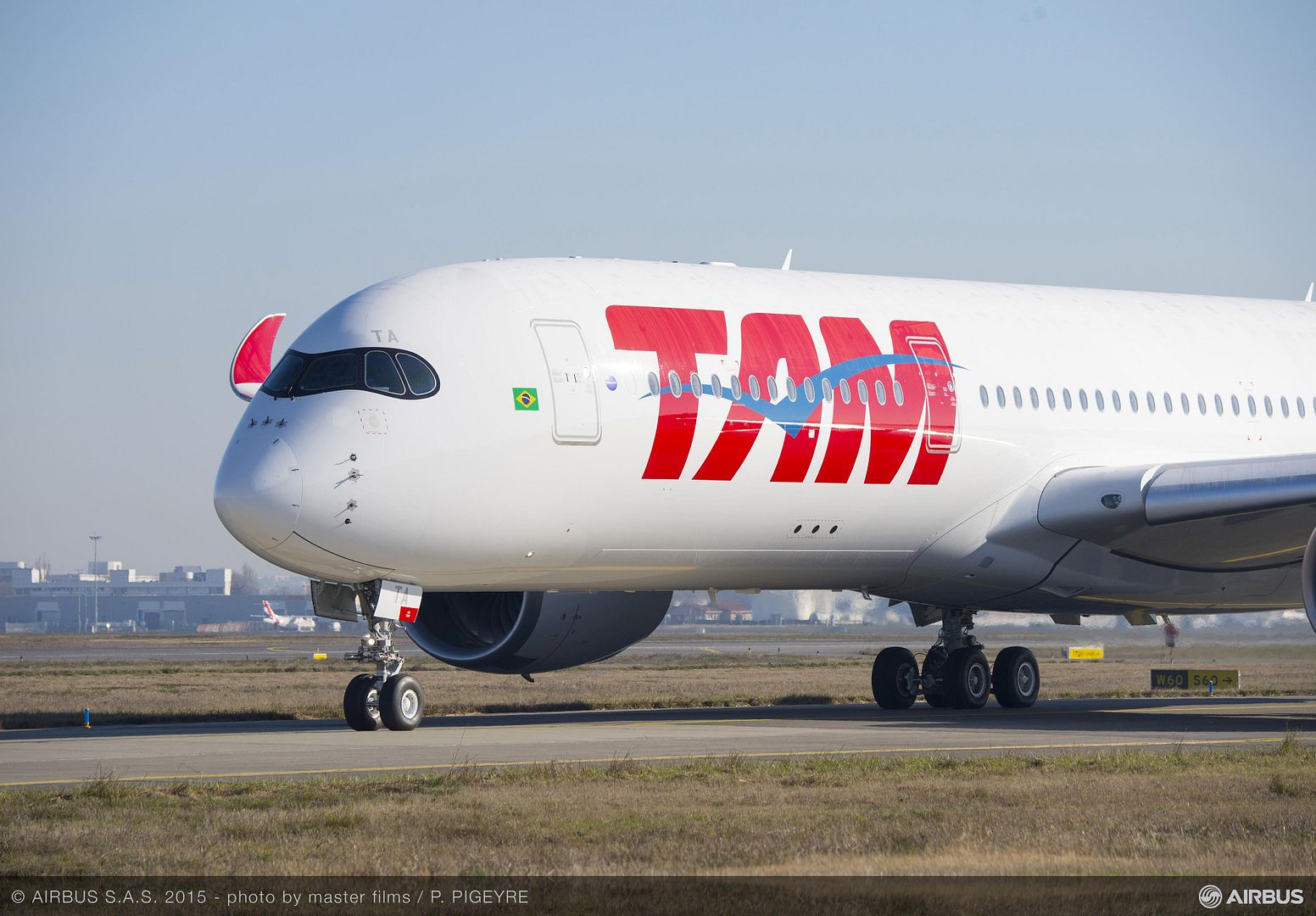
Korea Aerospace Industries (KAI) has revealed the prototype that will form the basis of Lockheed Martin?s bid for the US Air Force?s T-X next generation trainer competition.
Based on the T-50 family of trainer/light fighter aircraft, the company?s ?T-X demonstrator aircraft? will conduct ground and flight tests in 2016, says KAI in an email to Flightglobal. In 2017, KAI plans flight tests in the USA.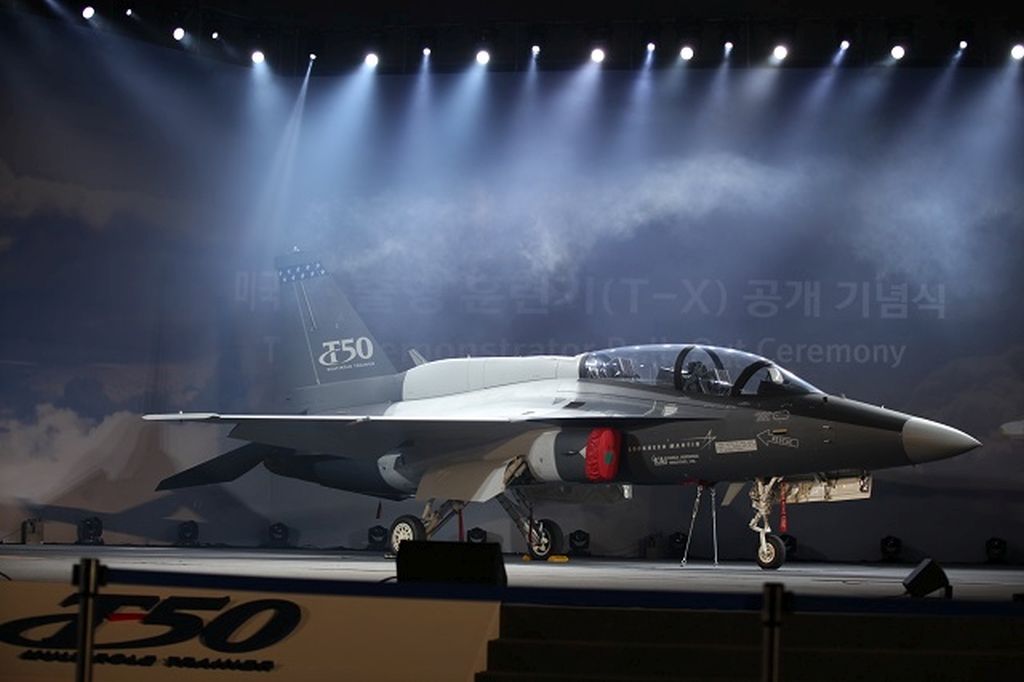
-
 Main AdminWorld's only PBJ-1J, starts enines.
Main AdminWorld's only PBJ-1J, starts enines.

EDWARDS AIR FORCE BASE, Calif. (AFNS) -- NATO's first Alliance Ground Surveillance aircraft arrived at Edwards Air Force Base Dec. 19 completing its first flight.
The test flight marked the start of six months of ground and airborne testing at Edwards AFB before the aircraft is sent to its new home in Sigonella, Italy.
NATO AGS is a derivative of the wide-area surveillance RQ-4 Global Hawk, with a few small changes in the communications software to meet certain criteria for operation in Europe.
"They've got a (few) differences, but it's very similar to a U.S. Air Force Global Hawk," said Roberto Garnica, from the Global Vigilance Combined Test Force and the NATO AGS project manager.
The first flight allowed the test team to observe the flying characteristics of the aircraft during a variety of flight performances and at varying altitudes.
According to Garnica, this test varies from other Global Hawk testing because the Global Vigilance CTF is not the executing test organization. While Edwards Range Control and safety officers will be present, responsibility for the test and aircraft falls on Northrop Grumman's team including the pilots, test conductors and directors.
"Because it is a Direct Commercial Sale to NATO, the Air Force is never going to own or possess it. So we are a participating test organization," Garnica said.
The first flight was an important milestone for Northrop Grumman Corp. and NATO Alliance Ground Surveillance Management Organization members of NATO's Alliance Ground Surveillance Management Agency.
Northrop Grumman is scheduled to begin ferrying the first NATO AGS aircraft to Italy in 2016. The NATO AGS system will include five aircraft and European-sourced mobile and transportable ground stations that will provide data link connectivity, data processing and exploitation capabilities to multiple deployed and non-deployed operational users.
All 28 alliance nations will take part in the long-term support of the program, but it is initially being procured by 15 NATO nations: Bulgaria, Czech Republic, Denmark, Estonia, Germany, Italy, Latvia, Lithuania, Luxembourg, Norway, Poland, Romania, Slovakia, Slovenia and the U.S.
The final product will be used for collective defense, crisis management and cooperative security.
Like the Block 40 RQ-4 Global Hawk, the unmanned aircraft has the ability to fly for up to 30 hours at a time. The high-altitude, long-endurance system will perform all-weather, persistent wide-area terrestrial and maritime surveillance in near real-time. The NATO-owned and operated system will provide intelligence, surveillance and reconnaissance capabilities to support a range of NATO missions such as protection of ground troops and civilian populations, border control, maritime safety and humanitarian assistance.
The aircraft is equipped with leading-edge technology, including the Multi-Platform Radar Technology Insertion Program sensor. The MP-RTIP sensor will provide critical data to commanders during operations, in any weather, day or night. Utilizing the MP-RTIP sensor, the NATO AGS system will be able to fuse sensor data, continuously detect and track moving objects and provide imagery of selected objects.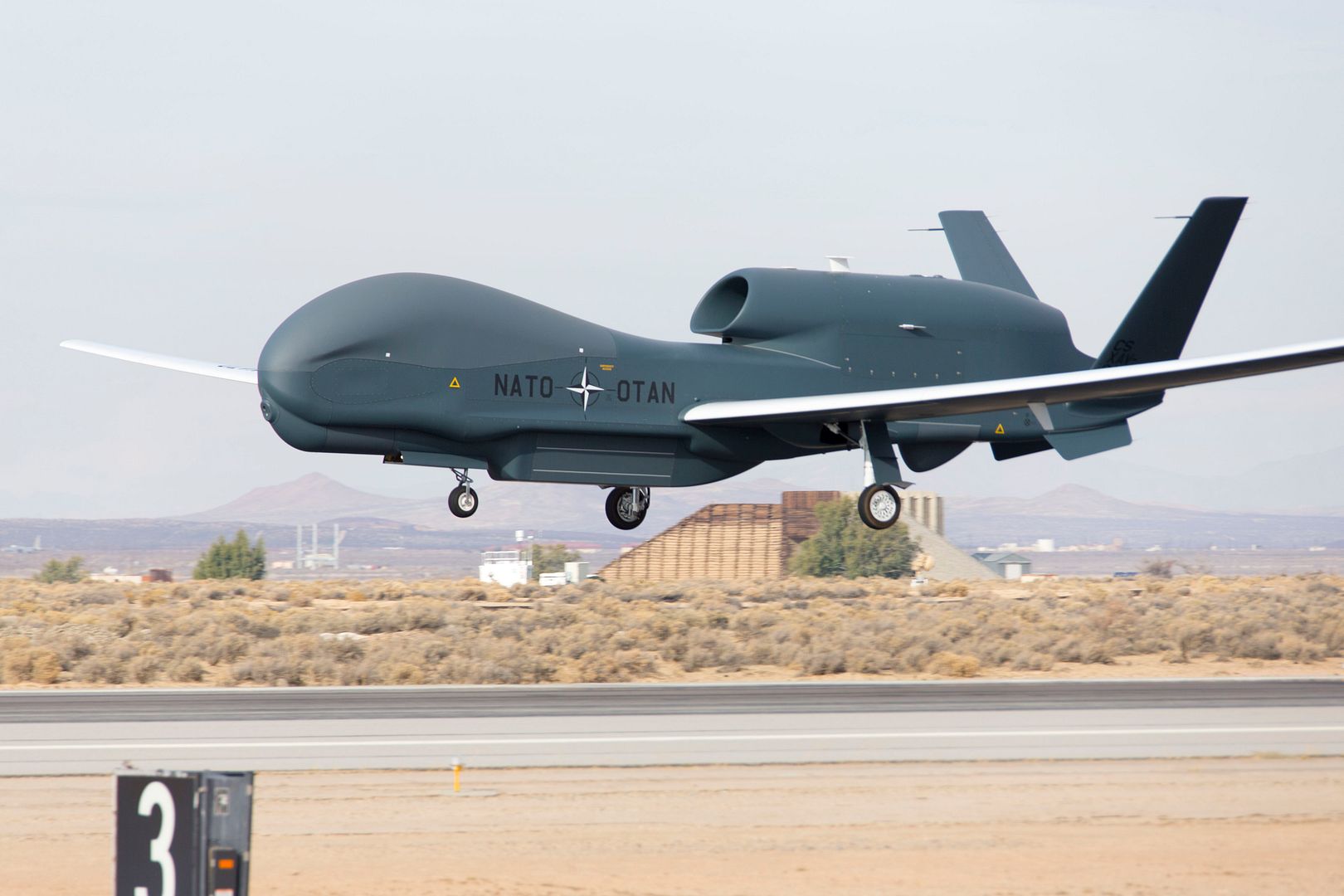
SpaceX has pulled of a monumental feat in aerospace engineering by landing its upgraded first-stage Falcon 9 rocket booster at Cape Canaveral, Florida, while successfully putting 11 Orbcomm communications satellites on orbit.
In the 20th space flight for the Falcon 9 launch vehicle and 6th launch this year, the company won over its doubters by reigniting the first-stage booster stage upon re-entry and bringing it back down to Earth.
?It?s like launching a pencil over the Empire State Building, putting it in reverse, and having it come back down and land on a shoebox on the ground in a wind storm,? says one SpaceX commentator during the historic attempt. ?This stuff is super, super hard,? says another.
LINK - http://www.spacex.com/
Post a reply
- Go to Previous topic
- Go to Next topic
- Go to Welcome
- Go to Introduce Yourself
- Go to General Discussion
- Go to Screenshots, Images and Videos
- Go to Off topic
- Go to Works in Progress
- Go to Skinning Tips / Tutorials
- Go to Skin Requests
- Go to IJAAF Library
- Go to Luftwaffe Library
- Go to RAF Library
- Go to USAAF / USN Library
- Go to Misc Library
- Go to The Ops Room
- Go to Made in Germany
- Go to Campaigns and Missions
- Go to Works in Progress
- Go to Juri's Air-Raid Shelter
- Go to Campaigns and Missions
- Go to Works in Progress
- Go to Skinpacks
- Go to External Projects Discussion
- Go to Books & Resources
